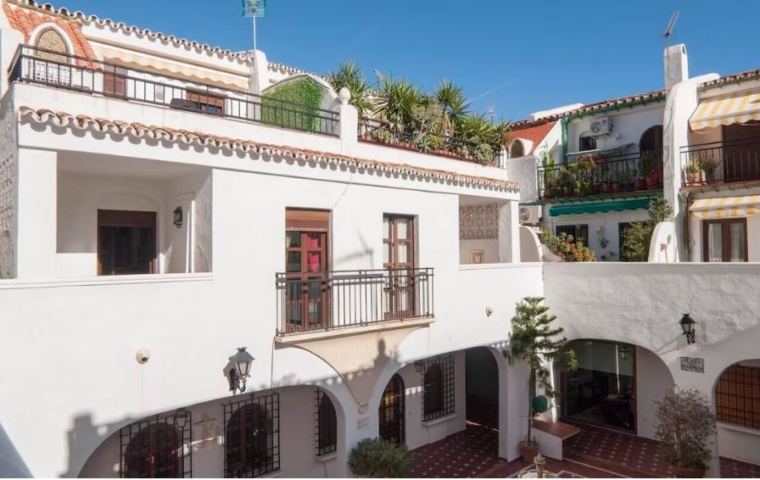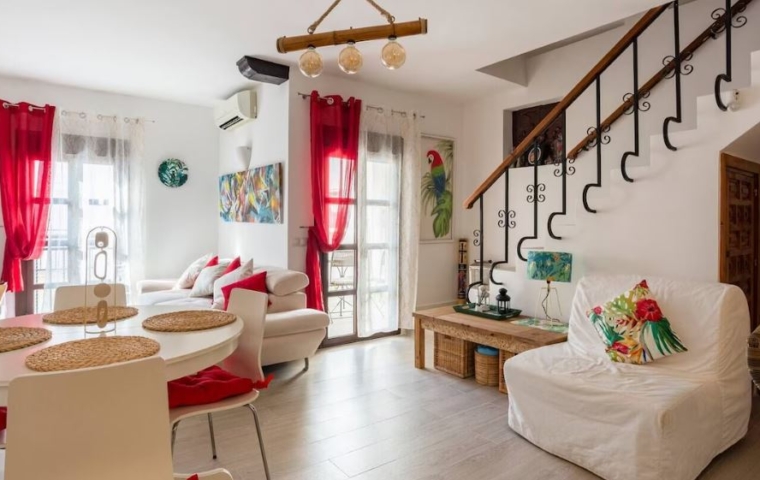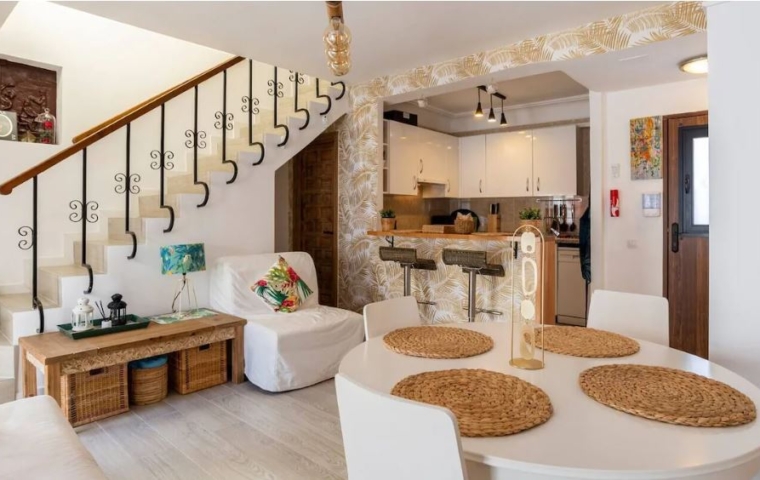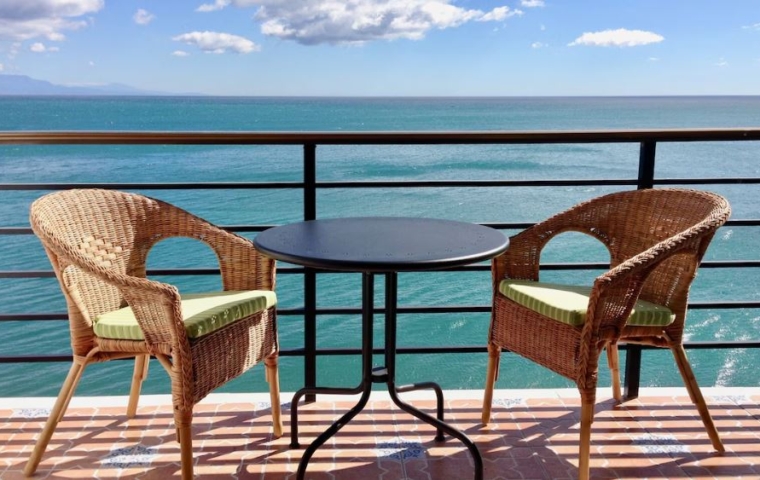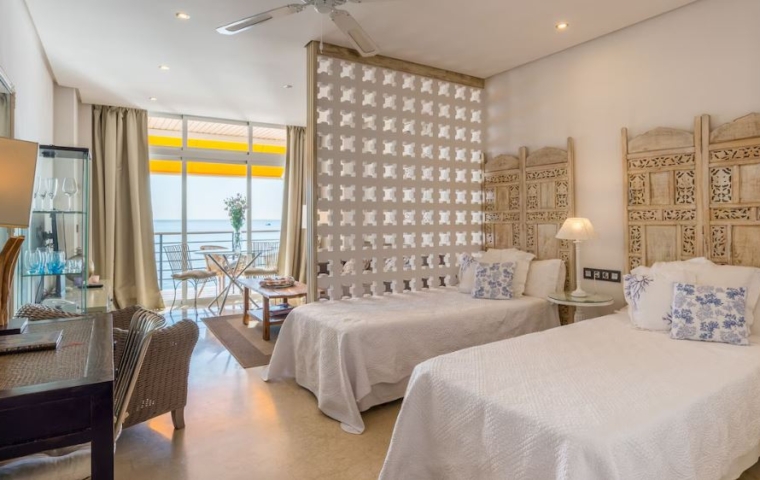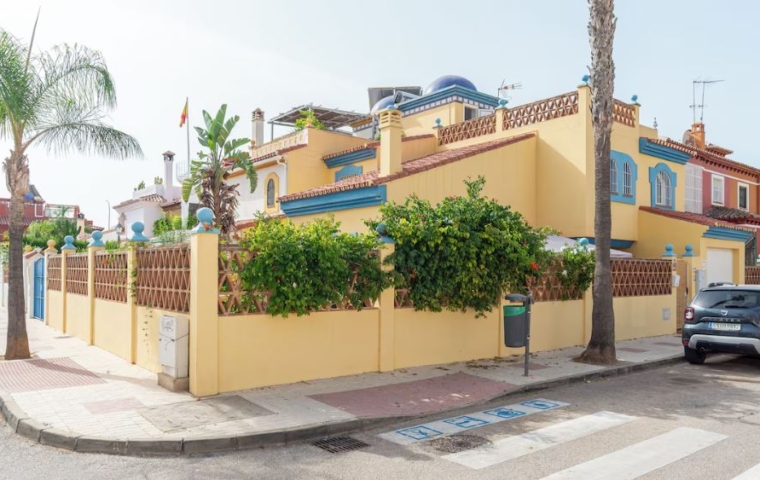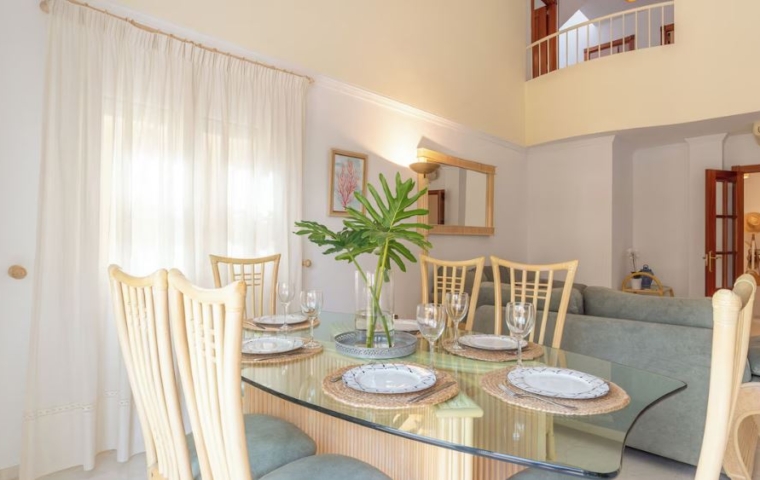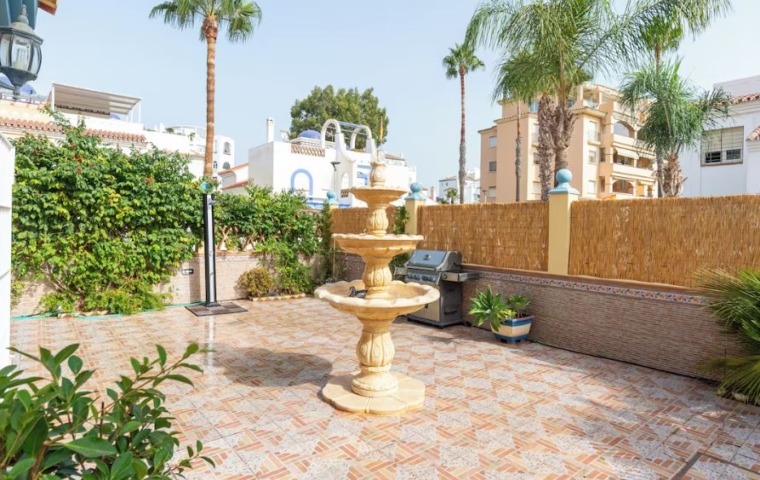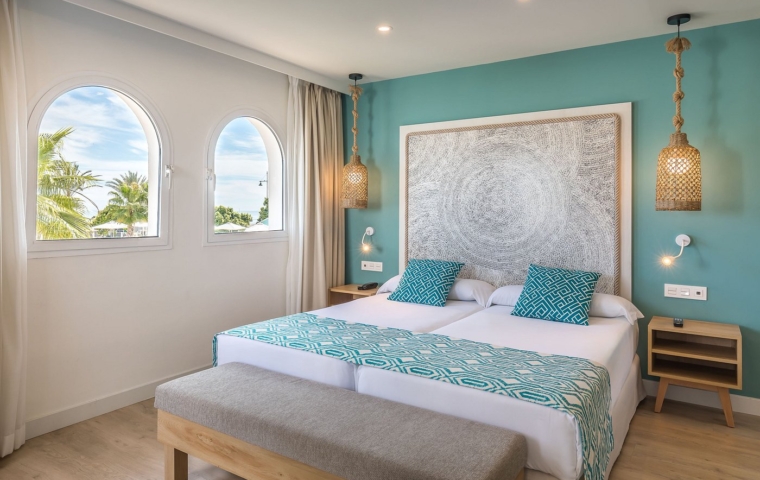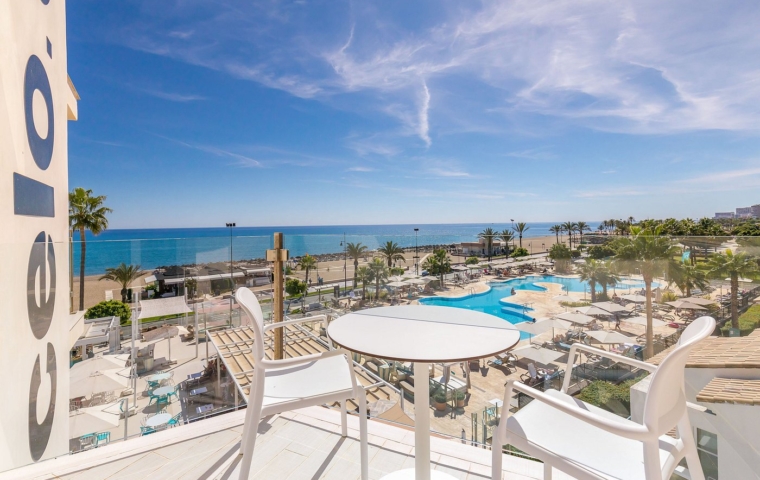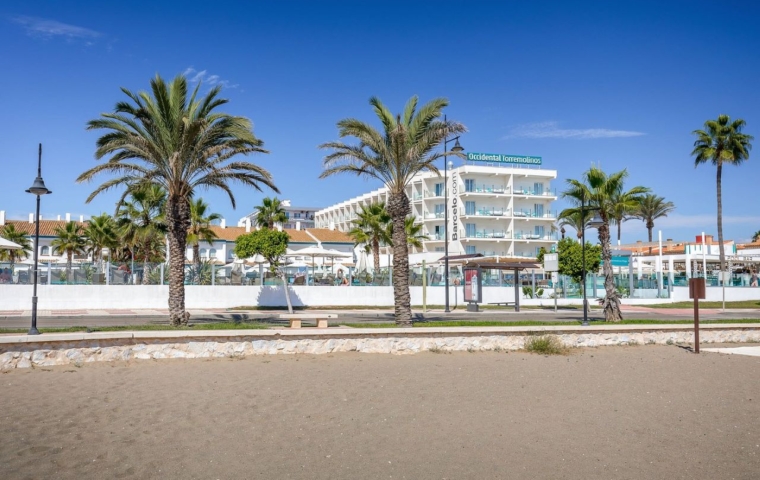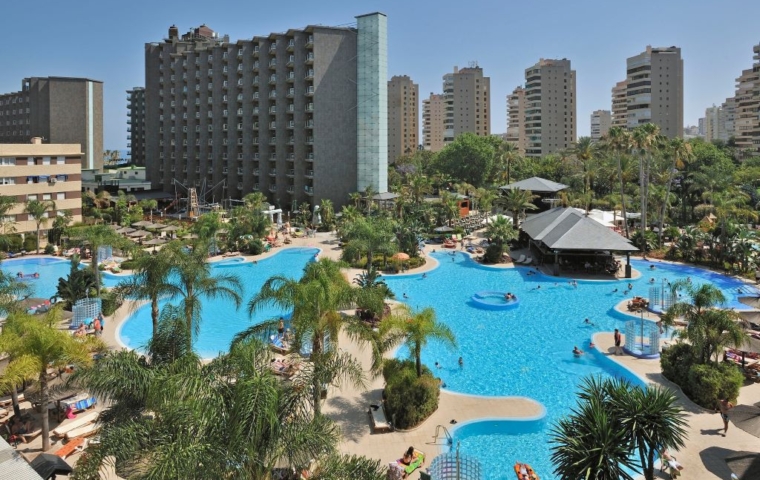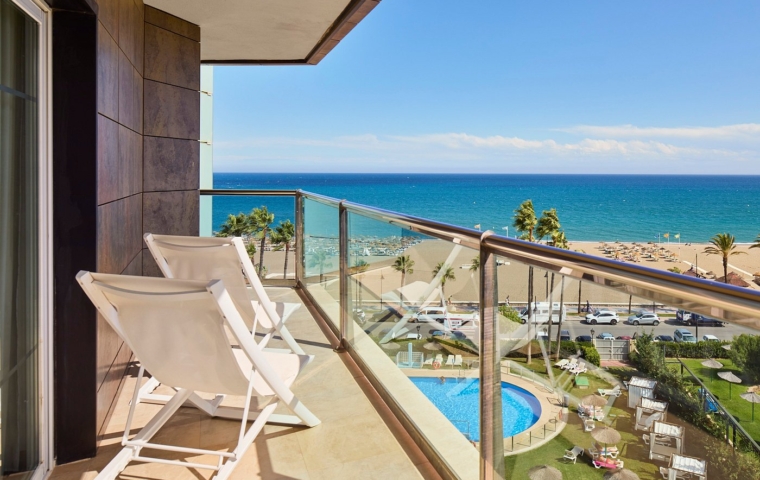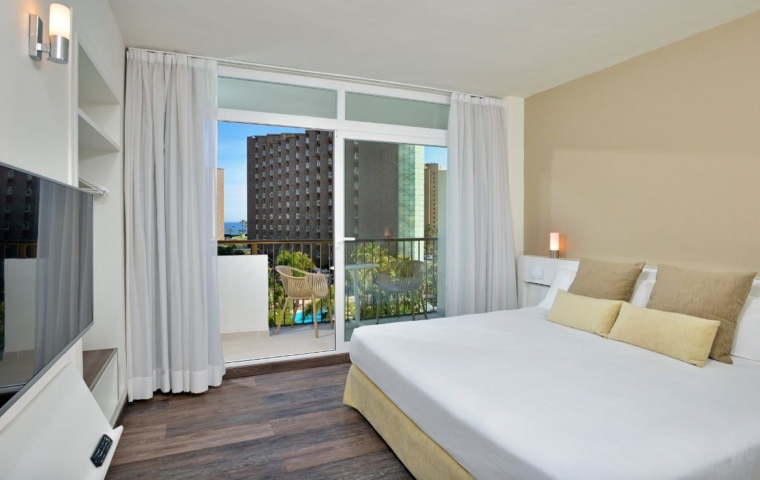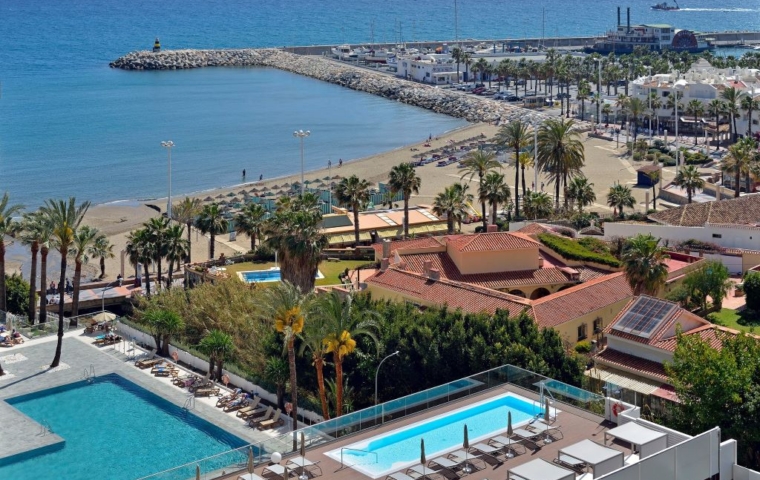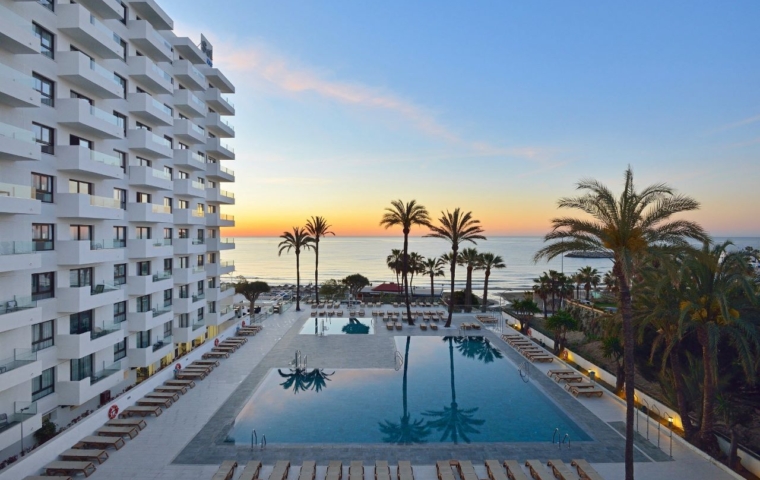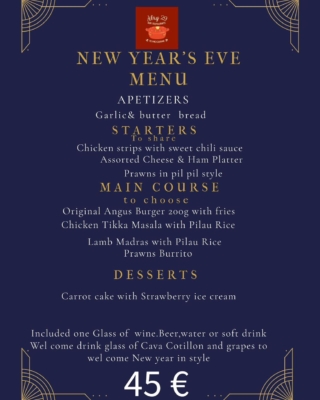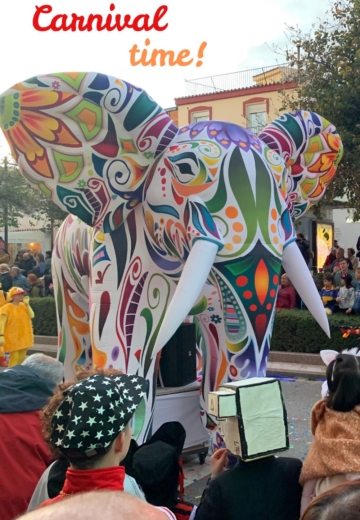Malaga Carnival 2025
Malaga Carnival 2025 will happen mainly in the city center, from February 22 to March 02, 2025, but before that, there will be carnival parties in different districts of Malaga, taking carnival around the city.
The program of Malaga Carnival 2025 has been released by the Carnaval de Malaga Foundation. You can check it in Spanish on the link and in the image below, or right after the image, on the translation. 😉
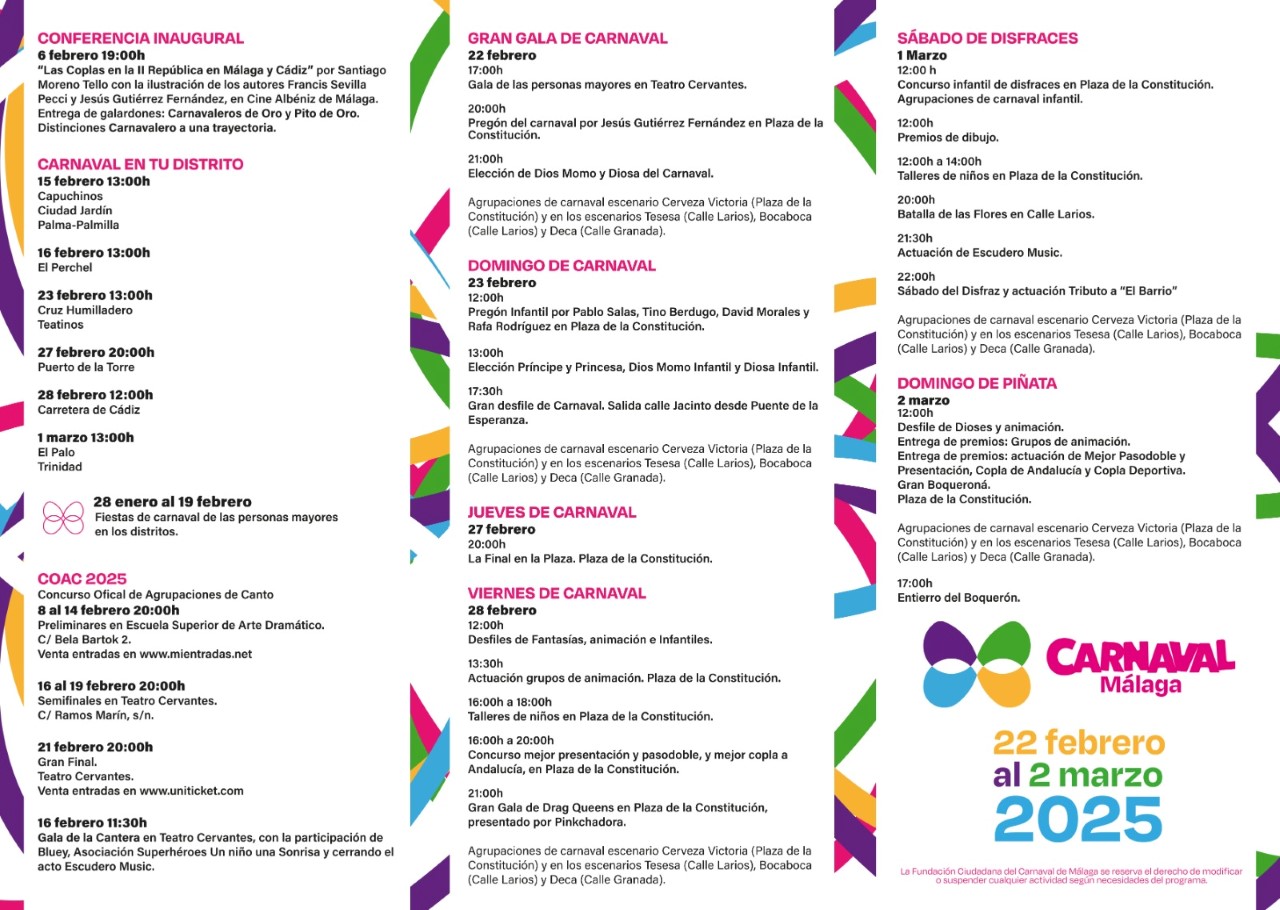
Inaugural Conference
February 6 at 7:00 pm
“The Coplas in the Second Republic in Málaga and Cádiz” by Santiago Moreno Tello with illustrations by Francis Sevilla Pecci and Jesús Gutiérrez Fernández, at Cine Albéniz in Málaga. Awards ceremony: Golden Carnival and Golden Pito. Carnival distinction.
Carnival in your District
Many of the districts (neighborhoods) of Malaga will have their own Carnival parties. Some of these districts are shown on the map below; to see all, check the very cool Callejero de Málaga, source of the image below.
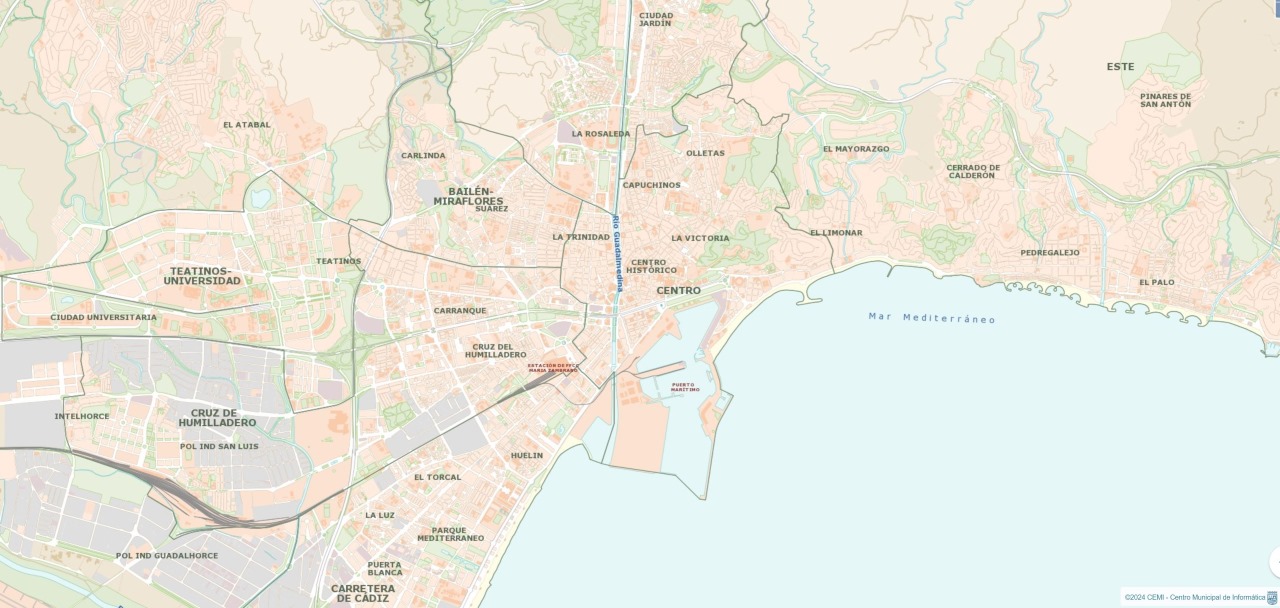
February 15 at 1:00 pm: Capuchinos, Ciudad Jardin and Palma-Palmilla
February 16 at 1:00 pm: El Perchel
February 23 at 1:00 pm: Cruz de Humilladero and Teatinos
February 27 at 8:00 pm: Puerto de la Torre
February 28 at noon: Carretera de Cádiz
March 1 at 1:00 pm: El Palo and Trinidad
From January 28 to February 19: Carnival parties for the elderly in the districts.
Official Competition for Singing Groups (COAC 2025)
February 8 to 14
8:00 pm – Preliminaries at the Higher School of Dramatic Arts.
Calle Bela Bartok 2. Ticket sales at www.mientradas.net (This page doesn’t exist; the site is mientrada.net)
February 16
11:30 am – Gala de la Cantera at Teatro Cervantes, with the participation of Bluey, Asociación Superhéroes Un niño una Sonrisa and closing the event, Escudero Music.
February 16 to 19
8:00 pm – Semifinals at Teatro Cervantes.
Calle Ramos Marín, s/n.
February 21
8:00 pm – Grand Finale.
Cervantes Theater. Sale tickets at www.uniticket.com (this address didn’t work for me. I looked for Uniticket on Google and found this page: Unientradas)
February 22 – Great Carnival Gala
5:00 pm – Seniors’ Gala at Teatro Cervantes.
8:00 pm – Carnival proclamation by Jesús Gutiérrez Fernández in Plaza de la Constitución.
9:00 pm – Choice of God Momo and Goddess of Carnival.
Carnival groups on the Cerveza Victoria stage (Plaza de la Constitución) and on the Tesesa (Calle Larios), Bocaboca (Calle Larios) and Deca (Calle Granada) stages.
February 23 – Carnival Sunday
Noon – Children’s Proclamation by Pablo Salas, Tino Berdugo, David Morales and Rafa Rodríguez in Plaza de la Constitución.
1:00 pm – Choice of Prince and Princess, Child Momo God and Child Goddess.
5:30 pm – Great Carnival parade. Exit Jacinto Street from Puente de la Esperanza.
Carnival groups on the Cerveza Victoria stage (Plaza de la Constitución) and on the Tesesa (Calle Larios), Bocaboca (Calle Larios) and Deca (Calle Granada) stages.
February 27 – Carnival Thursday
8:00 pm – La Final in the Plaza. Plaza de la Constitución
February 28 – Carnival Friday
Noon – Costumes, animation and children’s parades.
1:30 pm – Animation groups performance. Plaza de la Constitución
4:00 pm to 6:00 pm – Children’s workshops in Plaza de la Constitución.
4:00 pm to 8:00 pm – Competition for best presentation and pasodoble, and best Copla (song) about Andalusia, in Plaza de la Constitución.
9:00 pm – Grand Gala of Drag Queens in Plaza de la Constitución, presented by Pinkchadora.
Carnival groups on the Cerveza Victoria stage (Plaza de la Constitución) and on the Tesesa (Calle Larios), Bocaboca (Calle Larios) and Deca (Calle Granada) stages.
March 1 – Costume Saturday
Noon – Children’s costume contest in Plaza de la Constitución. Children’s carnival groups.
and drawing awards.
Noon to 2:00 pm – Children’s workshops in Plaza de la Constitución.
8:00 pm – Battle of the Flowers on Calle Larios.
9:30 pm – Performance by Escudero Music.
10:00 pm – Costume Saturday and Tribute performance to “El Barrio”
Carnival groups on the Cerveza Victoria stage (Plaza de la Constitución) and on the Tesesa (Calle Larios), Bocaboca (Calle Larios) and Deca (Calle Granada) stages.
March 2 – Piñata Sunday
Noon – Parade of Gods and animation.
Awards ceremony to entertainment groups.
Awards ceremony: performance of Best Pasodoble and Presentation, Copla de Andalucía and Copla Deportiva. Great Boqueroná (distribution of anchovy dishes) at Plaza de la Constitución.
Carnival groups on the Cerveza Victoria stage (Plaza de la Constitución) and on the Tesesa (Calle Larios), Bocaboca (Calle Larios) and Deca (Calle Granada) stages.
5:00 pm – Burial of Boquerón (Closing of Carnival, when a fish shaped parade float is burned. To understand this tradition, check our post that deals with the funerals of anchovies, lizards and sardines this time of the year!
Where to stay during Malaga Carnival 2025
The best place to be during Malaga Carnival is in the city center, as you can be close to all the action without worrying about parking or even driving at all. Better and safer, as during these days when everybody is celebrating, there is a lot to drink and a lot that have already been drinking!!
To make it all easier, you can pick your hotel or vacation rental below. The map is centered around the Plaza de la Constitución, where many of the Málaga Carnival events will happen. Pick your dates and have fun!
Conclusion
Carnival in Malaga is a unique experience, colorful, happy and very playful, with people dancing on the streets. Come see it at least once and you are likely to start a new yearly tradition!
Here are my favorite places to eat and drink in Benalmadena. We go to these bars and restaurants in Benalmadena every now and then, and for some on the list, way too many times. I feel safe to say their food is delicious and the service is at least good – sometimes excellent. None of these reviews is paid or supported in any way, and they are displayed in alphabetical order. I hope you enjoy these places as much as I do!
I’ve also added a map with their locations and Google review links on the bottom of the page; make sure you check it, as you may very well be passing in front of one of the best bars and restaurants in Benalmadena and not know it!
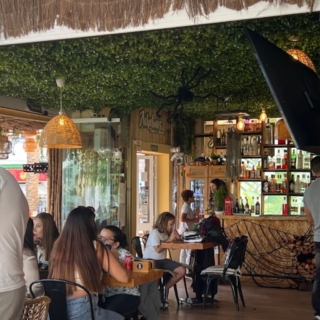
Acholinos
A great place to have breakfast before the beach or a beer with local snacks after!
👩🍳 Bar & snacks
📍 Calle Palmito, Av. las Palmeras, 1
☎️ 951 02 70 87
💻 Acholinos
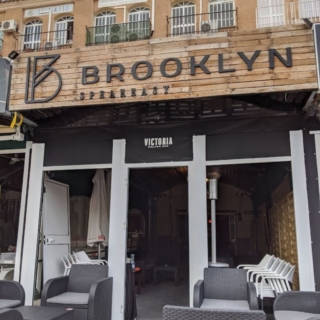
Brooklyn Speakeasy
Cozy bar with friendly staff. They don’t serve food, but they let you order from Casa de la Pizza (which is near), and have it delivered in Brooklyn!
👩🍳 Bar
📍 Plaza la Mezquita
☎️ 644 24 18 73
💻 Brooklyn
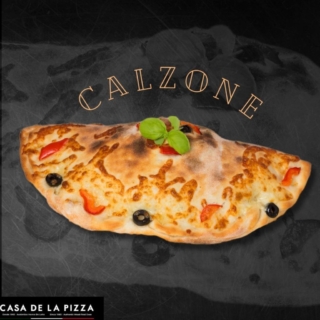
Casa de la Pizza
Not only do they deliver in Brooklyn, their pizzas are great! They also have gluten-free pizzas.
👩🍳 Italian
📍 C. Noelia, 2 (by the Plaza de la Mezquita)
☎️ 631 74 84 42
💻 Casa de la Pizza

Chino Fu
Looking from the outside you wouldn’t tell, but this hidden gem is a local’s favorite with a large menu.
👩🍳 Chinese
📍 Av. Antonio Machado, 5
☎️ 952 57 11 41
💻 ChinoFu
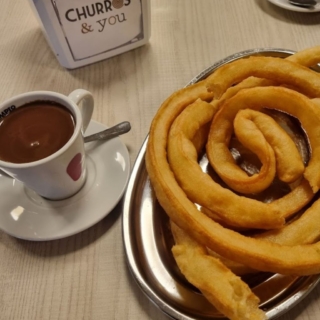
Churros & you
If you don’t care much about churros, try these and they will change your mind. I know because it happened to me!
👩🍳 Spanish Snacks
📍 Av. Juan Luis Peralta, 51
💻 Churros & You
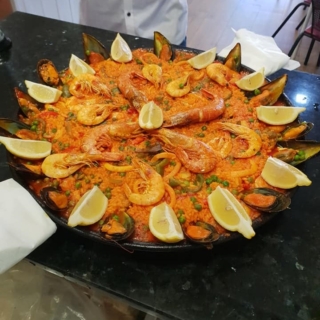
Daneku Ecológico
Friendly staff, healthy and hearty food. Great for vegetarians and non-veggies. Yummy, and they have special offers for kids!
👩🍳 Healthy
📍 Puerto Marina, Local 10
☎️ 676 01 84 80
💻 Daneku Ecológico
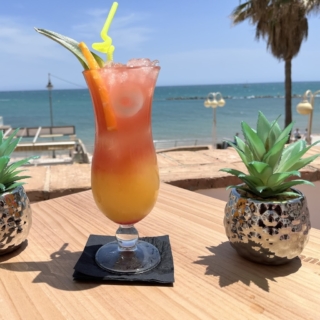
Dizzy Donkey
Best cocktails, great view, friendly staff, amazing food. No wonder they are a reference!
👩🍳 Cocktails & food
📍 Av. Antonio Machado, 55, local 27
☎️ 641 03 52 66
💻 Dizzy Donkey
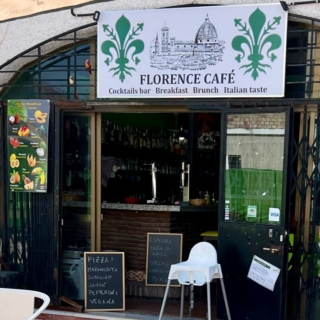
Florence Café
Cozy café offering poke bowls and pizzas in the entrance of Benalmadena. Vegetarians and vegans paradise.
👩🍳 Healthy & Italian
📍 Av. Antonio Machado, 4, Plaza Los Porches, 46, 47
☎️ 641 05 53 01
💻 Florence Cafe
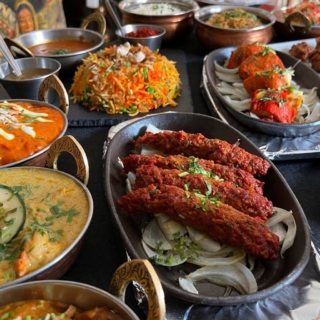
Harry’s Restro
Delicious Indian food. Try the Mango Lassi; I dream about them.
👩🍳 Indian
📍 Av. las Palmeras, 36, Local 1
☎️ 952 96 43 64
💻 Harry’s Restro

InAsia
Funniest thing: they have a robot waiter that looks like a cat. Take your kids there and they’ll talk about it for years!
👩🍳 Japanese
📍 Calle La Fragata Local B1
☎️ 952 12 42 04
💻 InAsia
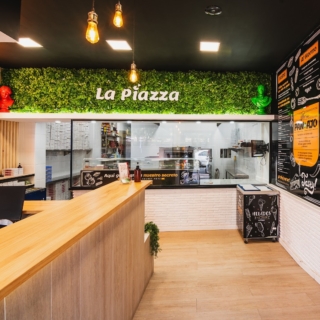
La Piazza
La Piazza delivers great pizzas and pastas. You can smell their pizzas from the other side of the road; from there you go floating. We usually order 3 pizzas and get drinks for free. 😉 It’s better to call than try to order online.
👩🍳 Italian
📍 Av. Mare Nostrum, 5
☎️ 952 44 69 45
💻 La Piazza
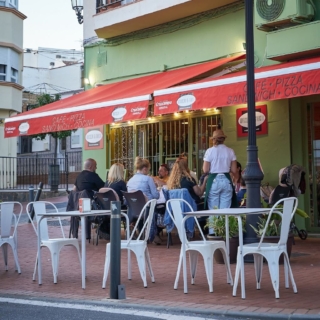
Marcelina & Garcia
Cozy Italian in the heart of Arroyo de la Miel, beyond the main street. Another hidden gem; a local’s place.
👩🍳 Italian
📍 Av. Vicente Aleixandre, corner with C. San Juan, 1
☎️ 951 47 75 29
💻 Marcelina&Garcia
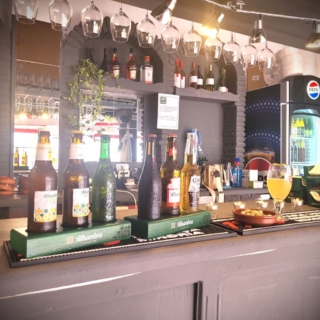
Me Gusta Bar
Super friendly staff, great atmosphere, a lot of space to sit in the sun, delicious snacks. Don’t miss it, especially if you are in the Gamonal area.
👩🍳 Bar & snacks
📍 Jardines de Gamonal, C. Sagitario, 9, Local 7
☎️ 665 96 06 77
💻 Me Gusta
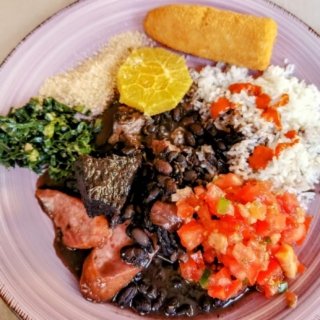
Miss Kroquetas
They started small, grew, and yet, now it is hard to find a place to sit. Need to say more? Yes: visit fast, as they are planning to move to a bigger place!
👩🍳 Brazilian
📍 C. el Montículo, local 6
☎️ 630 62 47 30
💻 Miss Kroquetas
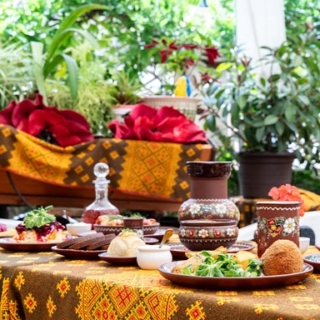
Prosvita
Ukrainian and committed to help. Also, their Soliankas are so good that made Hubby take an interest in cooking. I’m grateful to Prosvita for both.
👩🍳 Ukrainian
📍 Av. Manuel Mena Palma, 11
☎️ 952 08 57 38
💻 Prosvita
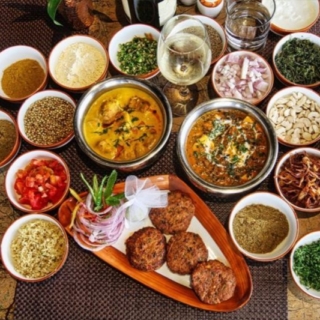
Tandoori Grill
A family-owned gem of a place. When we go there, the super-friendly waiter already knows I want the Saag Paneer, and that Hubby will have a tomato soup for starter and a Mexican dish next. We practically don’t need to look at the menu anymore.
👩🍳 Indian & Mexican
📍 Av. Blas Infante, 24
☎️ 632 40 88 89
💻 Tandoori
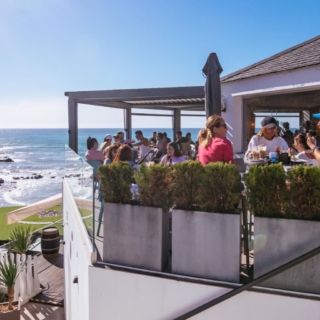
Yucas
2 in1: the bar is on top, and the restaurant is below. Sophisticated, great for every meal – and the view? Wow!
👩🍳 Spanish
📍 C. Torrequebrada, 31
☎️ 676 93 12 02
💻 Yucas
Are you more hungry or thirsty now?
Here we focused on the best bar and restaurants in Benalmadena for lunch, dinner and happy hour, for both vegetarians and omnivores. I’ve also made a selection of good places for breakfast in Benalmadena, and there are quite a few more for vegetarians here. It is not a surprise that there is some overlap, as these are my favorite places.
In the map below you can find the location of each place we mentioned in this post and, therefore, which of these fantastic Benalmadena restaurants and bars are closer to you. After you visit the closest ones, check the others as well! I think you’ll want to, anyway. Have a great time! 😋
Conclusion
There are plenty of bars and restaurants in Benalmadena to choose from, so it takes time to know which are the best. The ones I’ve included here are our favorites, after living (and eating) in Benalmadena for three years (wow, already? Time passes fast)! I’m sure you’ll like them too. 😉
Imagine a golf getaway filled with sunshine, luxury, and breathtaking landscapes – Marbella offers all this and more. This glamorous destination on the Costa del Sol, known for its world-class golf courses, stunning coastline, and luxurious lifestyle, offers everything you need for a memorable and lavish escape.
To make your stay unforgettable, we’ve selected three exquisite villas that provide a mix of elegance, comfort, and close proximity to Marbella’s top golf courses, all available through Villanovo, the world-renowned portal for luxury villas holidays. When planning a family trip, a golf adventure, or a relaxing break, these villas deliver the best retreat.
These 3 luxury villas for golf holidays have in common, besides the stunning views, luxury decoration, gorgeous open air spaces and privacy, the perfect location: they are all situated on the hills of La Zagaleta, one of the more prestigious private urbanizations in Andalusia, minutes away by car to either Marbella’s Old Town, Puerto Banus or the numerous surrounding golf clubs, such as Los Arqueros, Los Naranjos and La Quinta Golf & Country Club.
1. Villa Palo Alto: A Golfers’ Paradise
Villa Palo Alto is a stunning retreat that combines modern luxury with breathtaking natural beauty. Perfectly suited for golf enthusiasts and those seeking a lavish getaway, this premium villa offers an amazing blend of privacy, style, and convenience.
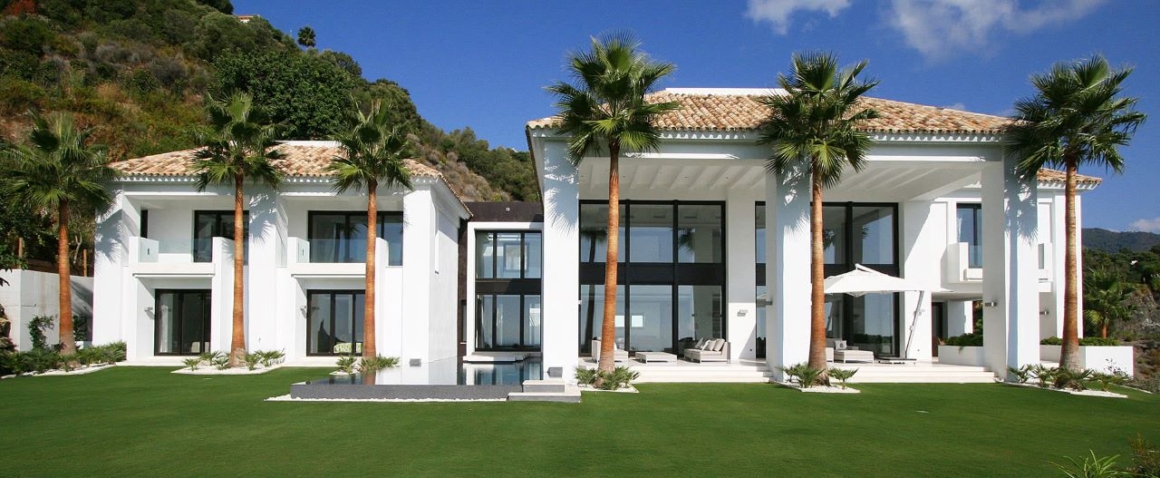
Highlights:
- Outdoor Space:
Villa Palo Alto has expansive outdoor areas designed for relaxation and entertainment. The infinity pool, large terrace, and lush gardens are complemented by mesmerizing views of the Mediterranean Sea and Marbella’s rolling hills. Lounge areas and a barbecue setup make it perfect for gatherings. - Interior Space:
The villa showcases modern sophistication with open-plan living spaces and floor-to-ceiling windows that invite natural light inside. The seamless flow between indoors and outdoors enhances the luxurious ambiance. - Bedrooms:
Each of the 5 bedrooms is complete with plush furnishings, en-suite bathrooms, and private terraces that frame spectacular views, ensuring every morning starts beautifully. - Amenities:
Villa Palo Alto goes beyond expectations, offering a private gym, indoor spa facilities, and a cinema room. - Location:
Situated within the exclusive La Zagaleta estate, this luxury villa provides exceptional privacy and security. - Perfect for Golfers:
Golf enthusiasts will appreciate its proximity to world-renowned courses. From beginners to pros, it’s a fantastic base to enjoy Marbella’s golfing scene. - Why Choose This Villa?
For luxury, tranquility, and stunning scenery, Villa Palo Alto offers an experience that combines modern style with relaxation.
Villa Palo Alto offers unmatched security and tranquility, surrounded by lush greenery and panoramic views of the Mediterranean Sea and majestic mountains.
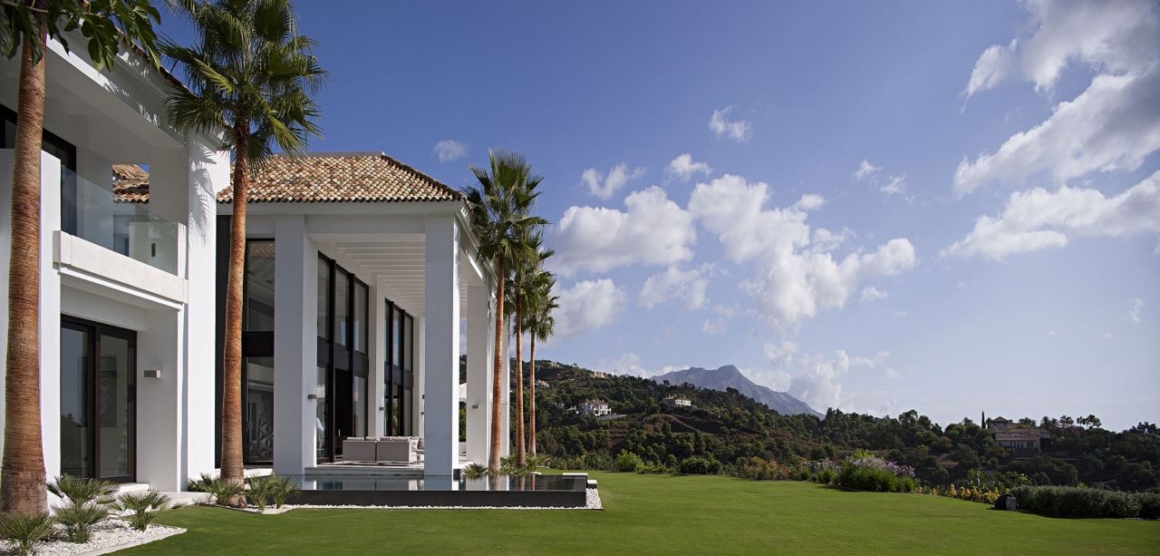
Step inside Villa Palo Alto, and you’ll find a masterpiece of contemporary architecture with touches of traditional Andalusian charm. Expansive glass walls flood the home with natural light, while open-plan living spaces create a seamless connection to the outdoors. Each room has been thoughtfully designed for comfort and elegance, ensuring your stay feels both relaxing and indulgent.
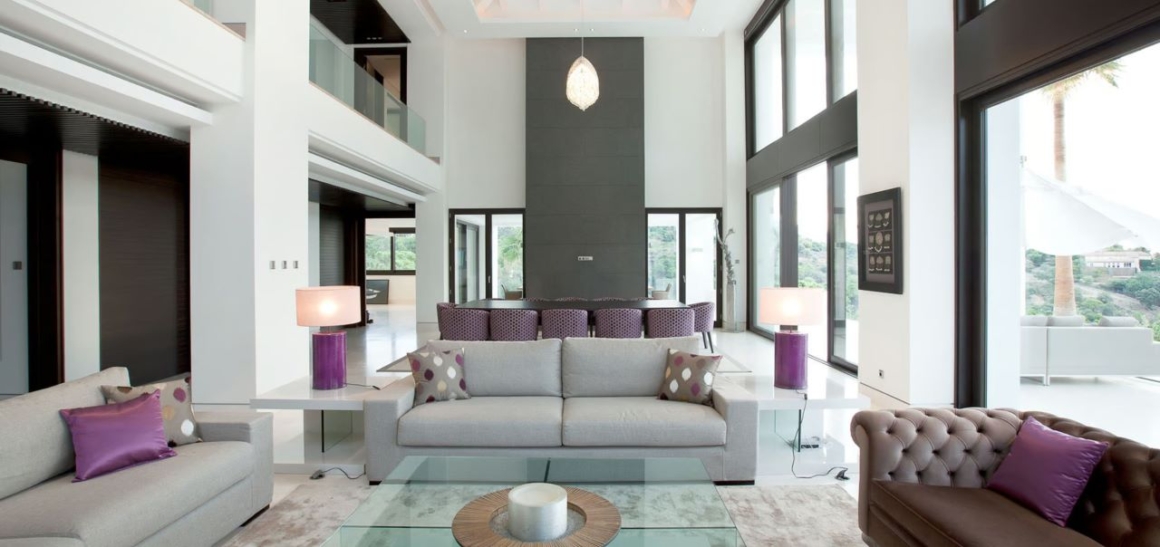
This luxury villa boasts spacious living and dining areas, perfect for relaxing or hosting a dinner with loved ones. A fully equipped, modern kitchen makes it easy to prepare meals, from whipping up breakfast to enjoying a private chef experience. The bedrooms are serene retreats, each with an en-suite bathroom, plush furnishings, and access to terraces or gardens for added tranquility.
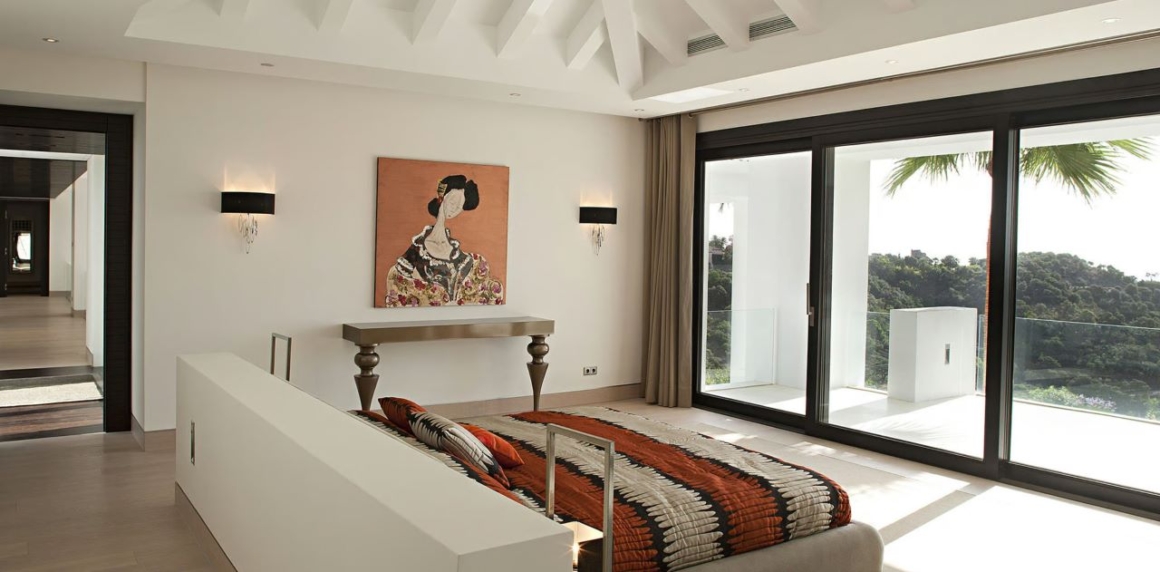
The outdoor area at Villa Palo Alto is nothing short of spectacular. Imagine unwinding by the infinity pool, dining alfresco on the expansive terrace, or enjoying the beautifully landscaped gardens. With cozy lounge areas and a barbecue setup, you’ll have everything you need to make the most of Marbella’s sunny climate and stunning vistas.
Villa Palo Alto goes beyond luxury with its additional amenities. Stay active in the private gym, indulge in a spa-like experience, or host a movie night in the home cinema. Every detail is designed to elevate your stay, from the cutting-edge security features to the concierge services available to meet your every need.
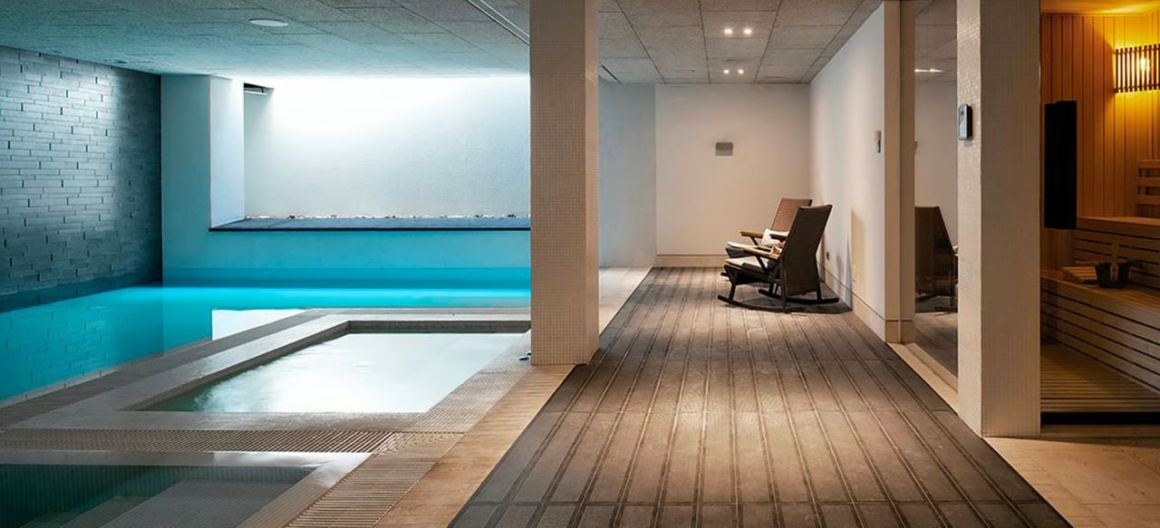
Villa Palo Alto is more than just a place to stay—it’s an experience. For those seeking a peaceful escape, an active golf holiday, or a luxurious family retreat, this villa delivers it all. From the awe-inspiring views to the impeccable amenities, every moment spent here will be unforgettable.
Treat yourself to the best that Marbella has to offer and make Villa Palo Alto your home away from home. Once you arrive, you may never want to leave!
2. Villa San Bernardo: A Luxurious Escape
Villa San Bernardo is a sophisticated retreat that promises an unforgettable stay. Offering impeccable design, top-notch amenities, and proximity to the city’s finest attractions, this villa is excellent for those who crave both relaxation and indulgence. When planning a golf holiday, a family getaway, or a romantic escape, Villa San Bernardo is the ultimate choice.
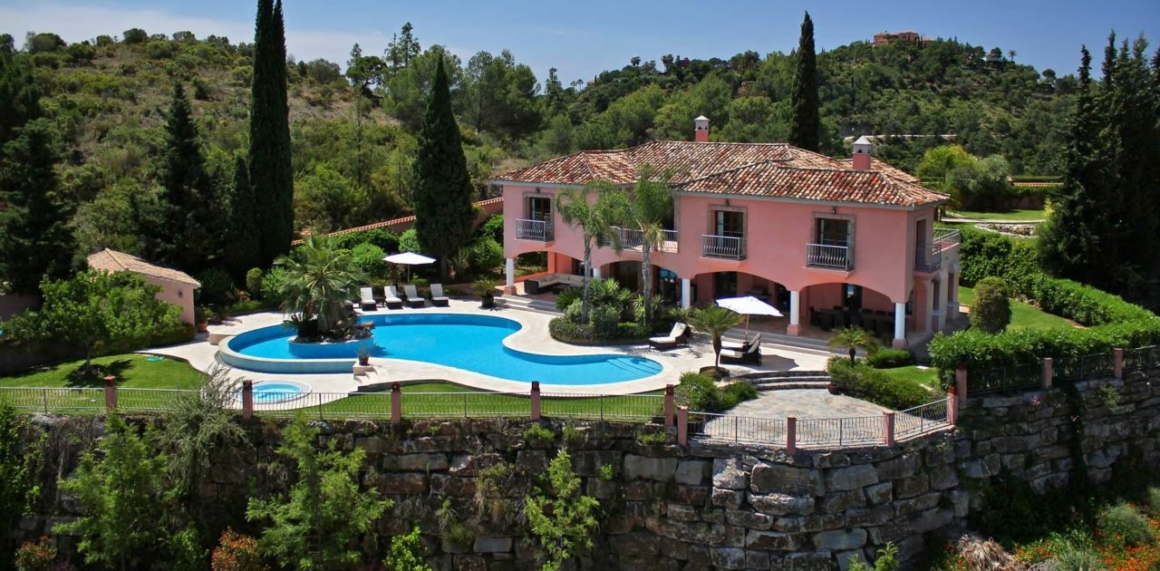
Highlights:
- Outdoor Space:
This villa features serene outdoor areas, including a private pool, shaded terraces, and beautifully landscaped gardens. The setting provides an inviting atmosphere for sunbathing, dining, or simply unwinding. - Interior Space:
The villa combines contemporary design with touches of Mediterranean charm. Open-plan interiors and stylish décor make it warm and welcoming, while expansive windows bring in plenty of natural light. - Bedrooms:
Each of the 6 bedrooms offers comfort and style, featuring premium bedding, en-suite bathrooms, and access to terraces or garden views. Guests enjoy restful, peaceful nights. - Amenities:
Villa San Bernardo is equipped with an outdoor spa. - Location:
Centrally located, this premium villa is close to Marbella’s beaches, vibrant nightlife, and highly rated golf courses, all while maintaining privacy and calm surroundings. - Perfect for Golfers:
Several of Marbella’s top golf courses are just a short drive away, making it ideal for those ready to hit the greens. - Why Choose This Villa?
Its blend of convenience, elegance, and world-class amenities ensures an unforgettable vacation tailored to relaxation and fun.
Villa San Bernardo enjoys a prime location in Marbella, surrounded by the region’s stunning natural beauty and vibrant lifestyle. With easy access to world-class golf courses, golden beaches, and the lively Marbella town center, this villa is a gateway to the best the Costa del Sol has to offer. The villa provides complete privacy, making it an ideal retreat from the hustle and bustle.
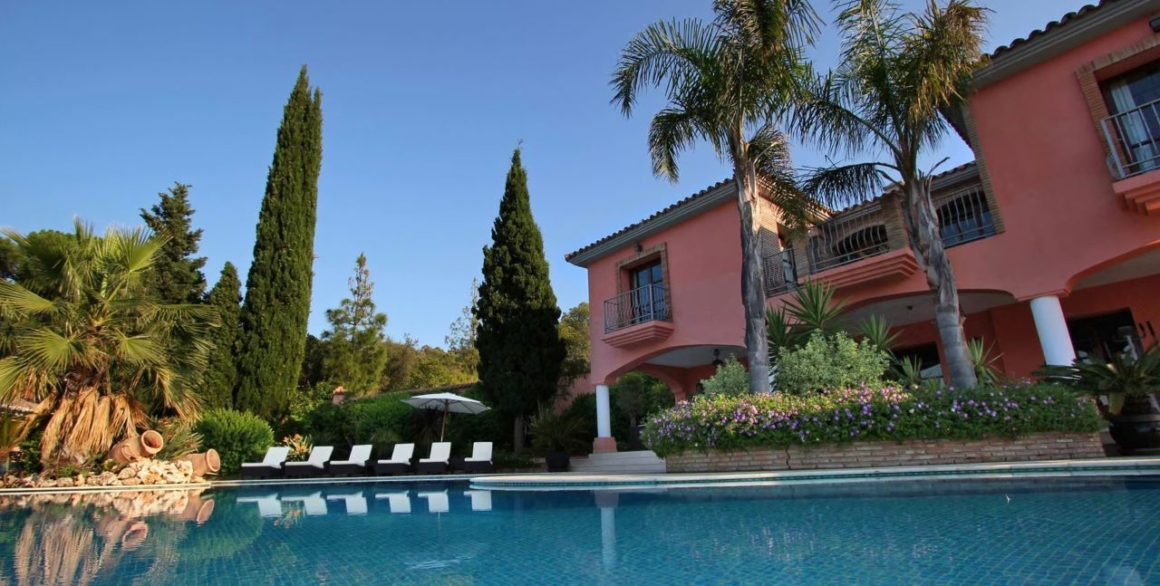
This stunning villa blends contemporary elegance with classic Andalusian charm. Its spacious interiors are bathed in natural light, thanks to large windows and an open-concept layout. The living areas offer a cozy yet sophisticated ambiance for relaxation or socializing. Every detail of the villa has been thoughtfully designed to ensure guests feel at home in this luxurious setting.
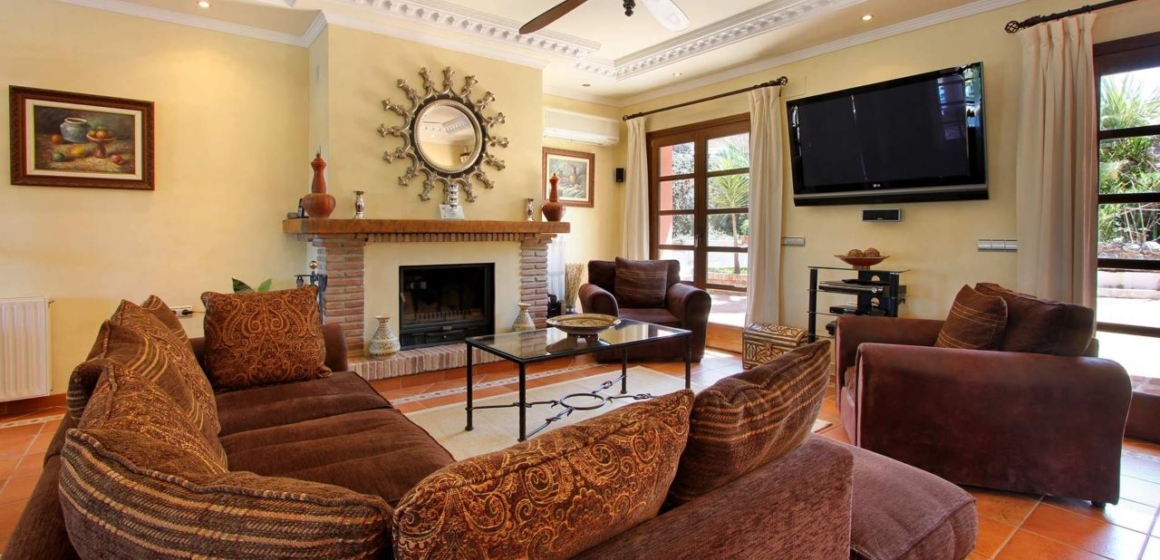
Villa San Bernardo features 6 beautifully designed bedrooms, each with an en-suite bathroom, high-quality linens, and ample storage space. The modern kitchen is equipped with state-of-the-art appliances, making this space is as functional as it is stylish.
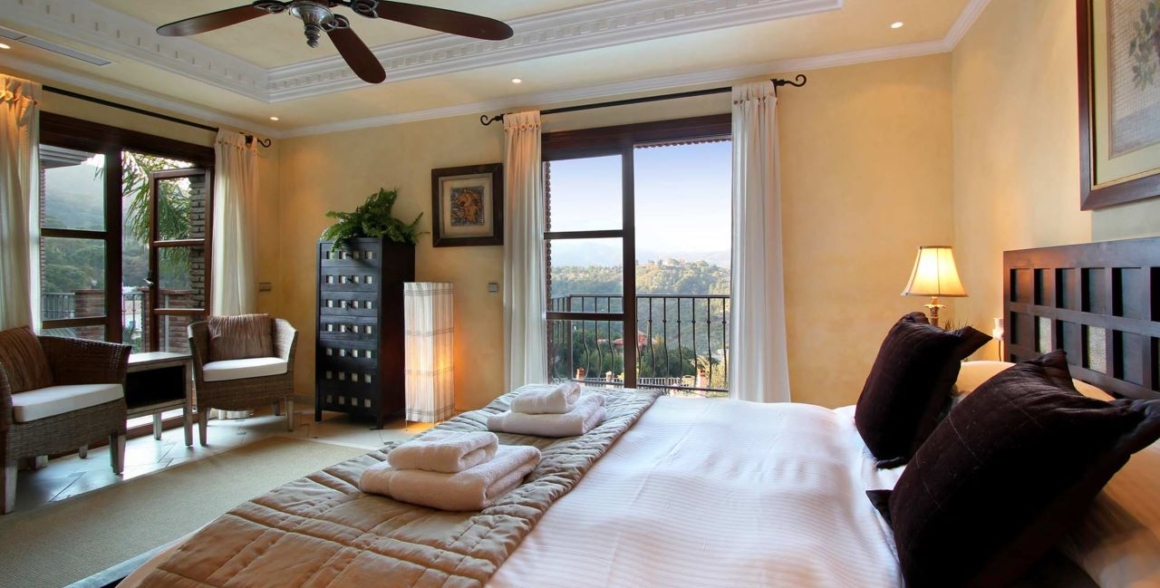
Step outside to discover a private oasis designed for ultimate relaxation and entertainment. The villa’s outdoor space includes a 20 meters pool, sun loungers, and shaded areas for dining or unwinding. The lush gardens and terraces provide the ideal backdrop for soaking up the Mediterranean sun, enjoying alfresco meals, or sipping cocktails as the sun sets over the horizon.
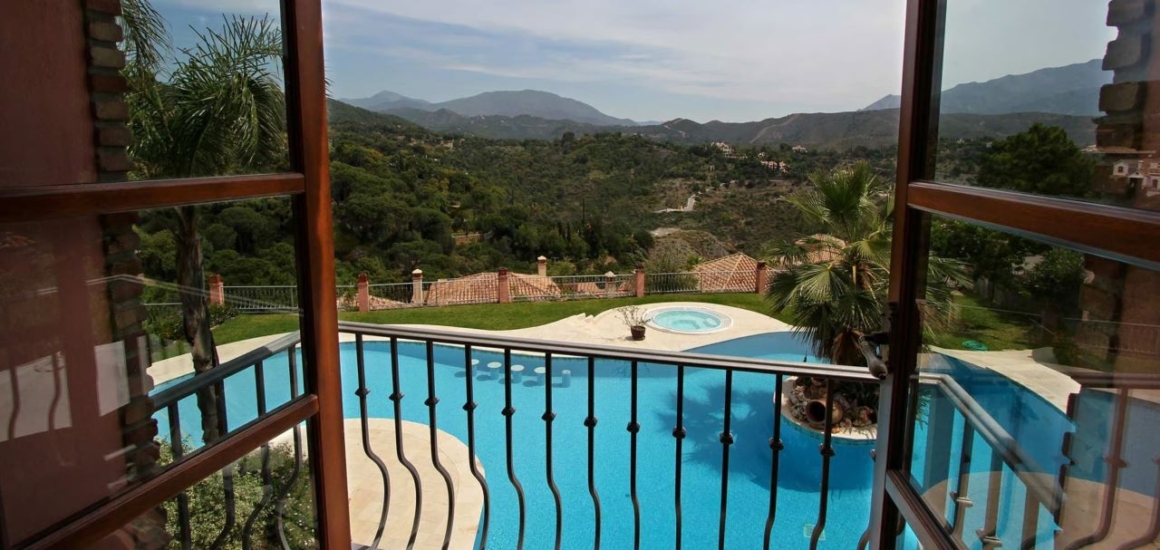
Marbella is renowned for its exceptional golf courses, and Villa San Bernardo places you close to some of the finest in the region. Golf enthusiasts will appreciate the villa’s proximity to premier courses, while non-golfers can explore Marbella’s rich culture, luxurious shopping, and vibrant nightlife. With so much to offer, this villa is a fantastic choice for any type of traveler.
Villa San Bernardo is more than just a luxurious place to stay; it’s a destination in itself. From its serene outdoor spaces to its stylish interiors and top-tier amenities, this villa offers the perfect balance of relaxation and excitement. Villa San Bernardo ensures a truly unforgettable experience to play golf, enjoy family time, or celebrate a special occasion.
Book your stay at Villa San Bernardo today and immerse yourself in the beauty, elegance, and charm of Marbella. This premium villa is an exceptional retreat that awaits to make your holiday truly special.
3. Villa Yareni: A Tranquil Luxury Retreat
Located in the beautiful hills of Marbella, Villa Yareni is a luxurious and modern villa offering an unique blend of comfort, style, and relaxation. For those seeking a serene getaway, a family vacation, or a golf holiday, this exquisite villa provides everything for a memorable stay. With stunning views, elegant interiors, and premium amenities, Villa Yareni is your home away from home.
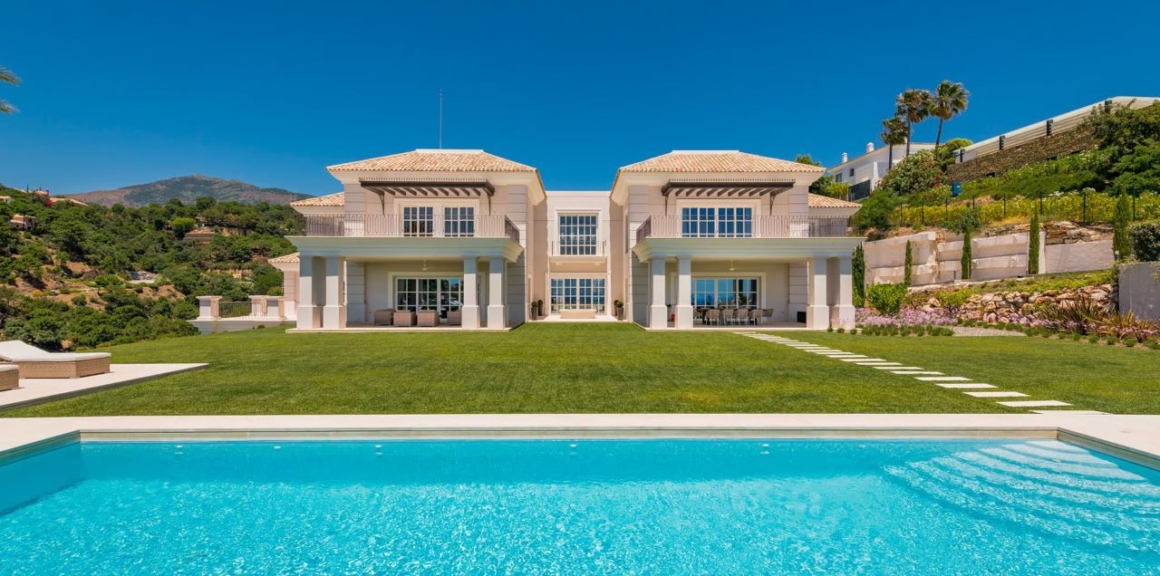
Highlights
- Outdoor Space:
This villa’s outdoor areas include a private pool, expansive terraces, and beautifully maintained gardens. - Interior Space:
The interiors of Villa Yareni blend modern comfort with Andalusian charm. Spacious rooms, elegant furnishings, and thoughtful details create a cozy yet luxurious ambiance. - Bedrooms:
6 bedrooms, each thoughtfully designed, featuring comfortable bedding, en-suite bathrooms, and views of the surrounding beauty. - Amenities:
Villa Yareni includes a private gym and home cinema. - Location:
Positioned in a quiet area outside Marbella, this luxury villa provides a peaceful retreat while offering easy access to the region’s beaches, golf courses, and cultural landmarks. - For Golfers:
With top-rated courses nearby, this villa is an excellent option for golf enthusiasts ready to explore the local greens. - Why Choose This Villa?
It offers a combination of luxury, privacy, and proximity to Marbella’s best golf courses, making it an outstanding choice for any type of traveler.
Villa Yareni is positioned to offer panoramic views of Marbella’s lush landscapes, the Mediterranean Sea, and the mountains. The villa’s location in a peaceful area ensures total privacy and tranquility, while being just a short drive from the excitement of Marbella’s beaches, exclusive golf courses, world-class restaurants, and vibrant nightlife.
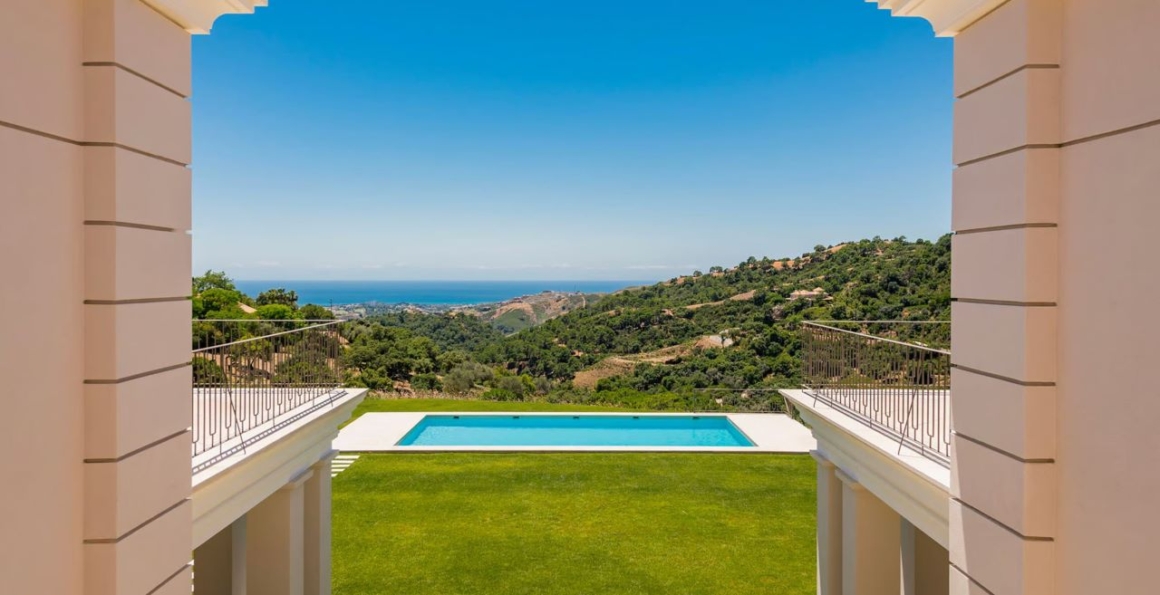
Step inside Villa Yareni and discover a beautifully designed space that blends modern architecture with sophisticated, timeless décor. The open-plan living areas are spacious and airy, with large windows that allow plenty of natural light to flood the home. The villa’s interiors are designed for comfort and style, with plush sofas in the living room and elegant dining tables.
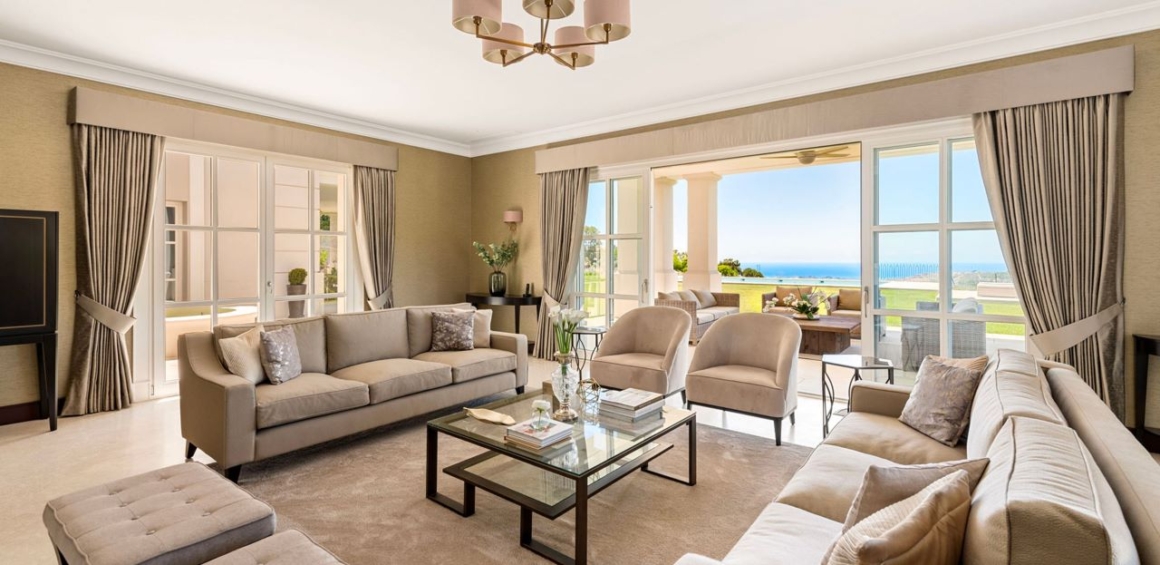
Each of the villa’s bedrooms is a peaceful retreat, designed with ultimate relaxation in mind. The rooms feature comfortable furnishings, large windows with scenic views, and en-suite bathrooms with high-quality fittings. The open, airy design of each room enhances the villa’s tranquil atmosphere.
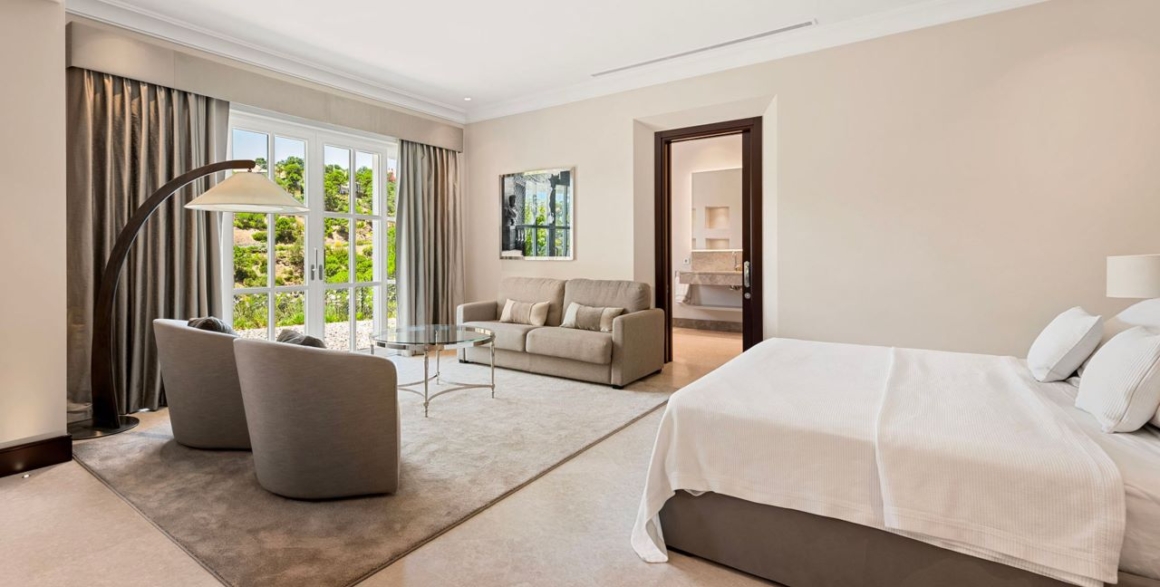
The amenities at Villa Yareni are designed to provide the ultimate in comfort and relaxation. For those who enjoy staying active, the villa has a private gym, ideal for a workout while enjoying the surrounding views. You can also take advantage of the home cinema for a cozy movie night to unwind after a day of exploring Marbella.
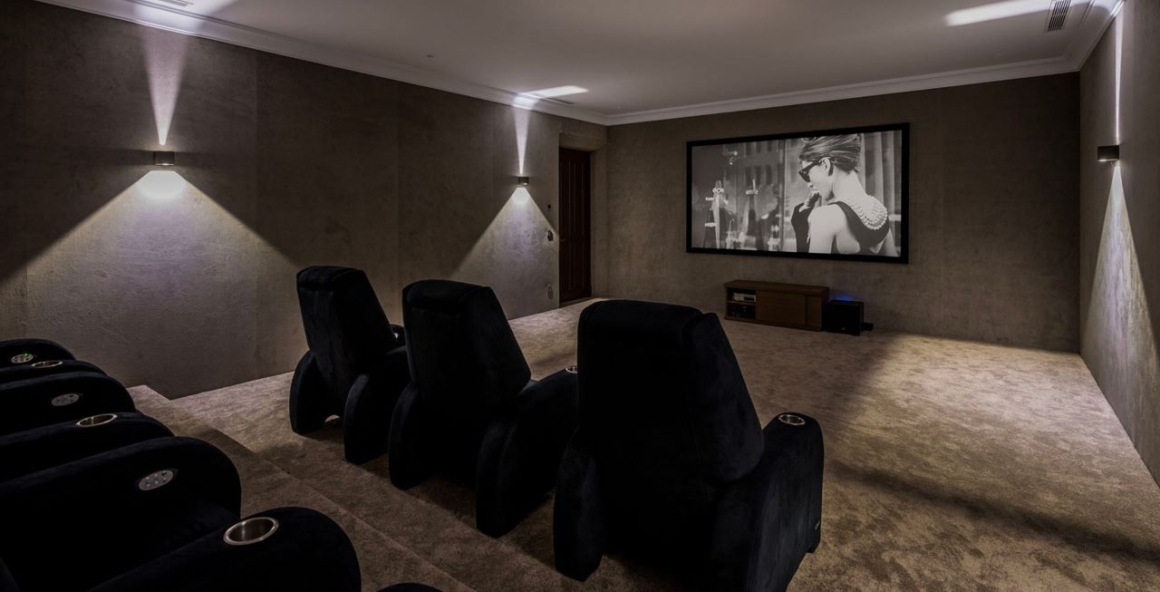
Villa Yareni offers a spectacular outdoor area for enjoying Marbella’s sunny climate. The spacious terrace features an inviting private pool; you can also unwind in the shaded areas, enjoying alfresco meals with friends and family as you take in the breathtaking views. The villa’s gardens are lush and well-maintained, offering a serene and beautiful setting.
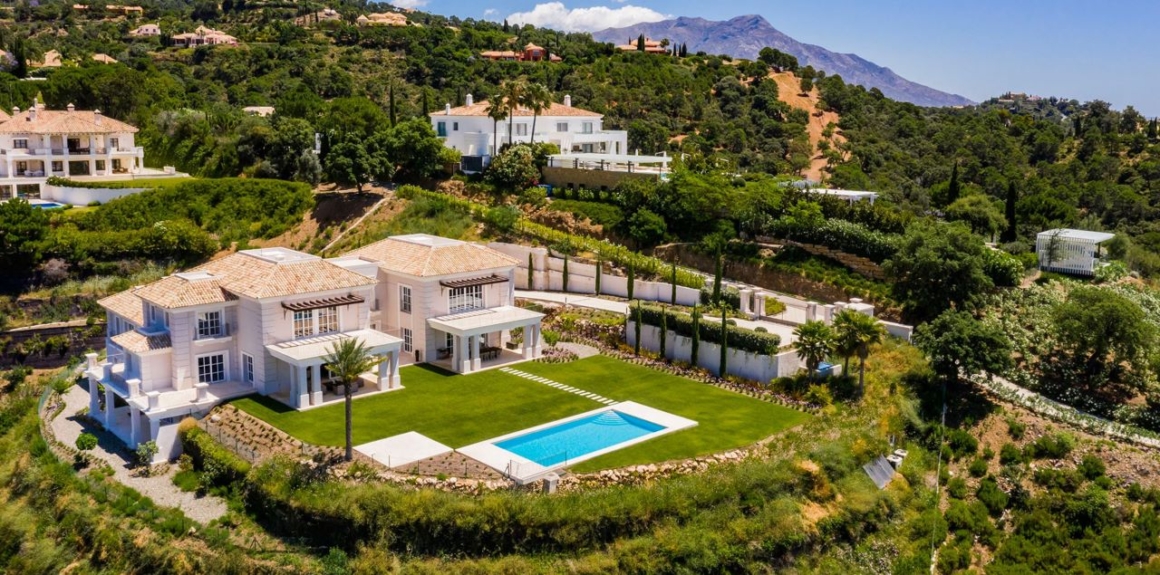
Villa Yareni is ideally located for golf enthusiasts. The villa is just a short drive from several prestigious courses, making it an excellent choice for those looking to enjoy a golfing retreat. For those who prefer to explore Marbella’s cultural scene, high-end shopping, and vibrant nightlife, the villa’s location allows easy access to all the city has to offer.
Book your stay at Villa Yareni today and enjoy an unforgettable escape in one of Marbella’s most beautiful locations. Indulge in luxury, comfort, and relaxation at this magnificent villa.
Conclusion
These three villas offer the ultimate combination of luxury, relaxation, and access to Marbella’s finest golf courses. Each property provides a unique experience, ensuring your stay is nothing short of spectacular. No matter which luxury villa you choose, you’ll be assured of a remarkable stay in one of Spain’s most sought-after destinations. Book your dream villa today and create memories to last a lifetime!
Mijas serves up sunshine like it owns the patent. This little slice of Andalusian heaven enjoys some of the best weather in Spain. Think 300+ days of sunshine, just enough rain to keep the plants alive, and winters so mild they make northerners weep with joy.
So, if you’re wondering whether you’ll need a coat or just your best beachwear, buckle up – we’re about to break down the weather in Mijas first for this week (yes, starting today!) and then month by month. Spoiler alert: it’s mostly fabulous.
Weather in Mijas this week
MIJAS WEATHERBefore we dive in, let’s talk geography. Mijas isn’t just one picture-perfect spot; it’s three. Down by the coast, La Cala de Mijas enjoys those warm sea breezes and stays a smidge hotter year-round. Mijas Pueblo, up in the mountains, enjoys slightly cooler temperatures and the occasional postcard-worthy morning mist. And right in the middle? Las Lagunas, the more urban, central part of Mijas, where the weather tends to match the averages we’ll be dishing out below.
To make things easier for you, we’ve got two live weather widgets (courtesy of WeatherWidget.io) – one showing the overall Mijas weather this week, above, and another just for La Cala de Mijas, below, because even within the same town, the weather likes to keep things interesting. So, if you’re in the Pueblo, maybe grab an extra layer. If you’re in La Cala, pack more sunscreen. Either way, expect a whole lot of sunshine – because Mijas doesn’t do bad weather for long.
LA CALA DE MIJAS WEATHERJanuary
A mild start, but don’t get cocky. January in Mijas is winter’s half-hearted attempt to make an entrance. Highs of 15°C (59°F) and lows of 6°C (43°F) mean you can still enjoy a café on a terrace without losing feeling in your fingers. Rain shows up for about 6 days, mostly to remind the plants they exist. It’s crisp, it’s fresh, and it’s the perfect time to smugly text your friends stuck in actual winter.
February
The calm before the spring. February is January’s slightly warmer, slightly less grumpy sibling. Highs creep up to 16°C (61°F), while lows hover around 7°C (45°F). Rain drops by for about 5 days, but honestly, it’s more like a light drizzle that makes everything feel poetic rather than a real weather event. And it’s not for the whole day – it’s a bit of rain, mostly for a few minutes or hours, on 5 days.
March
The awakening. March is when Mijas starts stretching out, yawning, and remembering it’s a sun-drenched paradise. Highs reach 18°C (64°F), with lows of 9°C (48°F). Rain? Just 4 days, making a brief appearance before bowing out like a polite guest. If you’re feeling adventurous, this is prime hiking weather – just don’t forget to reward yourself with tapas afterward.
April
Welcome to the good life. April in Mijas is the universe’s way of saying, “See? The world isn’t so bad.” Highs hit 21°C (70°F), lows sit at 11°C (52°F), and rain is a rare, fleeting thing (3 days, tops). This is the month where you officially switch from “light jacket” to “I probably don’t need this, but I’ll carry it anyway.”
May
Perfection, bottled. May is the weather equivalent of a perfectly mixed cocktail – sunny, smooth, and just strong enough to make you feel good about life. Highs of 24°C (75°F) and lows of 14°C (57°F) make beach days and long, lazy lunches an absolute requirement. Rain? 1 day, maybe. But honestly, Mijas has better things to do.
June
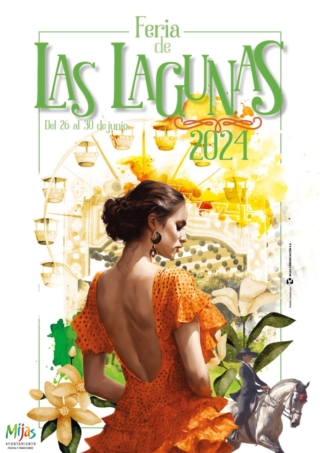
Flip-flop season begins. June is when Mijas shifts into full-blown Mediterranean mode. Highs reach 28°C (82°F), and lows stay at a delightful 18°C (64°F). Rain is basically an urban legend (1 day, if the clouds are feeling generous).
This is when you start saying things like “Let’s eat outside” and never look back. That’s because you find the Feria de Las Lagunas, and finding the way back home can become difficult.
July
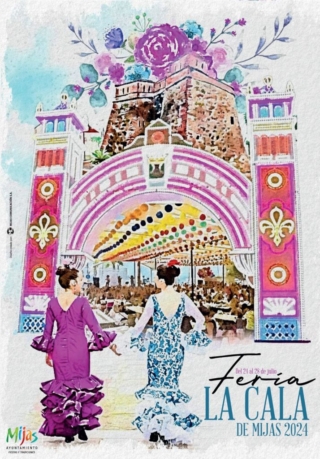
The sun is your new best friend (and maybe your enemy). July in Mijas is not for the weak. Highs of 30°C (86°F) and lows of 20°C (68°F) mean you will be sweating, but you will also be thriving. Rain? Don’t make me laugh – 1 day, at best.
Shade becomes your most valued possession, and your living room is now the beach. Good thing that’s where the Feria is going on, smack dab in La Cala de Mijas, every July.
August
Pure summer. August is when the heat laughs in your face and dares you to complain. Highs soar to 31°C (88°F), with lows of 21°C (70°F). Rain might tease you with a single day, but mostly, it’s all about surviving on ice-cold drinks and strategic pool dips. This is when Mijas whispers, “You’re not in the north anymore.”
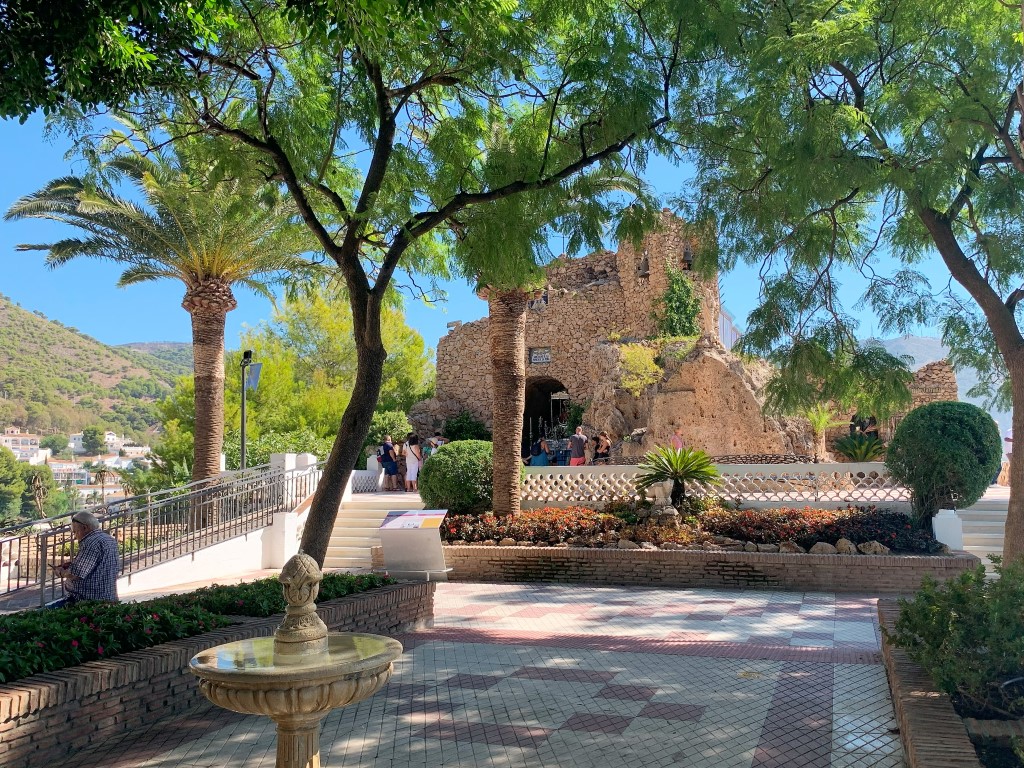
September
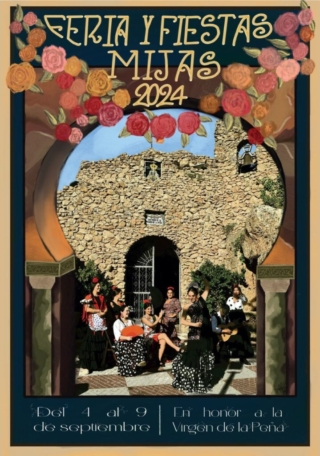
The best-kept secret. September is summer without the drama. Highs ease down to 27°C (81°F), and lows feel luxurious at 19°C (66°F). Rain peeks in for 3 days, but mostly, it’s blue skies, warm weather, cold seas, and the kind of sunsets that make you rethink your five-year plan.
Beware of the Feria de Mijas Pueblo; the place is adorable, the weather is perfect and the party is too beautiful. You may never want to leave.
October
The gentle goodbye to heatstroke. October is that perfect balance between “Wow, it’s still warm” and “I can finally wear jeans again.” Highs of 23°C (73°F) and lows of 15°C (59°F) make it a dream for those who like sunshine without the threat of spontaneous combustion. Rain shows up for 5 days, but it’s more of a moody, cinematic drizzle than a proper downpour – usually.
November
Cozy, but not cold. November cools down, but let’s be real—it’s still warmer than most European summers. Highs of 19°C (66°F) and lows of 12°C (54°F) make it perfect for wandering the old town without breaking a sweat. Rain swings by for 6 days, but the sunshine sticks around long enough to make you forget about it.
December
A winter that’s not really a winter. December in Mijas is a gentle nod to the season, like winter wearing a light scarf for aesthetic reasons. Highs of 16°C (61°F) and lows of 9°C (48°F) make it feel festive but never freezing. Rain graces us with 6 days, but let’s be honest – this is about as good as winter gets.
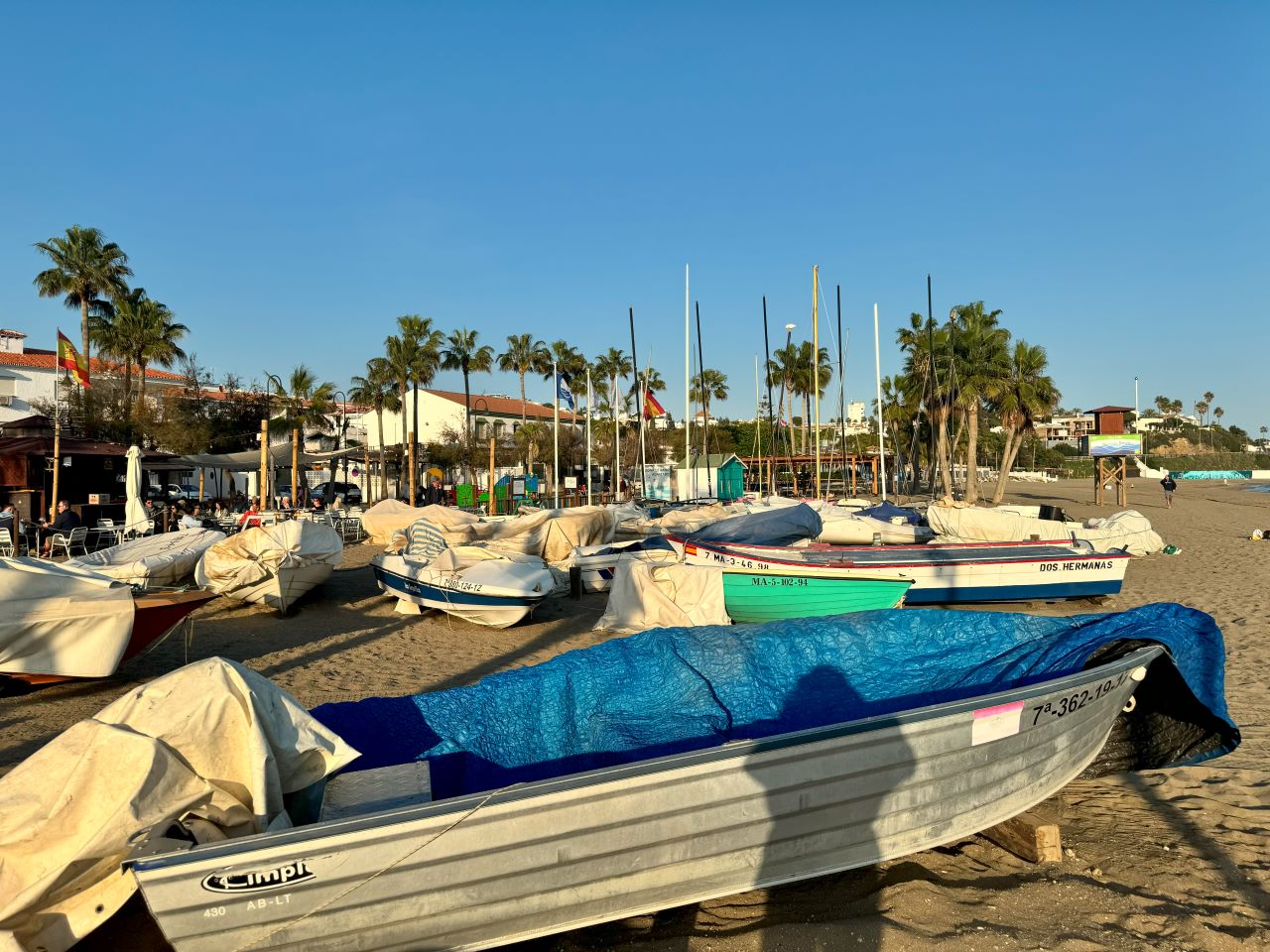
Disclaimer, because mother nature has a sense of humor…
Our data comes from sources that collect statistics about the weather from previous years, like AccuWeather, AEMET (Spain’s meteorological agency), and the locals at the nearest café. Global warming and / or cooling can be generously blamed anytime the weather in Mijas this week differs from what the text describes for this month.
Now, before you go planning your life around the weather in Mijas, let’s get one thing straight: while the Costa del Sol is mostly a sun-drenched paradise, sometimes it likes to keep us on our toes. Wind can get feisty, especially in winter, so don’t be surprised if you find yourself doing an accidental Marilyn Monroe impression.
And let’s talk about 2024 – because wow, did it rain. March gave us a week-long downpour, and October/November went full drama mode with some of the worst floods we’ve seen in ages. So, while Mijas generally enjoys 300+ days of sunshine a year, when it rains, it doesn’t mess around.
Moral of the story? Pack your sunglasses, but maybe keep a small umbrella somewhere – just in case the weather decides to remind us who’s really in charge. If it rains a lot, you won’t need it anyway – you’ll need to stay indoors.
Final Thoughts on Mijas Weather
The weather in Mijas is the reason so many people come for a holiday and mysteriously “forget” to leave. With sunshine that rarely takes a vacation and just enough rain to keep things interesting, it’s the kind of place where you start believing that life really should be this good all the time. And maybe it can be. 😉
The Costa del Sol offers a wide variety of leisure options and is perfect for a lot of fun. But what part of the Costa del Sol is best for you and for the type of vacation you have in mind? Let’s see if we can solve this pressing issue with a quick test – more like a magazine test than a school one; there is no wrong answer at all!
Test: what place in the Costa del Sol is best for you?
There are two ways to do this test: you can pick all the answers that apply to you from each question or try to pick only one answer for each question. Write down the letters that corresponds to your answers and check the results right after the questions.
1 – During your vacations what you want the most is to:
a) spend time on the beach
b) know the area as much as possible
c) visit historical buildings, places and cultural events
d) have fun with the kids
2 – While traveling, you prefer to:
a) stay near the hotel / rental
b) cover as much of the area as possible
c) take long walks without a map
d) plan ahead what will be visited
3 – Your ideal meal while traveling is:
a) a generous portion to be savored slowly
b) eat on the go – there is too much to see, and time is precious!
c) authentically local – knowing the food is part of knowing the place
d) in a restaurant that has something the kids will eat
4 – Your ideal hotel or rental is:
a) by the beach, with a pool and a TV
b) in a location from where I can move easily around
c) in a historic building full of charm
d) one with kids’ pool, lifeguards and kids’ entertainment
5 – If you had to choose only one activity to do for a full day, which one of these would you pick:
a) go to the beach
b) go up the mountains
c) visit a castle
d) visit a waterpark
6 – At night, you plan to:
a) go to a bingo
b) go to a nightclub
c) go to the beach
d) sleep
7 – You think of the locals as:
a) the people that work in the hotels and restaurants
b) people you’d love to befriend, given the opportunity
c) very interesting sources of information
d) extroverts. They start interactions with you all the time.
8 – The group that best shows what you want on your vacations is:
a)
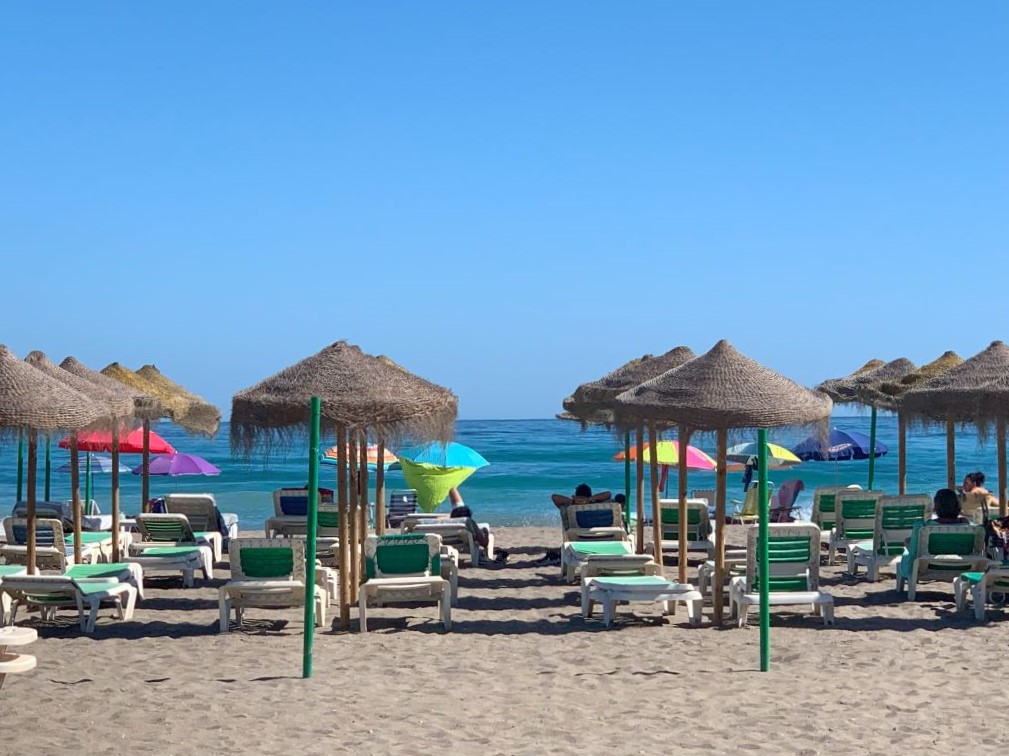
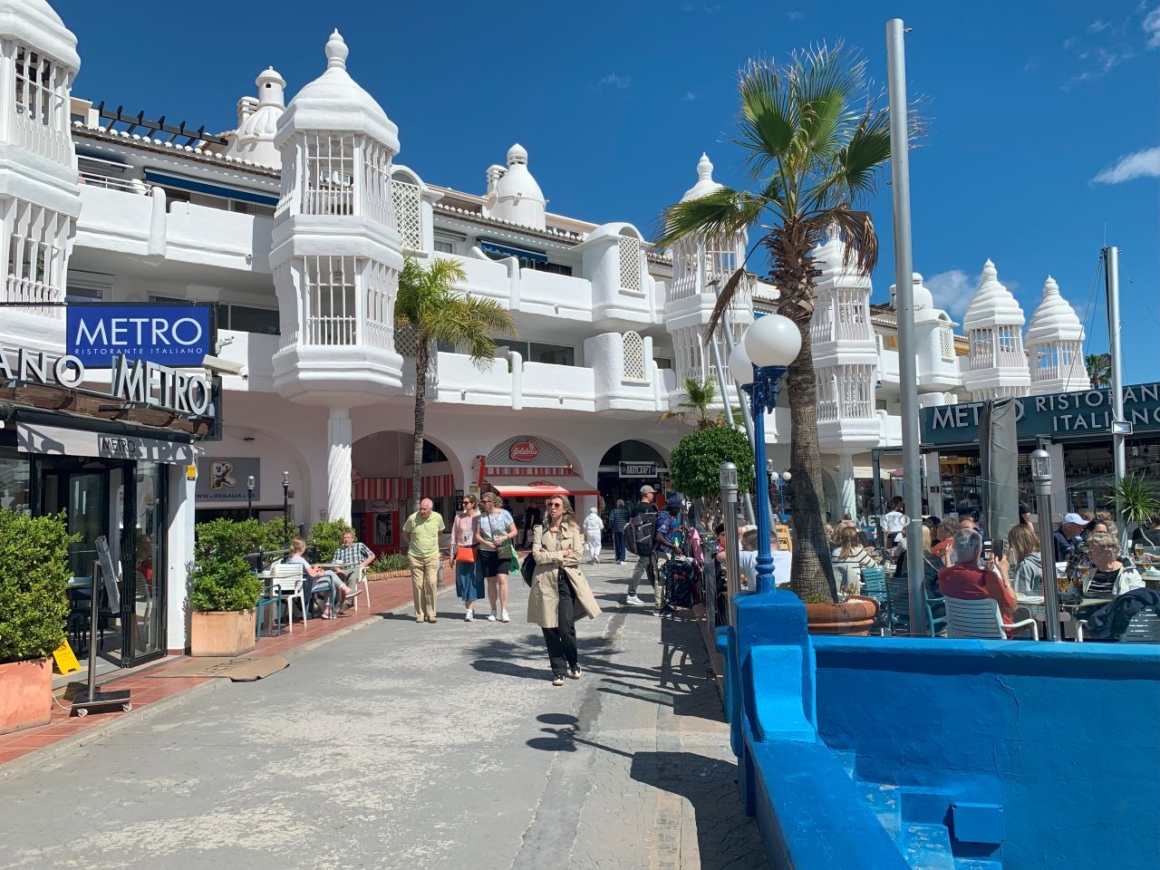
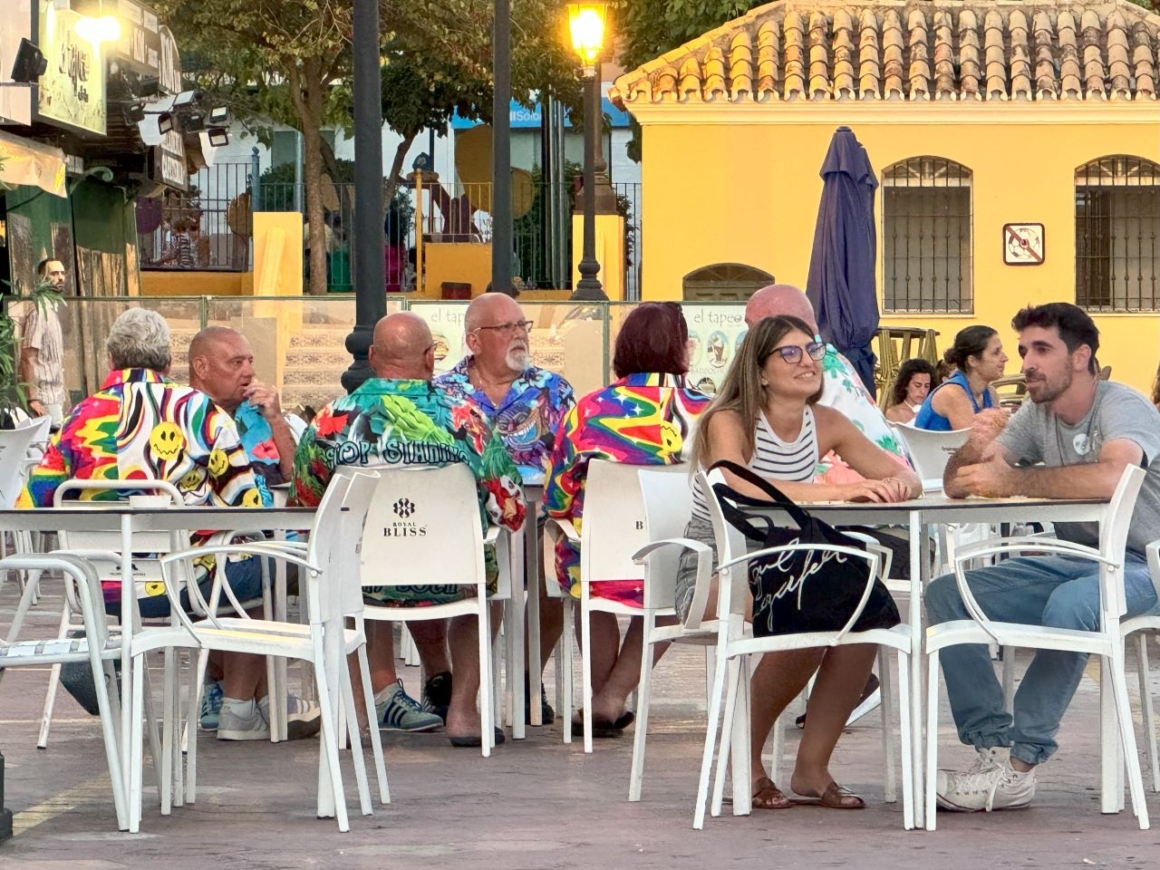
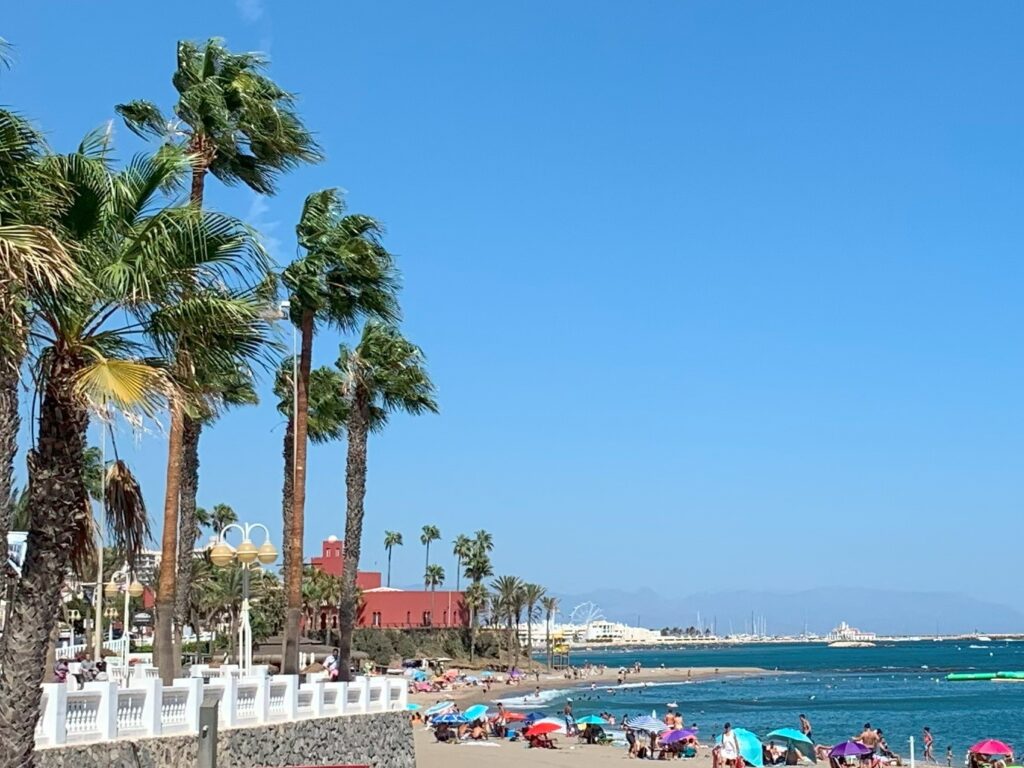
b)
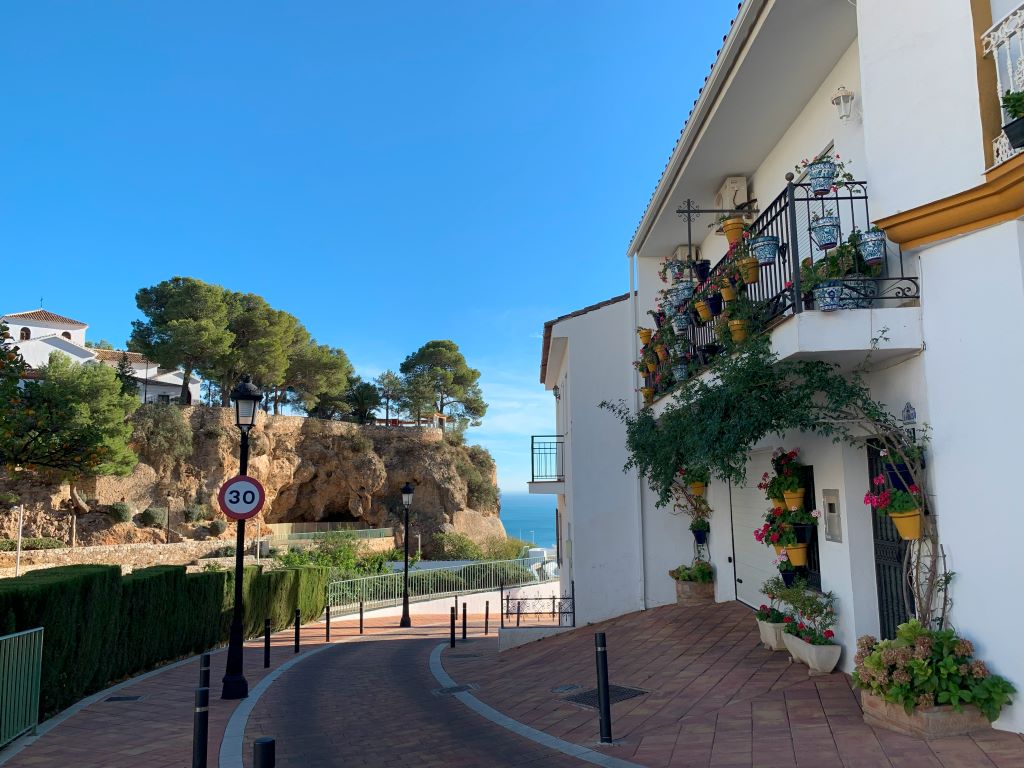
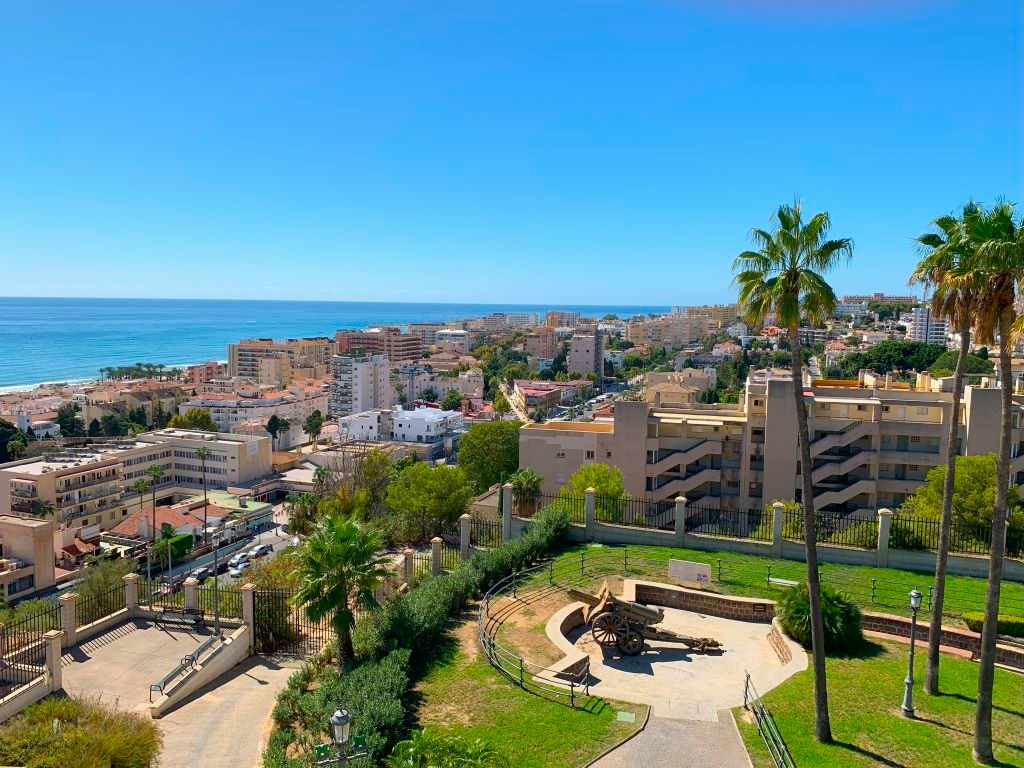
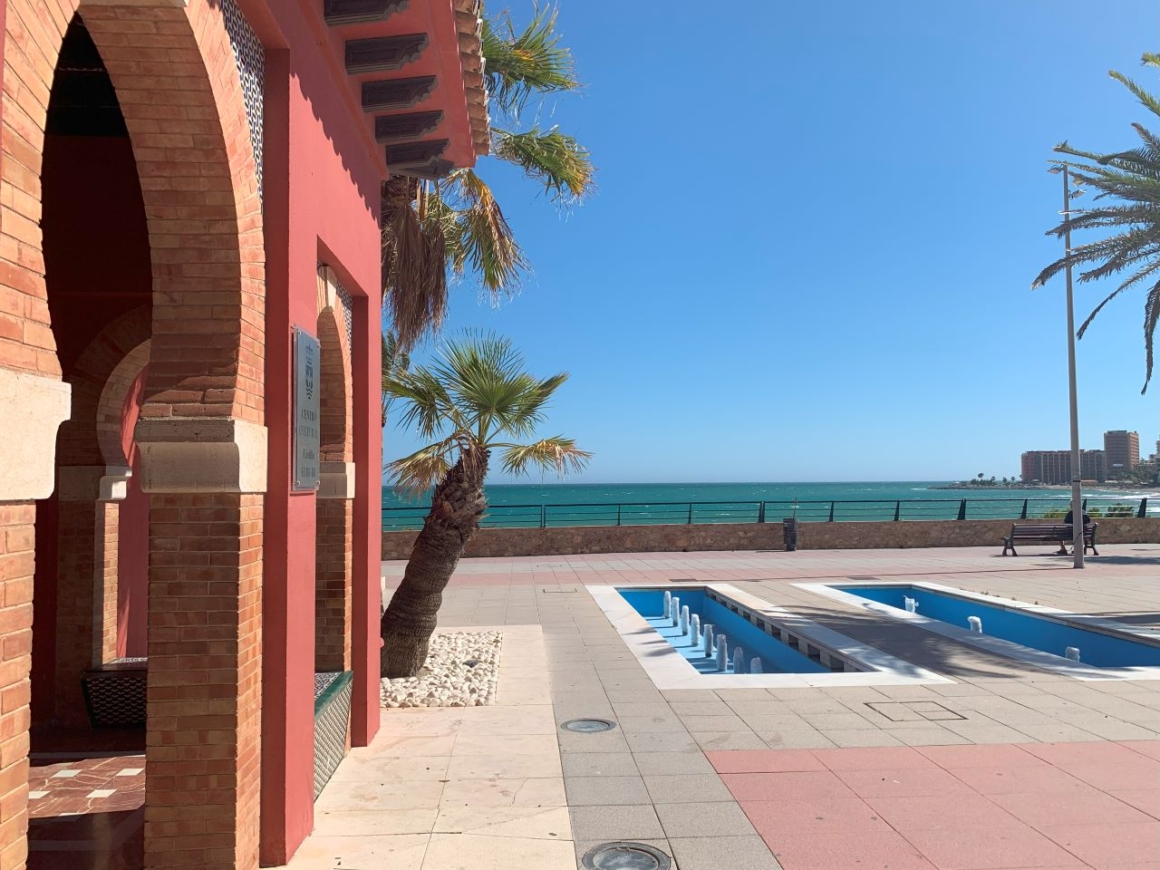
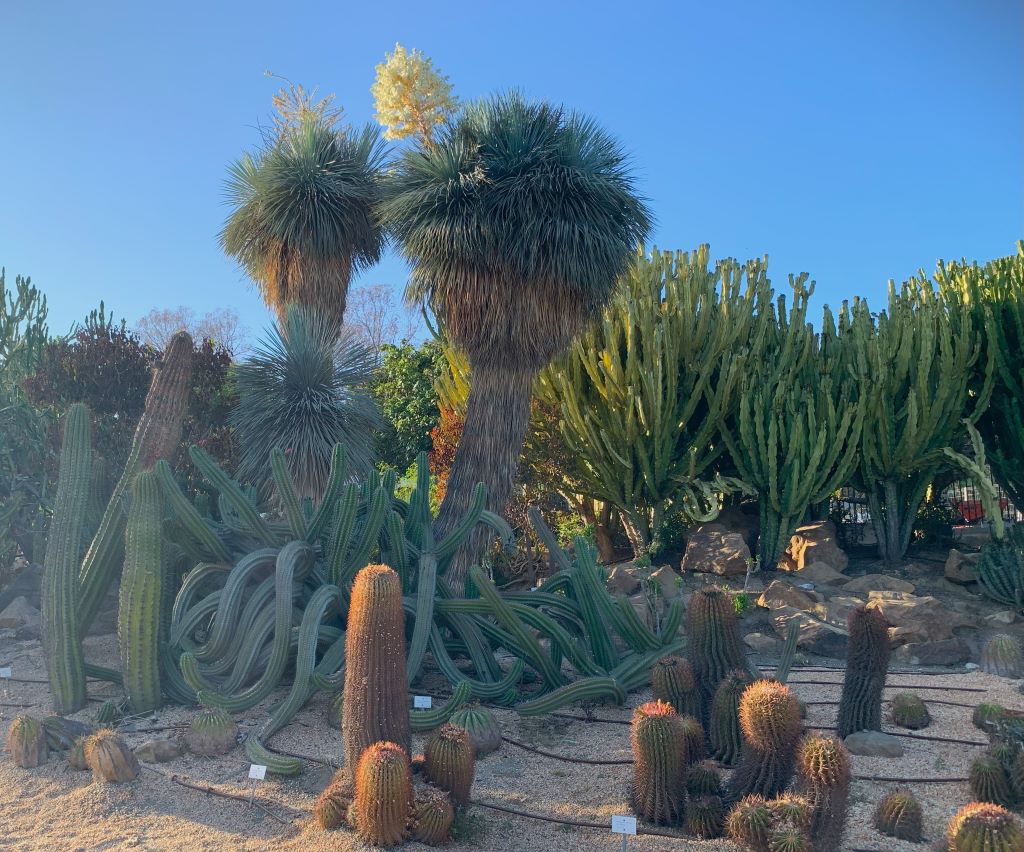
c)
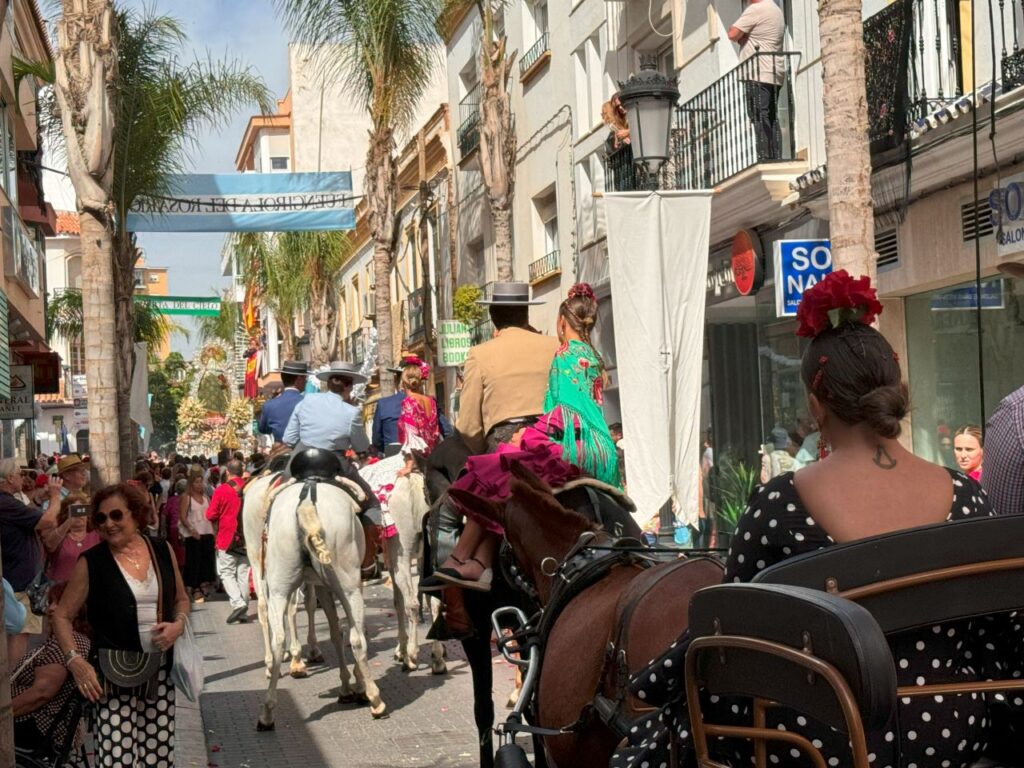
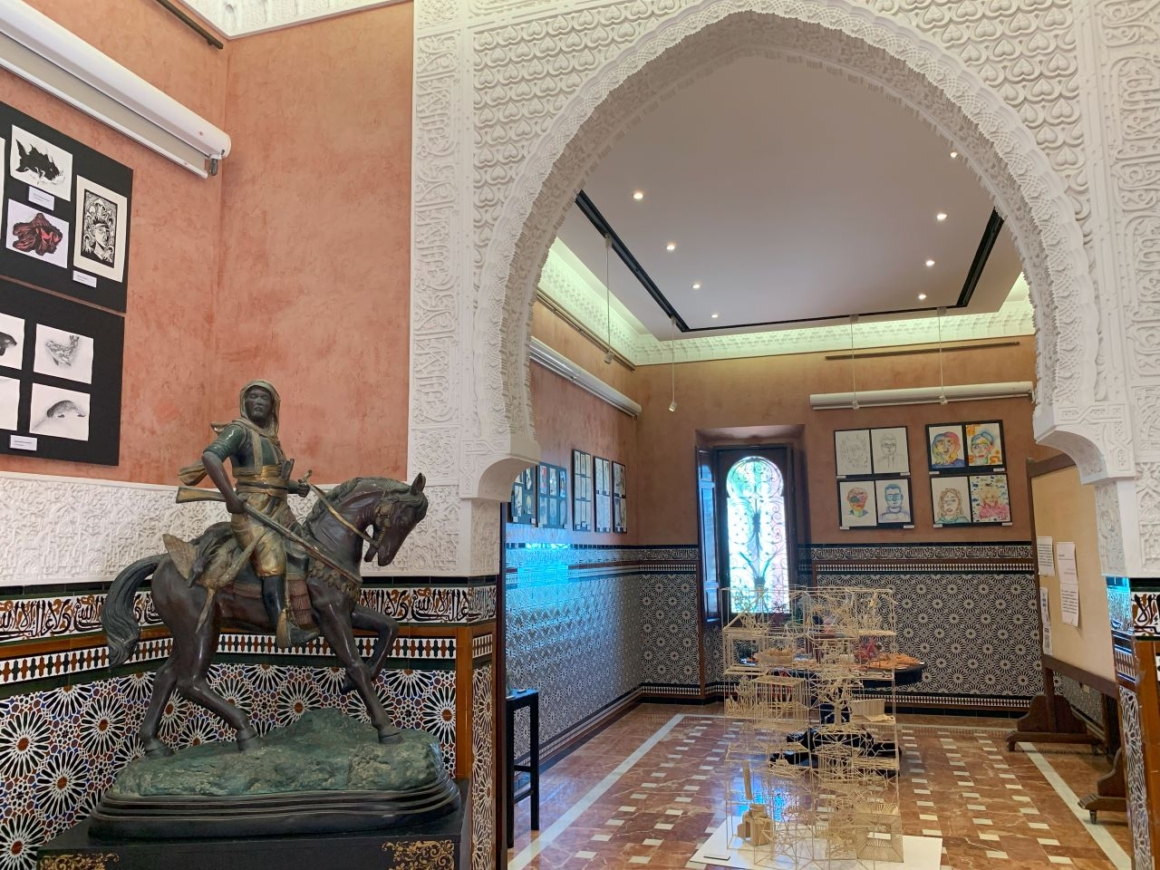
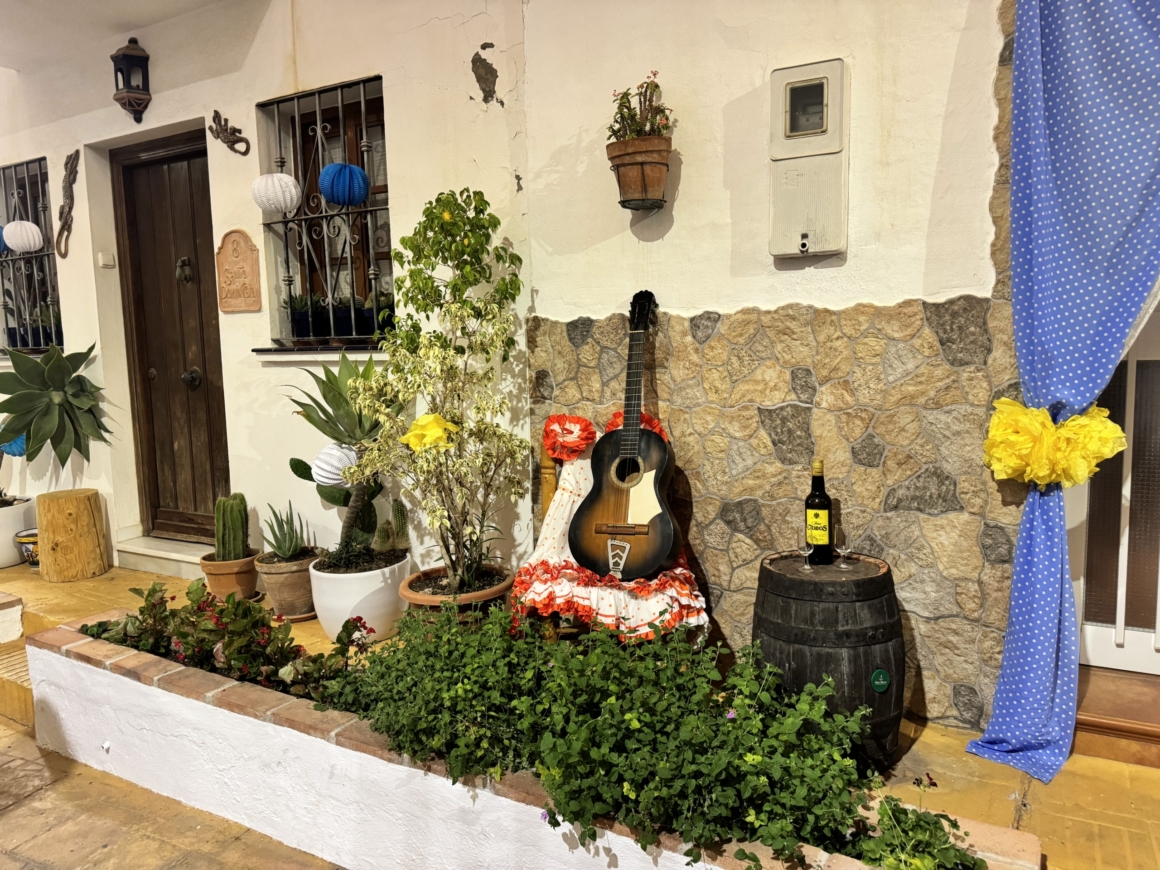
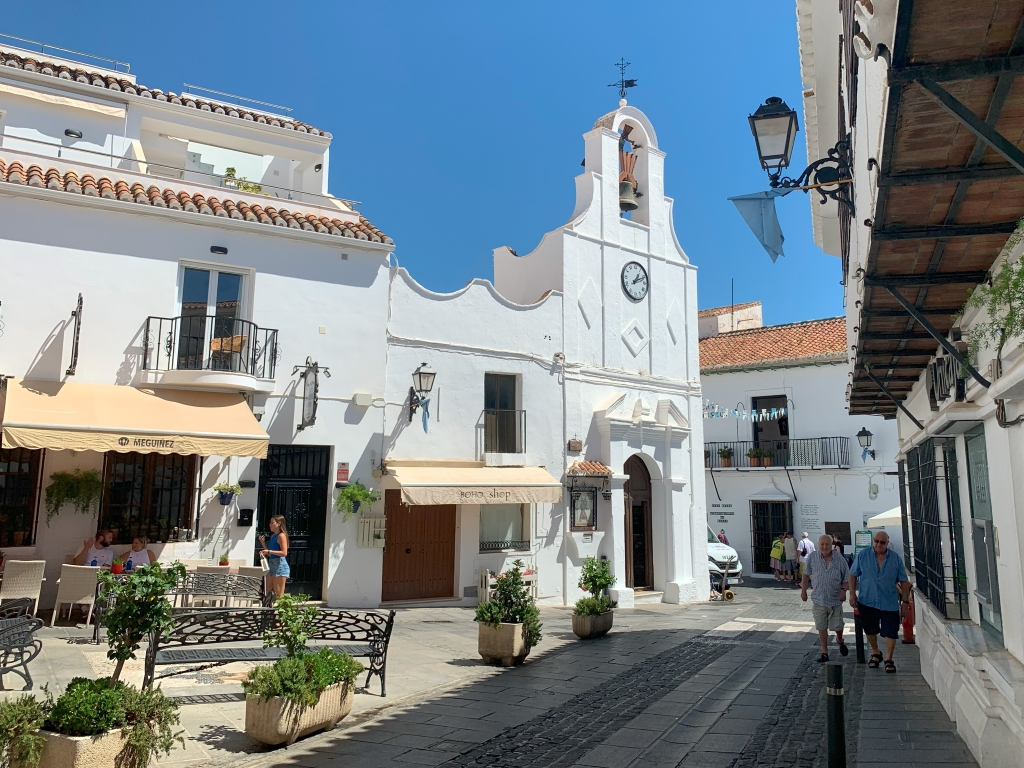
d)
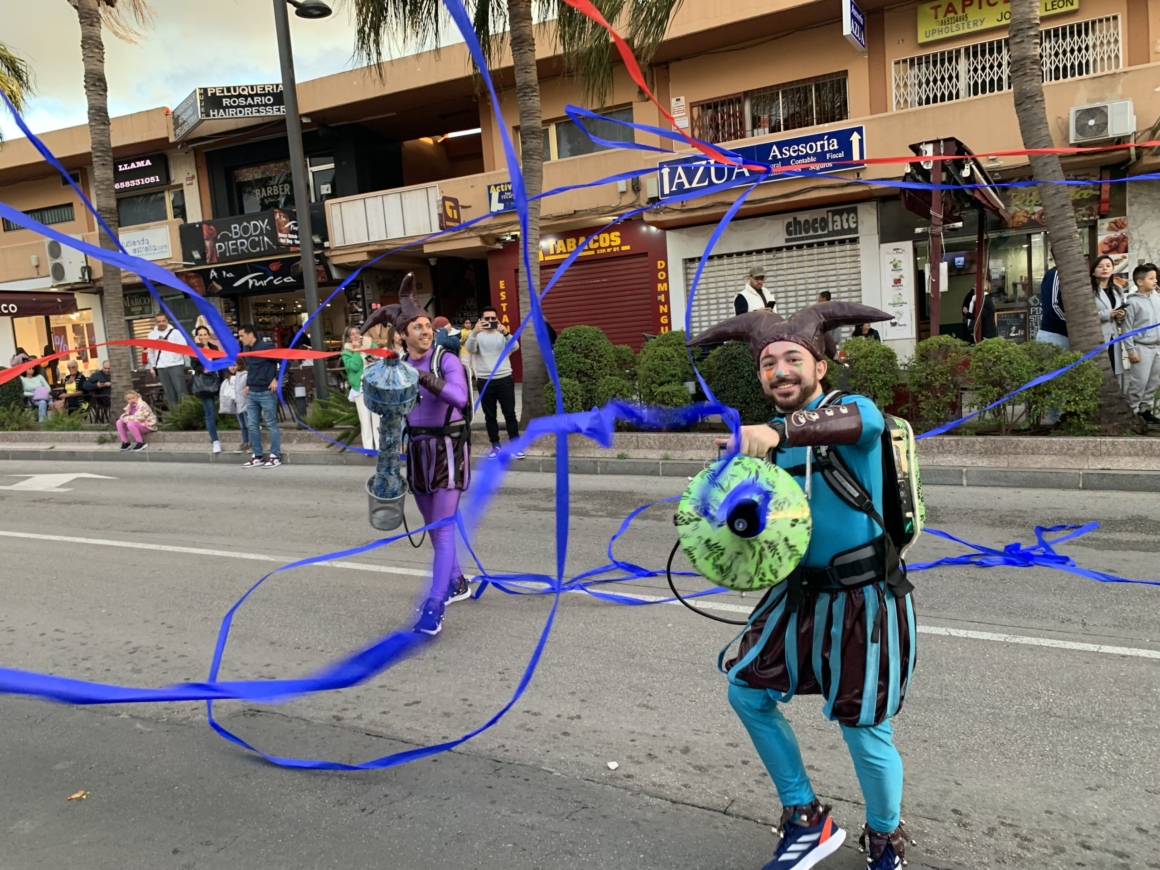
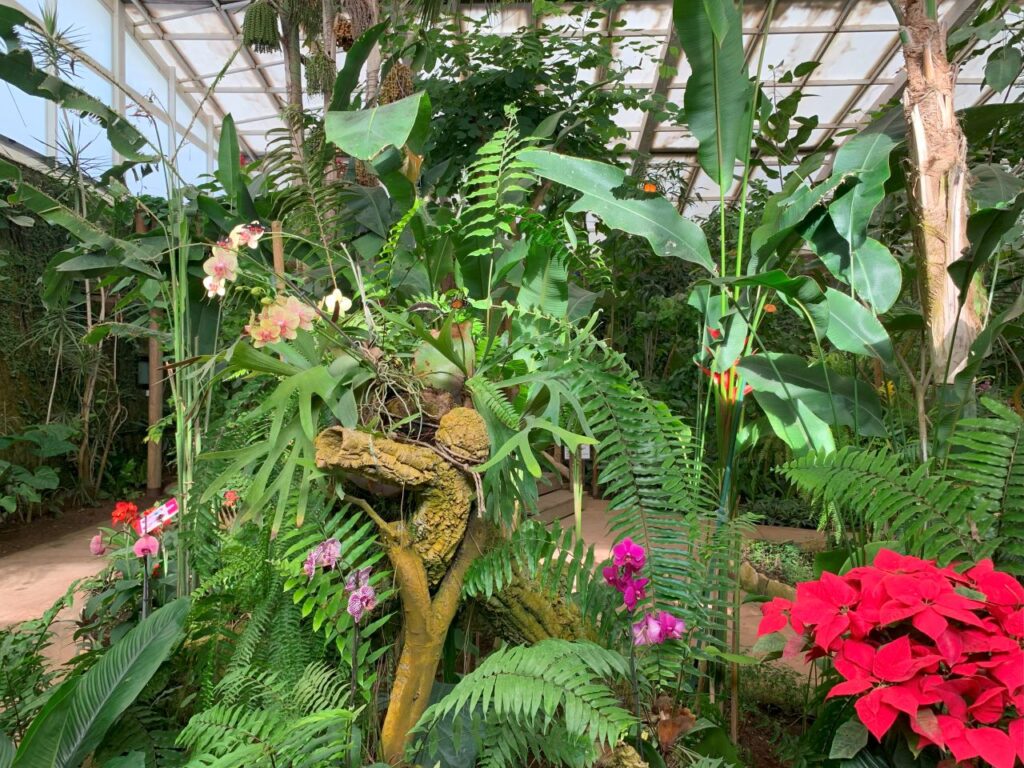
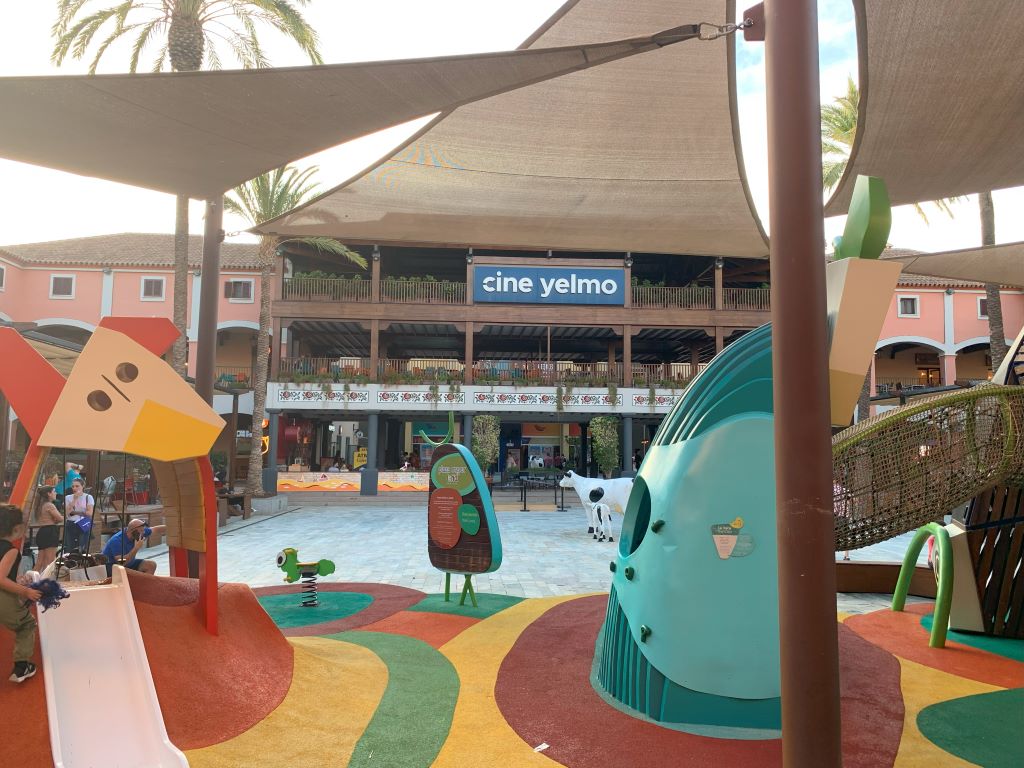
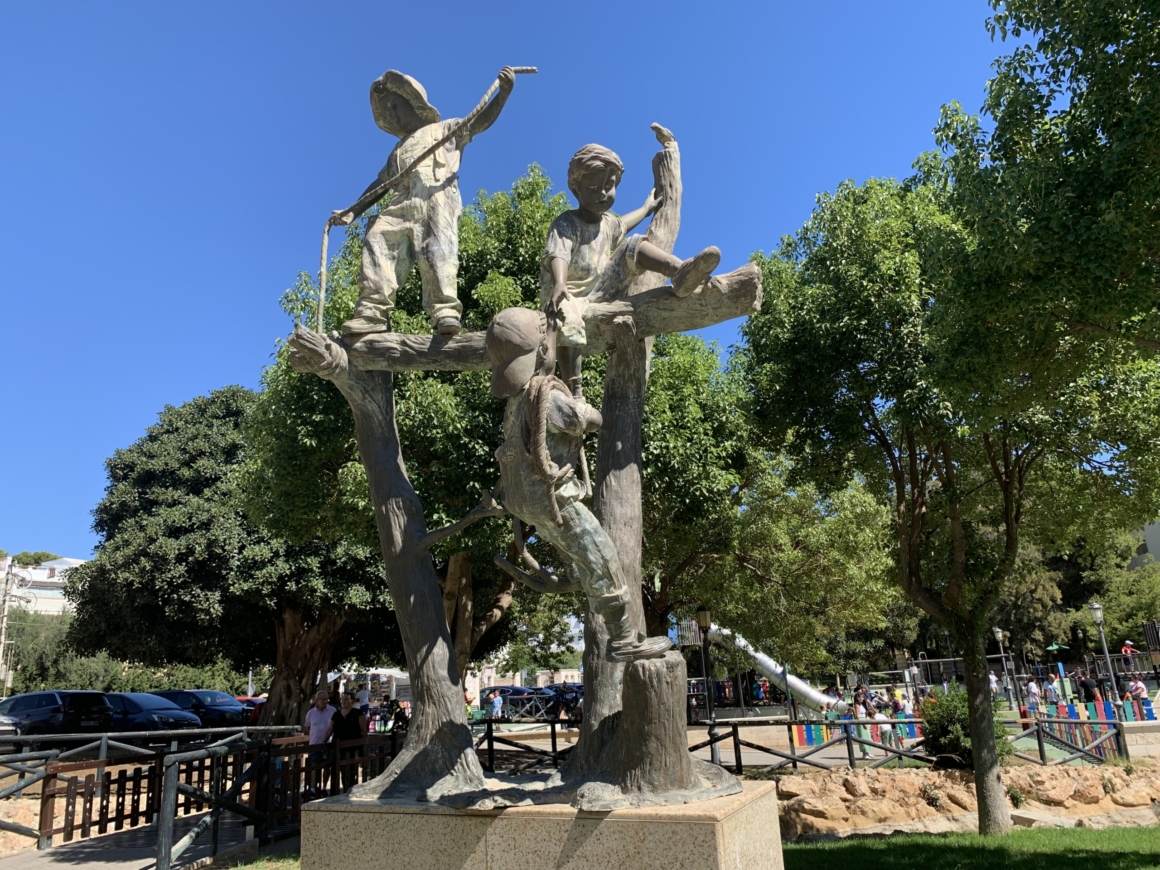
✨ Mama Málaga recommends ✨
✈️ Looking for plane tickets? Compare Kayak and Expedia
🏠 Looking for a vacation rental? VRBO
🛌 Looking for a hotel? Tripadvisor
🎟️ Looking for what to do? Check Get Your Guide, Tiqets, Civitatis and Fever
🚗 Planning to rent a car? DiscoverCars
💶 Planning to transfer money? Wise
📖 Planning to learn Spanish? Italki
🏖️ Planning to go to the beach? Sunglasses, sunscreen and a hat!
Click on the linked icons to know why. 😉
✨ Test Results
Now it’s time to know what part of the Costa del Sol is perfect for you!! You did a good job choosing your answers – they are all good options available in the Costa del Sol. 😉 Just check the letter you chose more often and look for it below. If you have a tie, check all that apply.
If you answered more A: the Sun Seeker
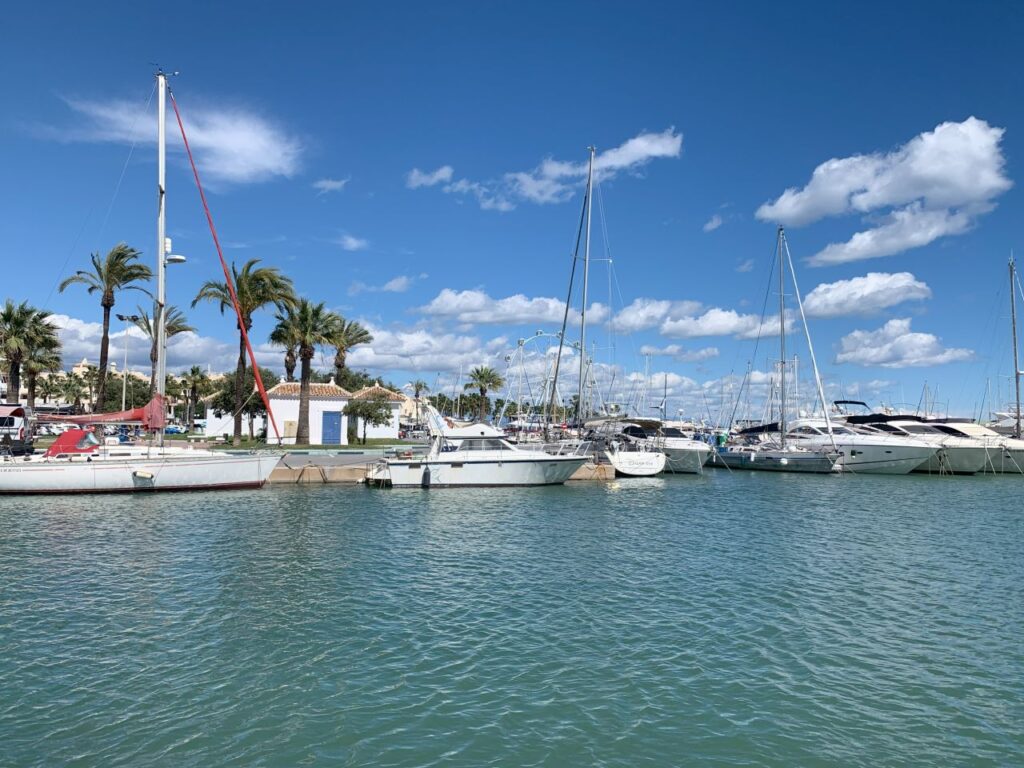
Your idea of vacation is to stay as much time as possible relaxing, either in a comfy hotel / rental or on the sand, enjoying the sea and a nice beverage. Wake up naturally, spend time in the sun, visit a good restaurant – as long as it is near your place – rest and go to the pool. That’s life at its best, and that’s what vacations are for!
What part of the Costa del Sol is best for you?
Puerto Marina in Benalmádena
La Carihuela in Torremolinos
Los Boliches in Fuengirola
La Cala de Mijas in Mijas
You have quite a few options! The Costa del Sol, as the name implies, is excellent for sun seekers. From the list above, Puerto Marina in Benalmádena is the most Sun Seeker of all, as it has more hotels, infrastructure and restaurants; it is a more developed area than the others – meaning more comfort at hand. It gives access to two gorgeous beaches and is a hotspot for tourists, especially British. La Carihuela in Torremolinos is a fantastic place, with a great promenade and right by Puerto Marina; being in either La Carihuela or Puerto Marina allows you to enjoy both, every day.
If you had a bit of mixed answers, with specks of B and C, you may want to check Los Boliches in Fuengirola and La Cala de Mijas. These are two former fishing villages of the Costa del Sol that preserved much of their charm and past. You’ll find plenty of sun, sand and restaurants in either. Los Boliches has its own train station, which makes getting there from the airport a breeze; La Cala de Mijas is a bit more remote and, therefore, less visited and possibly more affordable. All these options offer other attractions beyond beach, promenade and restaurants, if you choose to explore a bit.
If you answered more B: the Adventurer
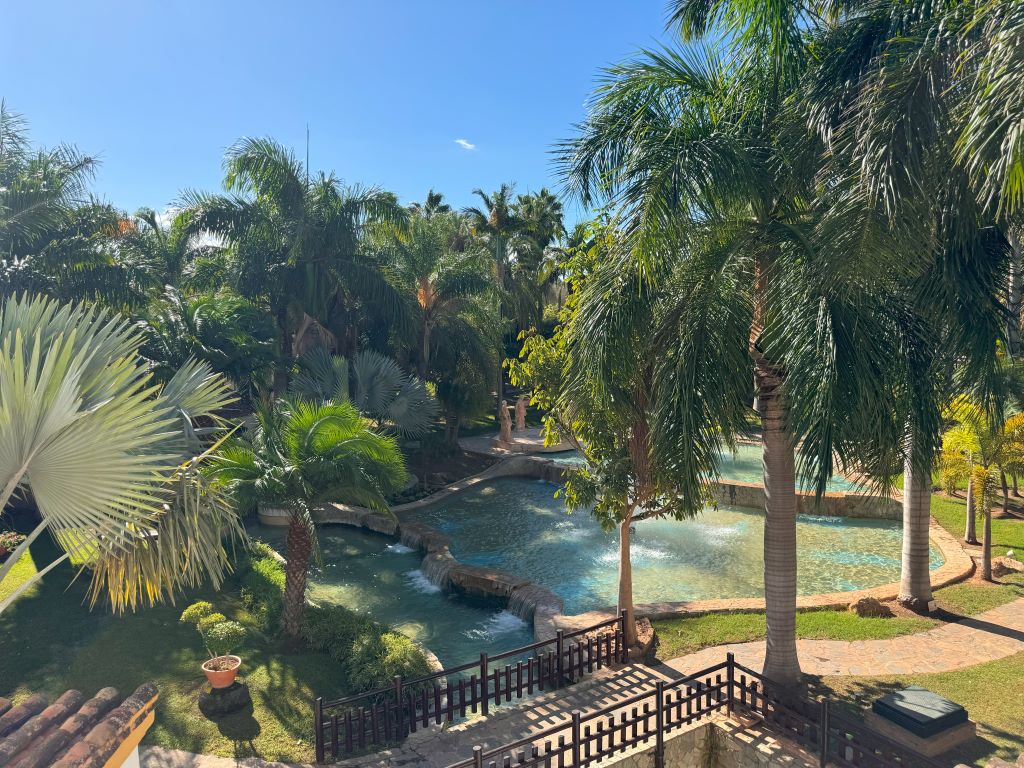
Your idea of vacation includes enjoying everything the area has to offer. You get to know the place as a local – or even better; you feel proud when someone asks you for directions, as you are quite competent at it. The goal is to leave no stone unturned, to see everything the place has to offer. You can rest after the vacations are over! Everybody around you wishes they had the same energy, even if they don’t say so.
What part of the Costa del Sol is best for you?
Anywhere close to a train station, as it will allow you to cover the largest area. Check in particular areas around these stations:
Málaga Maria Zambrano
Málaga Centro Alameda
Torremolinos
Benalmadena-Arroyo
Fuengirola
Málaga Maria Zambrano is the transportation hub of the Costa del Sol. You can take a train there to Cordoba, Seville, Granada or even Madrid! If your goal coming to Málaga focuses on exploring beyond the Costa del Sol, having a base near this station would be very convenient. And, of course, you can get from there to all the stations on the C1 and C2 lines, that stay in province of Malaga, as well.
If the goal is to explore the Costa del Sol, then the other four train stations listed are very interesting. These are the main stations of each of the cities covered by the C1 line; they each offer numerous possibilities to explore, as they are located in central areas of each city. 😉 Simply choose the one you would like to see the most of. To help your choice, check the posts linked to each station above – the variety of places they show is mind-blowing!
There is one place that is probably one your exploration list – and if it is not yet, it definitely should be: the Caminito del Rey, a surreal trail path across a gorge, more than 100m high above the ground. It is one of the highlights of the Costa del Sol, done with guidance and safety; one of the best adventures in Málaga! Another great idea is to take advantage of the many (many!) guided excursions available for different areas of the province of Málaga. Best part? There are several excursions for free!
If you answered more C: the Cultural Warrior
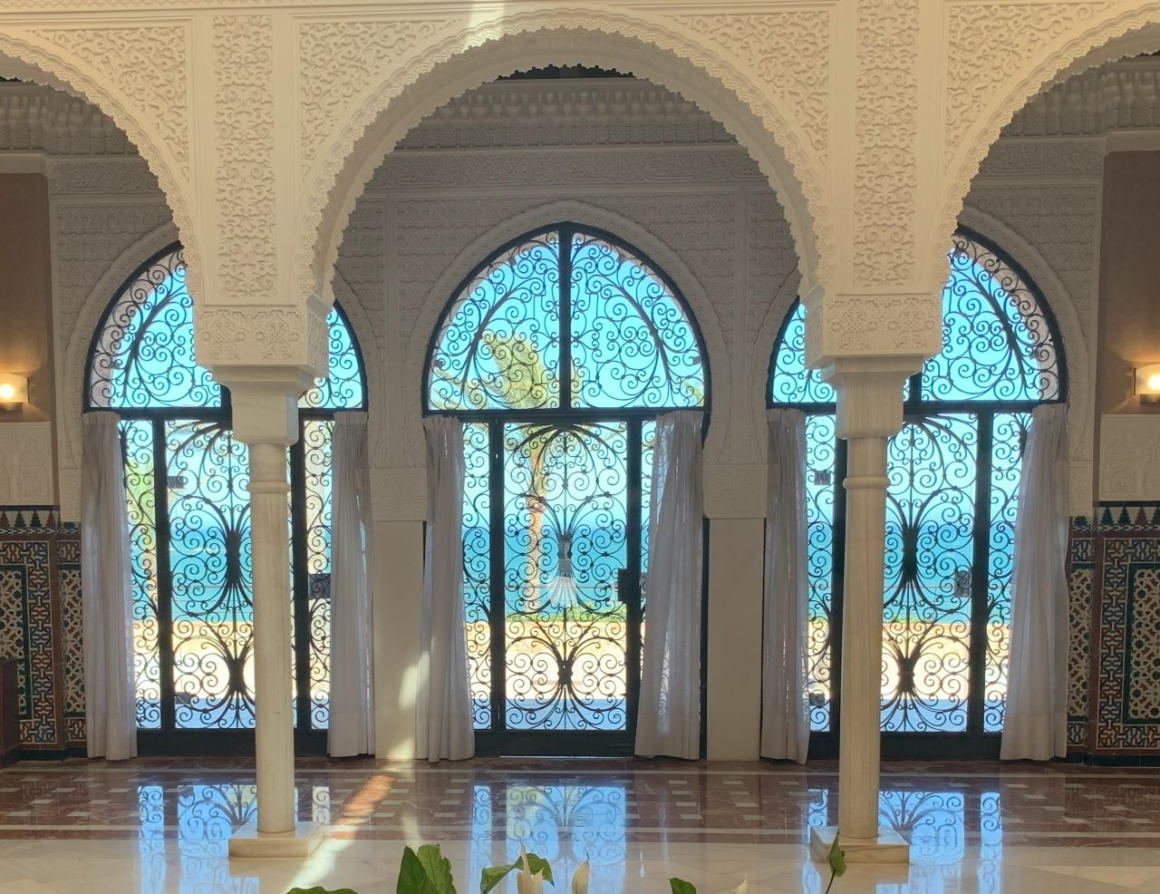
Museums, history, local festivals and heritage – a place is nothing without its context, and finding the connections between past and present are a fundamental part of knowing how a culture came to be. Taking pictures of monuments and beaches is but a scratch of what really knowing a place means; you want to know the dates and imagine the scenes of the past while wandering through the old towns.
What part of the Costa del Sol is best for you?
Málaga center
White villages
Benalmádena
Places where a Feria is going on
The center of Málaga, which you can check on the post about train stations in Málaga, is the best place for museums and cultural heritage. You can visit the Alcazaba and the ancient Roman Theatre, as well as the Castillo de Gibralfaro, all by foot. Contrast the fast passed Málaga with a white village (pueblo blanco), such as Mijas Pueblo or Benalmadena Pueblo, to see two completely different ways of Spanish life.
Check also the coastal scene – tourism is one of the main industries of the Costa del Sol, it is a very important part of the local reality. You can do that by visiting Benalmadena, which has great cultural facilities, including ruins of Roman Villas, a fantastic library, several watchtowers form Roman and Moors periods and even a museum dedicated to pre-Hispanic cultures in the American continent.
If you can make your trip coincide with a Feria, it’s a bonus! You can check a traditional celebration going on in real time. Ferias tend to celebrate both the past and the present, while being enormous and festive cultural displays. The Ferias season in the Costa del Sol run from May to October; it is amazing.
If you answered more D: the Family Traveler
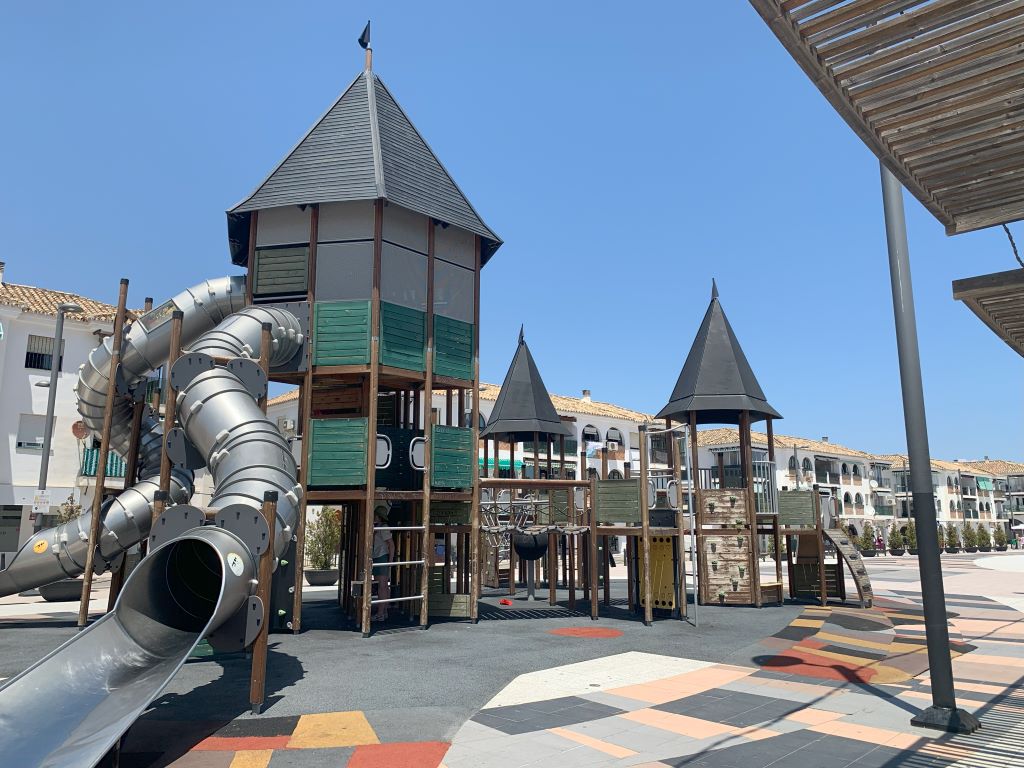
Seeing your kids happy is what really makes you happy; as long as you see they are having fun, you know you are doing a good job at raising them to be nice and fulfilled adults. An ideal place is the one that combines kids’ entertainment with something for the parents too, so everybody has a great time.
What part of the Costa del Sol is best for you?
Benalmádena
Benalmádena is by far the most children friendly place in the Costa del Sol. Check Benalmadena for kids to plan the places you and your family will visit – there are way too many to list here, so the topic has its own post. Benalmádena is central and well connected to the nearby towns by train, so you can visit the best attractions they have for families, too; check the Aqualand and the Crocodile Park in Torremolinos, and the Bioparc in Fuengirola if you have a bit of adventurer in you. 😉 Now if you have a lot of adventurer in you, check the Aquamijas in Mijas and Aventura Amazonia in Marbella as well!
Conclusion
I got a tie between C and A, and I couldn’t do the test choosing only one option per question! 😳 What about you? I would love to know! Please share your test results in the comments; it helps steering the site towards what you are more interested in reading about. 😉 Thank you for participating and have a great time in the Costa del Sol!
The Spanish white villages (Pueblos Blancos) are worldwide famous and part of Spain’s heritage. They are dreamy places where time seems to have stopped, preserving idyllic views and scenes of a much slower pace of life. Picture cobblestone streets and white houses framed by beautiful bougainvilleas, the sound of a guitar playing somewhere beyond the endless horizon and a nice square from where to absorb the environment while watching the soft movement of the village.
Visiting one of the Pueblos Blancos of the Costa del Sol is a must to immerse yourself in the Spanish lifestyle. The white villages near Málaga may give the impression to be completely apart from the city’s busy life, but on a deep layer, villages and large cities in Spain are closely related – both by family and economic ties. The Pueblos are where Spaniards that live in big cities go back to on holidays, and the place many of them call ‘home’. Visiting the white villages is a unique experience about finding the origins of what it means to be Spanish.
These are the white villages we will see in this post: Casares, Ojén, Mijas Pueblo, Benalmadena Pueblo and Frigiliana, all marked in the map below. They can be visited on a day trip or for a few days’ time – as long as you need to recharge. I’m sure you’ll love the experience!
Casares
Casares is a dramatic hillside village known for its steep streets and clusters of whitewashed houses that seem to defy gravity. Its origins are believed to date back to Roman times when Julius Caesar reportedly visited the area to benefit from its sulfurous baths. The village’s name is said to derive from the Roman general, and the nearby Roman baths still stand as a testament to this history.
Later, under Moorish rule, Casares became an important military and administrative center due to its fortified position and proximity to the coast. The Moors fortified Casares, adding a castle that still stands today and offers panoramic views of the surrounding countryside – on top of being part of the view itself.
Casares is also a hub for nature enthusiasts, with numerous hiking trails offering visitors the chance to explore the rugged landscape of the Sierra Crestellina Natural Park. The village’s local eateries serve traditional Andalusian dishes, making it an excellent spot to experience regional cuisine in a serene setting.
How to go and where to stay in Casares
Casares is easily achievable from Estepona: take bus line L-77 both ways. Check the times, though; this bus line just runs twice a day. Don’t miss the opportunity to visit the Roman baths or to enjoy a quiet afternoon in the village square, where you can sip on locally made wine and watch the pace of life unfold. Choose below where to stay in Casares:
Ojén
Ojén is a charming village in the mountains just inland from Marbella that feels a world away from the bustling Costa del Sol. Its history is deeply connected to its natural surroundings, with evidence of prehistoric habitation in nearby caves. During the Moorish period, Ojén became known for its production of aguardiente, an anise-flavored spirit that is still celebrated today. The village’s location made it an ideal refuge during times of conflict, and its name is believed to derive from the Arabic word “Hoxan,” meaning “rough terrain.”
A visit to Ojén offers a blend of history and natural beauty. The village is home to the Museo del Molino, which highlights traditional olive oil production, and to the Cueva de las Columnas and Cueva de las Campanas, prehistoric groups of caves with fascinating rock formations. They are open to visitors!
Nature lovers will appreciate the trails that are part of the Sierra de las Nieves, a UNESCO Biosphere Reserve. Ojén’s central square is a perfect spot to relax and sample local delicacies, such as the region’s famous cured meats and cheeses.
How to go and where to stay in Ojén
Visiting Ojén is very easy from Marbella. The village is accessible by local buses (lines L-80 and L-82) departing from Marbella’s bus station several times a day. The trip takes only 20 minutes! You can explore more of Ojén staying for a few days; pick your place below: 😉
Mijas Pueblo
Mijas Pueblo is one of the most iconic white villages on the Costa del Sol, high above the coast with stunning views of the Mediterranean. Its origins date back to ancient Iberian settlements, with later influences from the Phoenicians, Romans, and Moors, all of whom left their mark on its architecture and layout. The village’s strategic position made it a significant site during the Moorish period, and its narrow streets still reflect the town’s medieval past. After the Christian Reconquista in the 15th century, Mijas transformed into a tranquil farming community.
Today, it is a popular destination for visitors interested in exploring its history and traditional Andalusian culture. Walking through its narrow streets, you’ll find traditional whitewashed houses, flower-filled balconies, and a sense of timelessness.
Visitors can immerse themselves in Mijas Pueblo’s rich heritage by visiting its landmarks, including the Ermita de la Virgen de la Peña, a chapel carved into the rock in the 17th century, the botanical route and the bullring, which is uniquely oval-shaped. The village is also known for its artisan workshops and the (small in itself) Museo de Miniaturas, which showcases an eclectic collection of tiny objects. To see more about this village, check our dedicated post, the beauty of Mijas Pueblo.
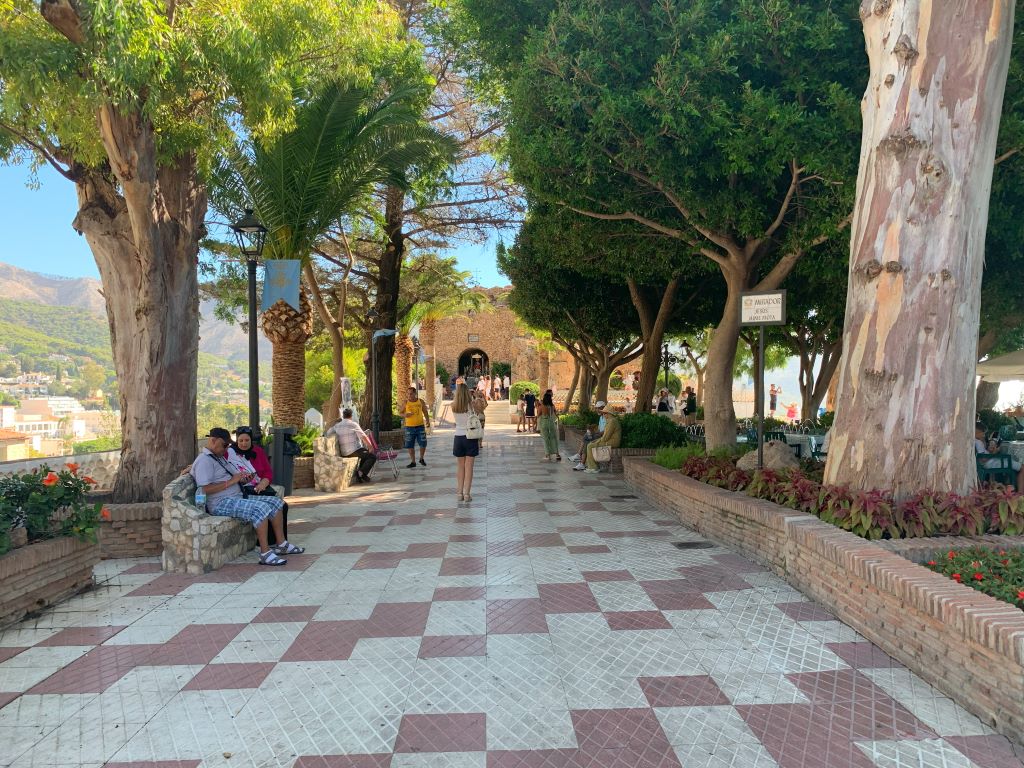
Visitors can see the donkey taxis, a nod to the village’s agricultural past, from when donkeys were the primary mode of transport for local farmers (but please don’t use them; there are serious concerns about how the donkeys are treated). The donkeys are, up to this day, the symbol of Mijas.
The village is a perfect spot for soaking in Andalusian culture, with artisan shops, tapas bars and panoramic viewpoints that make it worth a visit. You can spend lovely days in Mijas Pueblo, enjoying the view and the peace of this adorable village.
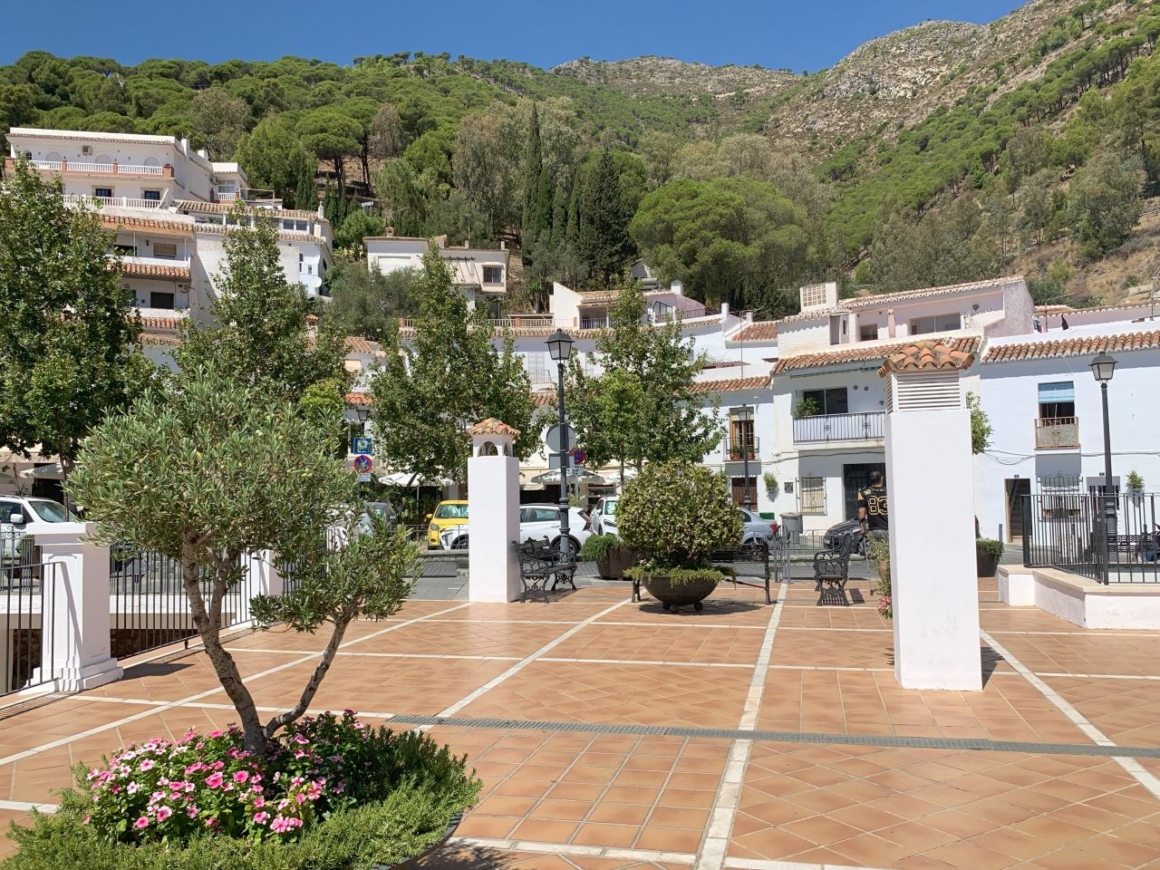
How to go and where to stay in Mijas pueblo
Mijas Pueblo is one of the easiest white villages to reach, as there are regular buses from Málaga (line M-112), Torremolinos and Benalmadena (lines M-112 and M-121) and especially, Fuengirola (M-122) several times per day. Click on the name of the line to see times and routes, and on the map below to choose your stay!
Benalmádena Pueblo
Benalmádena Pueblo, the oldest part of the modern municipality of Benalmádena, is a quaint village that retains much of its traditional Andalusian character. Its history stretches back to prehistoric times, with evidence of early settlements found in nearby caves. During the Moorish period, the village grew into a small but significant community, known for its agriculture and trade. Following the Reconquista, Benalmádena became a quiet, rural area until the 20th century, when tourism brought new life to the region.
The village’s key attractions include the Castillo de Colomares, a monument built in the 20th century to honor Christopher Columbus and his voyages, and the Benalmádena Stupa, a striking Buddhist temple offering panoramic views. Visitors can also wander through its narrow streets, discovering small plazas and hidden courtyards filled with flowers. Benalmádena Pueblo is a quieter alternative to the bustling coastal areas, making it ideal for those seeking a more relaxed experience. It is also home to Churros & You, that has the best churros on the planet.
Benalmádena Pueblo offers a peaceful contrast to the busy coastal areas of the Costa del Sol. This charming village is one of the three distinct areas that make up Benalmádena – the other two being Arroyo de la Miel and Benalmádena Costa. I’ve dedicated a full post to discuss if it is worth visiting Benalmadena Pueblo (spoiler alert, it is)! The village is perfect for a leisurely stroll, with narrow streets, white houses, and colorful flowerpots adding to its charm.
How to go and where to stay in Benalmádena Pueblo
For those seeking both history and serenity, Benalmádena Pueblo is a must-visit. Getting there from Benalmadena is very easy with the with the bus lines M-103, M-112, M-121 and M-126. Some of these lines pass also in Malaga (M-126) and Torremolinos (M-112 and M-121). Check below great options of places to stay in Benalmadena Pueblo.
Frigiliana
Frigiliana is widely regarded as one of the most beautiful white villages not only in the Costa, but in the whole Spain, with its roots stretching back to the Moorish era. The village’s historic quarter, known as the Barrio Mórisco, is a maze of steep, cobbled streets that preserve its medieval Islamic design.
After the fall of the Moors, Frigiliana became a center for sugarcane production, a tradition that continues to influence the village’s cultural identity. The annual Festival of Three Cultures, in the end of summer, celebrates the coexistence of Christian, Jewish, and Muslim traditions that shaped its history.
Visitors can explore the village’s historic streets while learning about its past through the ceramic plaques that line the walls. The Museo Arqueológico de Frigiliana provides further insight into the area’s history, showcasing artifacts from prehistoric to modern times. The village is also known for its local specialties, including miel de caña (sugarcane honey), which can be sampled in many local shops. With its proximity to the Sierras de Tejeda, Almijara y Alhama Natural Park, Frigiliana is a great base for hiking and enjoying nature.
How to go and where to stay in Frigiliana
As far as I know, there is no direct connection by bus from Malaga to Frigiliana; the best way to go there would be either by car or with one of the many excursions that reach the village. If you are planning to stay, here are the best places:
Conclusion
Visiting the white villages of the Costa del Sol is a unique and remarkable experience that enhances your Costa del Sol holidays. If you are looking for the authentic and traditional Spain, or if you just want a relaxing experience surrounded by nature and beautiful landscapes, for hiking or for meditation, visiting a Pueblo Blanco is the right call. Be it as a day trip or for a longer stay, there is a Pueblo Blanco close to each of the main towns of the Costa del Sol. Come, relax and enjoy your time!
Marbella’s Starlite Festival is back for 2025, promising a summer filled with world-class music, glamorous vibes, and magical nights under the stars. As one of Europe’s most prestigious boutique festivals, Starlite, also known as Starlite Occident, continues to attract music legends, cultural icons, and fans from across the globe. The 2025 edition is shaping up to be a must-see event, both for seasoned festival-goers and for those new to the scene!
A Brief History of Starlite Festival
Founded in 2012, Starlite Festival has evolved from a local gem to an internationally acclaimed event. The festival’s venue itself is a star attraction: it is an open-air auditorium surrounded by the natural beauty of Marbella’s cliffs in the picturesque setting of La Cantera de Nagüeles.
Over the years, it has hosted iconic artists like Elton John, Lenny Kravitz, Plácido Domingo, Lionel Richie and Sting, among many more. The festival’s unique mix of intimate performances, luxurious ambiance, and stellar line-ups has made it a magnet for celebrities and music lovers alike.
Starlite Festival Shows 2025
The artists in the Starlite Festival 2025 are a mix of contemporary and legendary artists, from Spain, the Spanish-speaking world and beyond. You are sure to find quite a few you know and look forward to seeing perform. Here is the complete list and show dates:
June 13 – Emilia
June 20 – Nathy Peluso
June 27 – Kool & The Gang
July 2 – Gente de Zona
July 3 – Marc Anthony
July 5 – Raphael
July 8 – Europe
July 10 – Seal
July 18 – Jhayco
July 19 – The Script
July 21 – Scorpions
July 23 and 24 – Miguel Bosé
July 25 – Il Divo
July 26 – Will Smith
July 27 – The beach boys
July 31 – Ana Belen
August 1 – Rels B
August 3 – Santana
August 6 – Clean Bandit
August 8 – Amaral
August 12 – Beret
August 14 – Los Secretos
August 19 – Siempre Así
August 20 – Alejandro Fernandez
August 23 – Fangoria + Nancy Rubias
August 29 – Camilo
Tips for Festival-Goers
Book Early: Tickets and accommodations sell out fast, especially for headline acts and VIP packages.
Dress to Impress: Starlite is as much about fashion as it is about music. Think chic summer evening wear.
Explore Marbella and the Costa del Sol: While you’re here, take some time to enjoy Marbella’s beaches, historic old town, and world-class dining, as well as the nearby towns of Mijas and Fuengirola.
Tickets and accommodation near the Festival
You can buy your tickets from the Starlite Festival site. The festival will happen in the Auditorio Marbella, in the Cantera de Nagüeles (Calle Albinoni, Marbella), marked below, to make your selection easier; pick your choice of stay and book fast – the best places are going to be taken soon!
What to Expect in 2025
The 2025 edition of Starlite promises to raise the bar even higher. Here’s what’s in store:
1. A Star-Studded Line-Up Get ready for performances by global superstars across genres. From chart-topping pop acts and legendary rock bands to classical virtuosos and Latin music icons, there’s something for everyone. Some of the biggest names in music are making Marbella their summer stop, and the official line-up announcement has already sparked massive excitement.
2. Exclusive Experiences Starlite isn’t just about music—it’s an all-encompassing lifestyle experience. VIP lounges, gourmet dining, and premium hospitality make this festival stand out. Picture yourself sipping champagne as the Mediterranean breeze flows through, all while enjoying an electrifying performance.
3. Stunning Venue The unique amphitheater setting ensures exceptional acoustics and an intimate connection between artists and audiences. Imagine watching your favorite artist perform under a canopy of stars in one of the most breathtaking venues in the world.
4. Cultural Highlights Beyond music, Starlite 2025 will feature art exhibitions, film screenings, and charity galas, making it a cultural hotspot. It’s a perfect opportunity to immerse yourself in Marbella’s vibrant art scene.
Why Starlite 2025 is Unmissable
More than just a festival, Starlite is a celebration of life; it’s where a summer to remember will be made. Mark your calendars, pack your bags, and get ready for an extraordinary summer: the Starlite Festival 2025 awaits you! Superstars, VIPs, gourmet dining under the stars, fashion… you get it all in Marbella. Let’s celebrate good times! It’s the final countdown to booking your tickets and hotel; the future is in the air with great times gettin’ jiggy wit it! 😉
Torremolinos Guide – Every now and then I hear someone saying there is nothing to do in Torremolinos beyond the beaches and the promenade. Well, I disagree! Let me show what Torremolinos has to offer in this Torremolinos Guide – and let me tell you: after almost 3 years living in the Costa del Sol, I still find more in and about Torremolinos!
What to do in Torremolinos?
So much! We will start close to the mountains, in the upper areas of Torremolinos, and move downhill towards the beaches, that we will see on the next section. If you need some help understanding the areas, check the map below or, better yet, our post explaining all 11 neighborhoods of Torremolinos. 😉 These two posts go hand in hand, but while there it was all about the areas, here, I want to focus on the most interesting things Torremolinos has to offer.
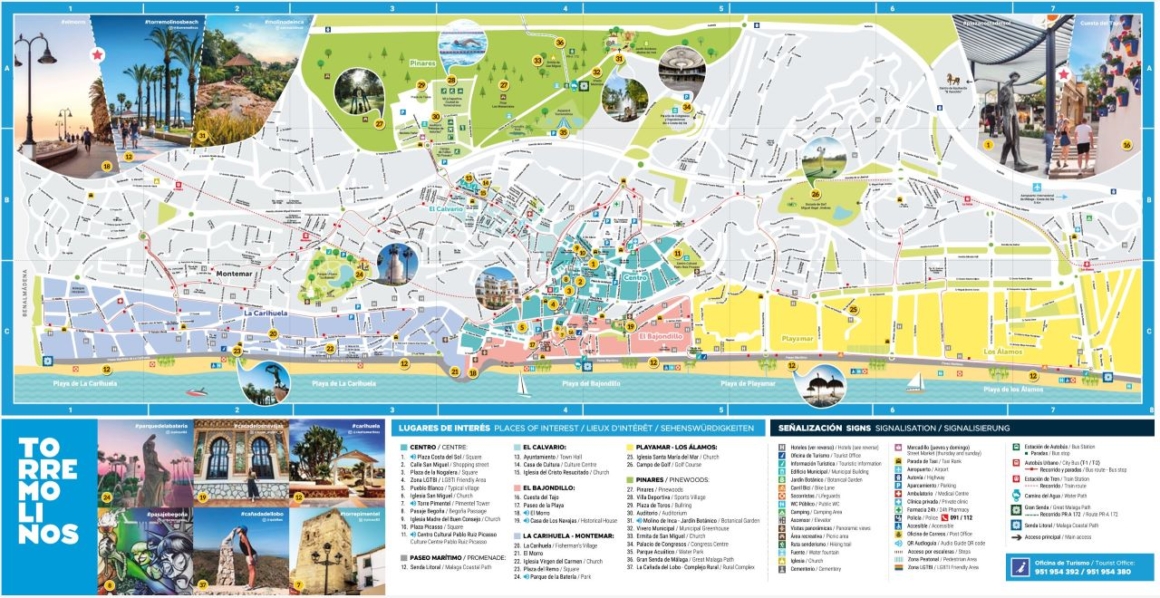
El Ranchito
Ritmo a Caballo (Horse Rythm) is a traditional spectacle that has been happening every Wednesday for more than 30 years. It mixes two Andalusian traditions, horse riding and Flamenco, in one show – yes, even the horses in Andalusia dance Flamenco. Immerse yourself in this one-of-a-kind cultural tradition. The show at El Ranchito lasts 1:30h, but you can arrive early to take pictures with the horses!

Molino de Inca Botanical Garden
The Molino de Inca Botanical Garden is a luxurious place in Torremolinos. Tall, abundant green vegetation, birds, walks and water fountains in a large area of Torremolinos, close to the AP-7. There’s even a Japanese Garden in the premises, along a small museum with moving dioramas explaining how the mills, (molinos, in Spanish) that named the town, worked centuries ago. To know everything about this magnificent oasis, check our post about the Molino de Inca – prices, opening times, how to go, and many pictures – it’s all there.
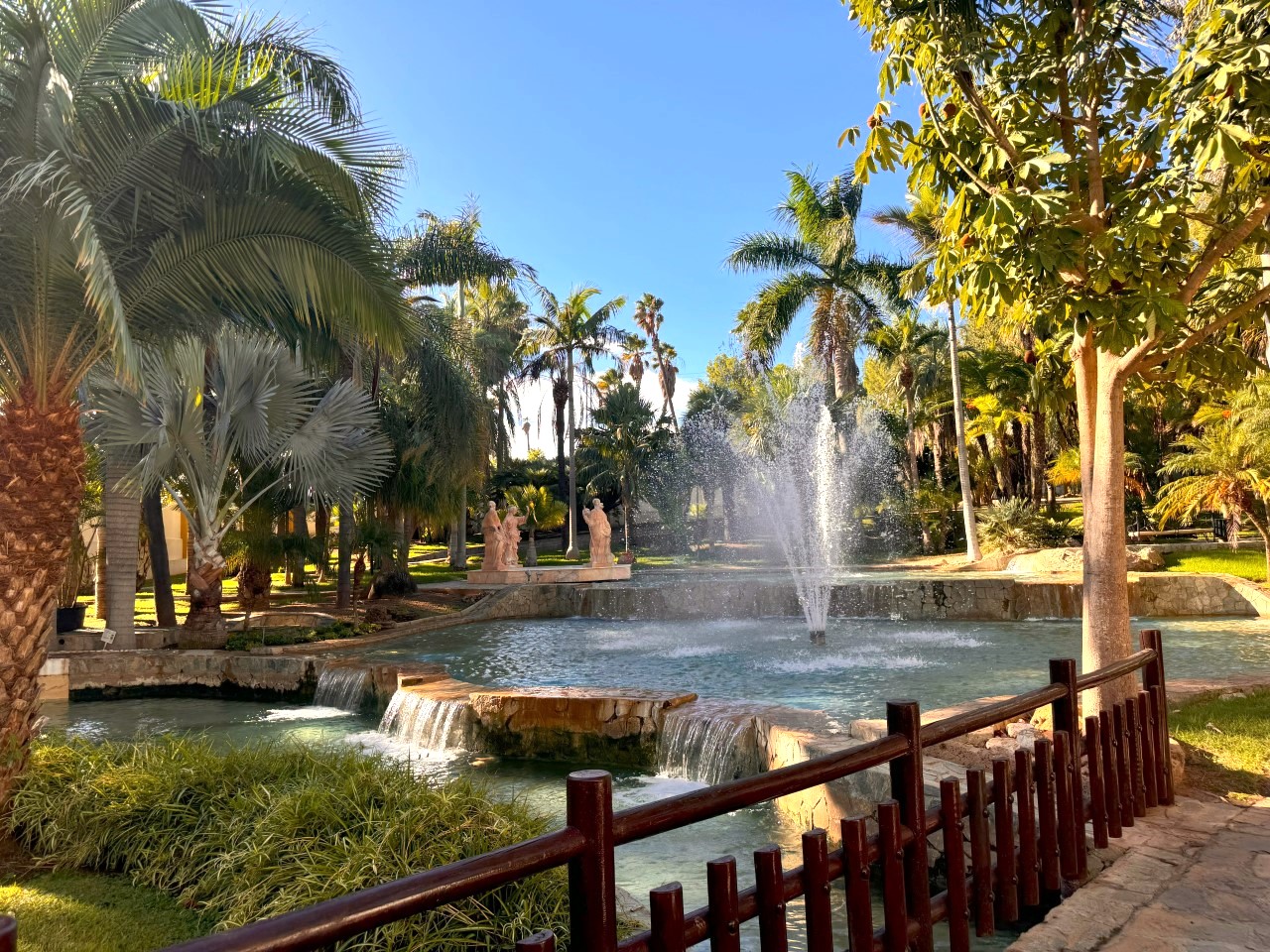
Aqualand

Aqualand is the waterpark in Torremolinos. Huge waterslides, pools and many attractions makes Aqualand a favorite among kids and parents every summer in the Costa. The park is normally open from May to September, and it is advisable to buy tickets ahead. Spend a day in the sun like no other!
Crocodile Park
Enjoy a day of safe adventures in Europe’s only crocodile park. Visit more than 200 crocs of different species and variable sizes – some weighing up to half a ton, some little babies you can hold in your hands and get a picture with. Only in Torremolinos! (Well, also in Florida; but there, without the safety fence).

Street markets in Torremolinos
The street market called Mercadillo de Torremolinos happens every Thursday, from 9:00 am to 2:00 pm, at Avenida del Real, in the Recinto Ferial (fairground) of Torremolinos. The Rastro de Torremolinos happens in the same place and time on Sundays, and the difference between both is that the Rastro is a second-hand market, while the Mercadillo is a market for band new goods.
The closest train station to it is Montemar Alto, but it takes a good 20 minutes’ walk from the train to the market; from inside Torremolinos, the T-1 bus line leaves you by the entrance of the fairground.
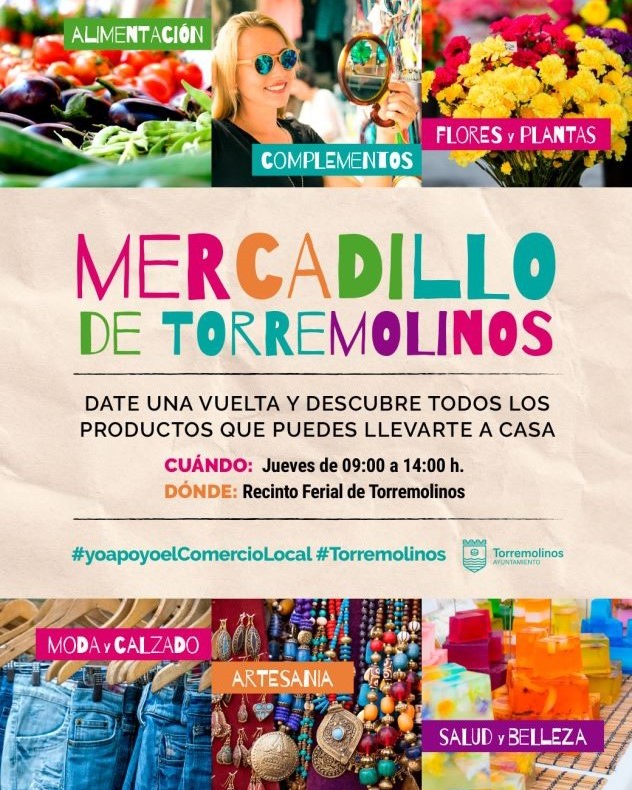
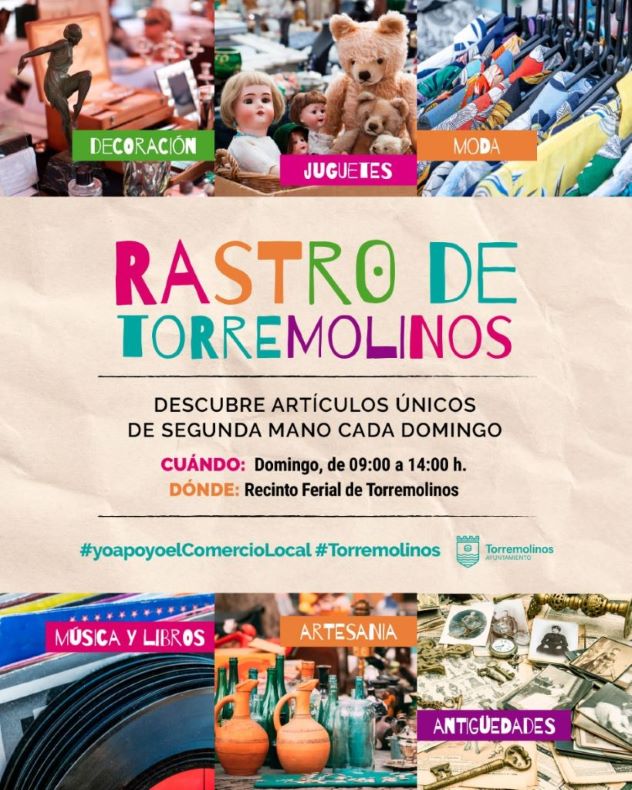
There are Street markets in the Costa del Sol every day of the week. Thanks to the great train and bus connections between Torremolinos and the nearby towns, you can explore the other markets as well; check here the full list with places, days and locations. 😉
Torremolinos Center
There is so much to do and to see in Torremolinos center!! We have shown a lot of the center when we talked about the Torremolinos train station, right in center of Torremolinos, in the Plaza de la Nogalera. The famous Calle San Miguel, the ways to go from the center to the beach – both by stairs or using the elevators – Plaza de Andalucia, Plaza de la Unión Europea and Plaza de la Costa del Sol, they are all there.
To avoid repetition, here I just want to add one location that has been renamed and renovated in the end of 2023 and now has many a visitor trying to find: the Piano Key stairs. It’s in the Pasaje Pía Beck in Avenida Isabel Manoja:
Pía Beck was a Dutch pianist that lived in Torremolinos and opened the Blue Note Jazz bar in Pasaje Begoña, famous among the locals and part of the cultural scene of Torremolinos back when the city started to be noticed internationally. She was also an LGBT activist, which makes the tribute in the center of Torremolinos even more pertinent. The center of Torremolinos, particularly the area around the Nogalera square, is where most of the nightlife in Torremolinos happen, and where many of the LGBT bars and nightclubs are located.
Parque de la Batería

The adorable Parque de la Batería in Torremolinos is a mix of cultural center and playground. They have the battery itself, a group of cannons and a watchtower from where invaders were spotted – and shot – in years gone by, which is now a watchtower for tourists and locals to admire a fantastic view of Torremolinos and the sea. You can read all about it in the posters displayed by the cannons.
On another corner, it offers a playground that is 10 out of 10, loved by kids, be it because of the tower with a twisted slide or because of the elastic trampolines on the floor that let kids jump higher than in the sofa. A must!
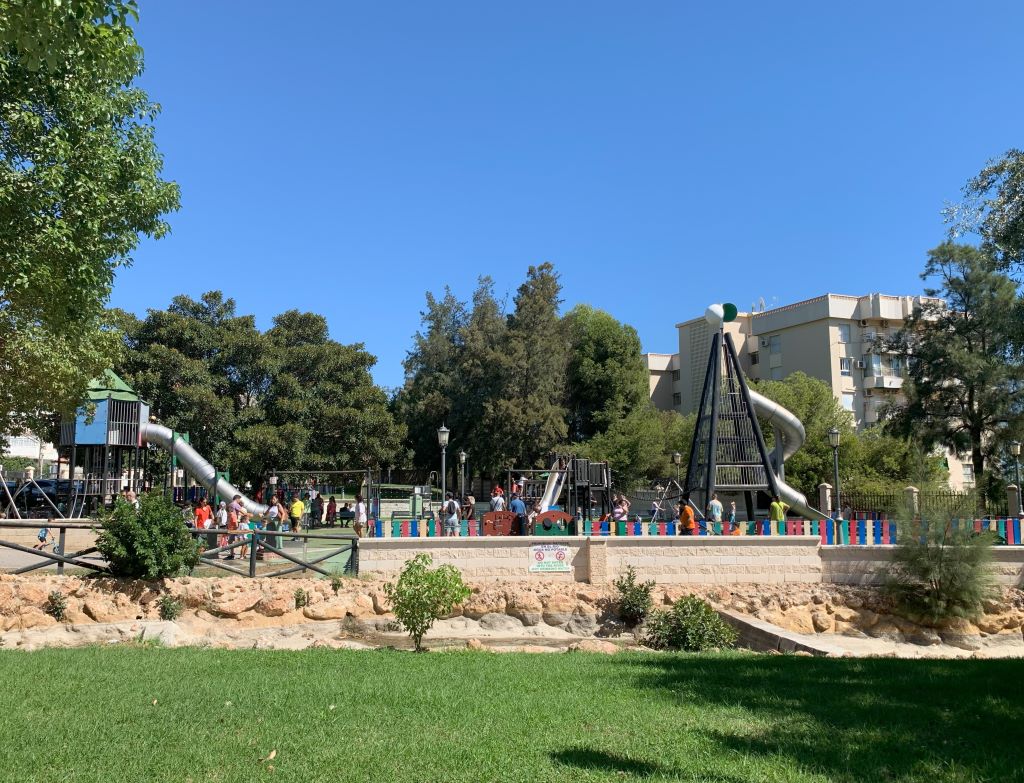
But what really stands out about La Batería is the pond in the middle of the park, with crystalline light blue waters. It used to offer the possibility of renting a small boat to sail around, then they closed, then reopened, then reclosed… we never know. You may get lucky, but don’t count much on it.
Getting to La Batería is very easy by bus – line T1, stop La Batería – or by train, stopping at the Montemar Alto station. Both leave you close to the entrance of the park. We reviewed the Parque de la Batería in deep while going around the train stations in Torremolinos, so you can check that post to know all about the park. 😉
La Casa de los Navajas
The lovely Casa de los Navajas is the eye-candy of the Bajondillo. It was built to be a residence in 1925 (it turns 100 years in 2025!) by a wealthy family of the area, the Navajas. The building belongs currently to the municipality, is open for visitation (see times here), for free, and can be rented for weddings and other celebrations.
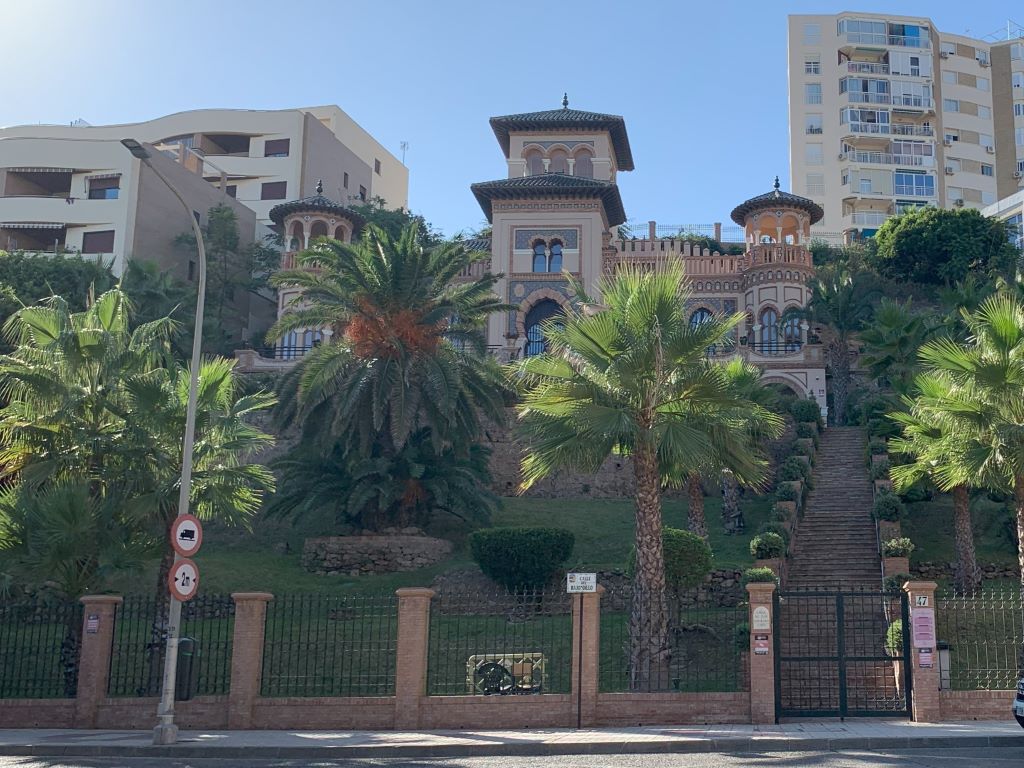
Inner La Carihuela
The Carihuela is not only a well-known beach in Torremolinos, but also the name of the neighborhood where the beach is. One of the reasons why La Carihuela stands out is that this neighborhood has a lovely walk-only part with shops and cafes. Here is a must-see place in Torremolinos that you shouldn’t skip on your next visit:
Above, Calle Carmen, with the Church of the Virgen del Carmen (from where the namesake parade departs in July) on the right side. Below, another view of the area, in Calle de San Ginés.
The promenade
The beautiful promenade of Torremolinos stretches along the whole shore of the town and connects all the beaches of Torremolinos. It is long, flat, sunny and – most importantly – full of life. Take a walk and watch the beach and the chiringuitos (seaside bars / restaurants) on one side, and Torremolinos blossoming on the other.
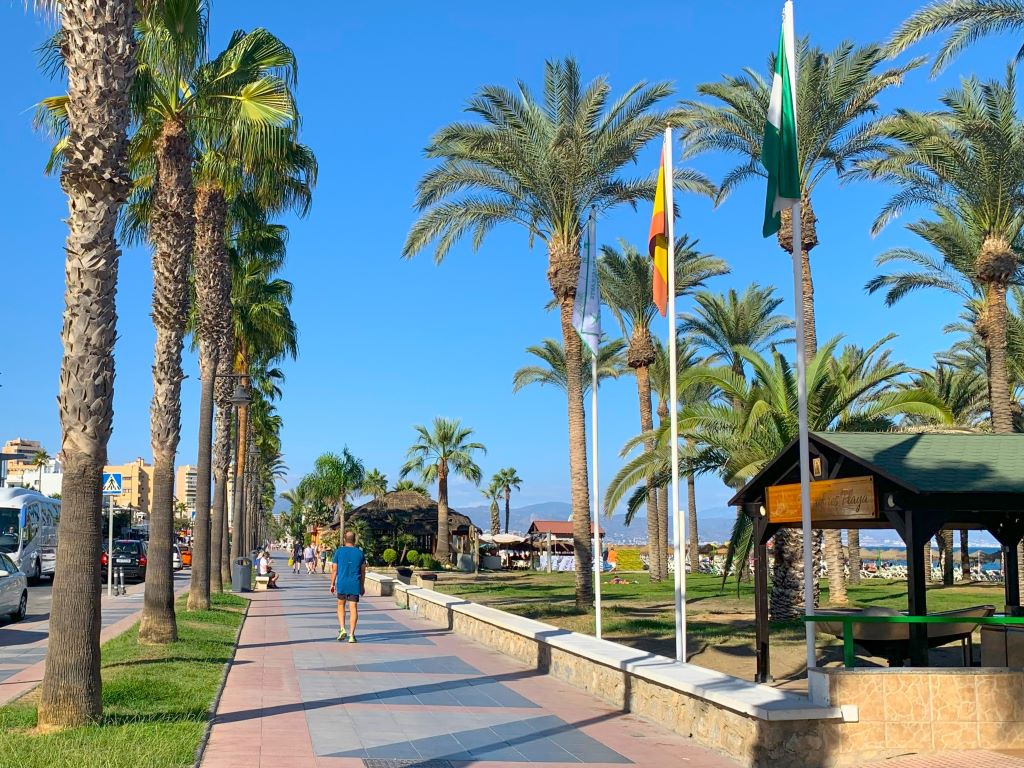
You’ll find plenty of interesting sites on your way, from the idyllic views of Los Alamos to the fun of the Plaza del Remo, in La Carihuela, where people dance on the streets (mostly during the Rockin’Race Jamboree. See below! More about it here).
Torremolinos beaches
You may find different names for the beaches in Torremolinos, partially because many of the chiringuitos name the beach where they are after themselves. Broadly (and officially!) speaking, though, Torremolinos is divided in 4 beaches – from north to south: Los Alamos, Playamar, Bajondillo and La Carihuela – as shown in the Turismo Torremolinos map in the beginning of this post.
Los Alamos

Los Alamos is the northmost beach in Torremolinos. It is a favorite among locals for a few sensible reasons: it is far from the center, which means it is less crowded even during summer; it has large expanses of sand and a few oases of trees, which provide a welcome natural shadow. It’s great for kids both because of the oases and because there are a few water creeks with very shallow waters, where small children can have a blast.
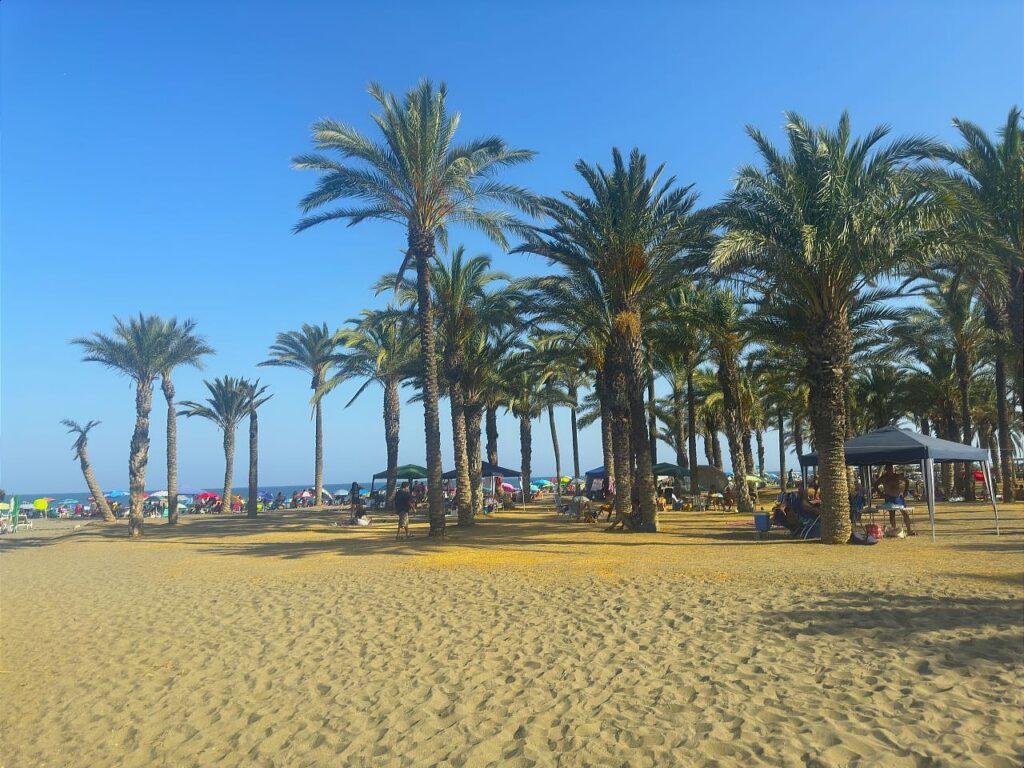
Playamar
Playamar is the second beach of Torremolinos coming from Malaga. It is more central and urban than Los Alamos and also has many oases and chiringuitos. The landscape is dominated by the tallest buildings in Torremolinos, the towers along Avenida de Benyamina.
Bajondillo
Bajondillo Beach is a very popular beach, right in the center of Torremolinos. Being the closest beach to the center, it is very popular both among passersby, that enjoy a great walk and people-watching along the promenade, and with beach goers. It is the most popular beach among the LGBTIQ + community, both due to the proximity to the Plaza de la Nogalera and because some of the chiringuitos of the area focus on the group. Check the Eden beach club in the area, a well-known and beloved place, that usually hosts special events during Pride!
Carihuela
By far the most popular beach in Torremolinos, La Carihuela starts where Bajondillo finishes, at the Castillo Santa Clara (not a real castle, but a rock formation by the shore with great views) and extends up to the Marina, already in Benalmadena. The beach is beautiful and the promenade in this area is fantastic, extending inside the Carihuela itself (as we talked about before, in the part about the inner La Carihuela).
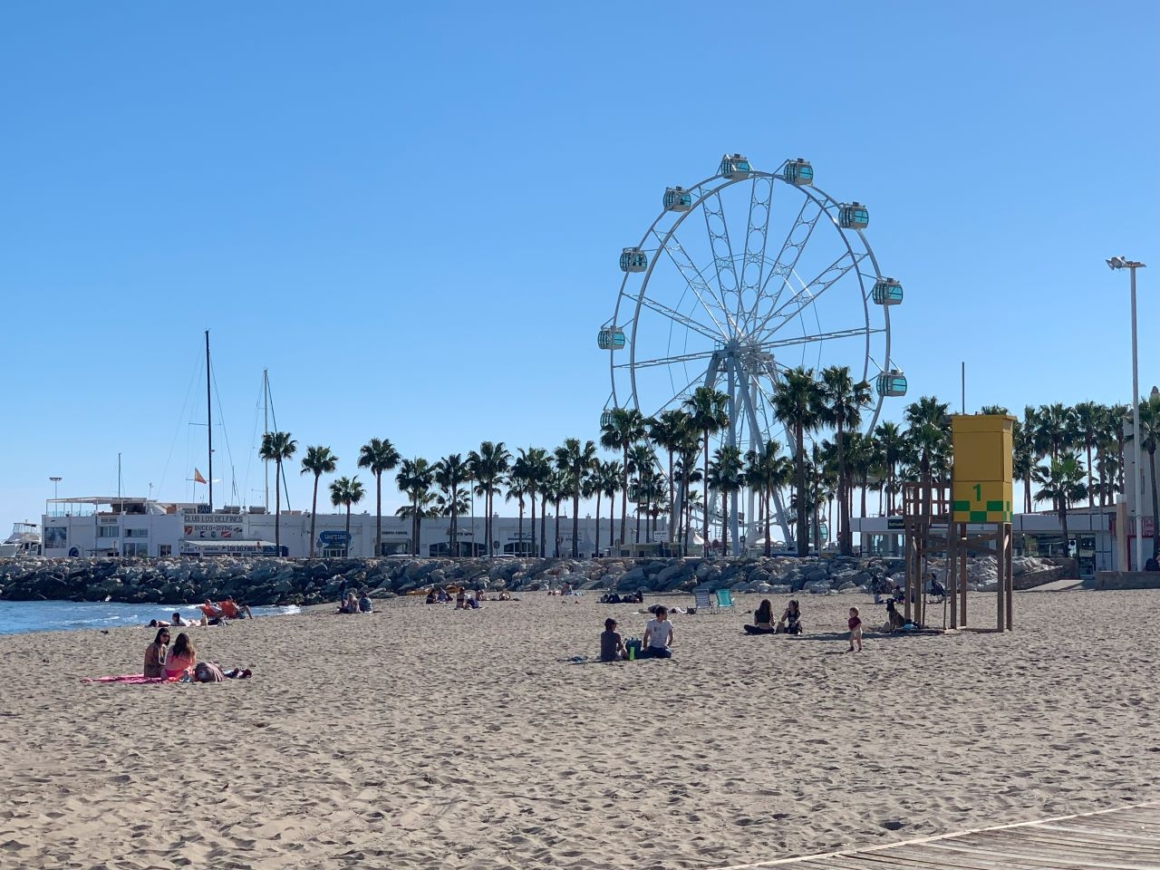
There are plenty of beautiful hotels facing La Carihuela – the uber famous Ocean House among them – and the lively Plaza del Remo, where many events are held all year long. But what I really think makes the Carihuela special (and this may be only my biased opinion) is the proximity to the Marina of Benalmadena, a mix of harbor, shopping center, playground and foodie’s paradise, with many options of fine restaurants and bars.
Where to stay in Torremolinos
Being the tourist magnet Torremolinos is, there are plenty of accommodation options. Here are a few vacation rentals and hotels that stand out for having great locations and reviews, being super charming and offering a good bang for your buck:
Andalusian Duplex in the Carihuela
Sunny view in Castillo Santa Clara
Beach house in Los Alamos
Occidental Hotel in Los Alamos
Sol Principe Hotel in the Bajondillo
Ocean House Hotel in La Carihuela
Restaurants and bars in Torremolinos
If you are in the center, head to Calle Danza Invisible, where you’ll find many good options and my favorite in the area, El Armario. This is also the part of the town where much of the nightlife happens, and the LGBTQI+ heart of Torremolinos.
Around the Bajondillo area, another mouthwatering, great option is La Favorita, with a creative and varied menu, including gluten free and vegetarian options.
In La Carihuela, try the chiringuitos on the beach and one of the many restaurants in the inner, walkable part of the neighborhood; for a more upscale experience, head to the harbor zone in Benalmadena!
Torremolinos Weather
The weather in Torremolinos is mostly sunny all year round – as the name of the region, Costa del Sol, implies. If you have the impression that the town is empty during the winter, let me clarify – it is not; it is actually vibrant, filled with people enjoying the festivals, and some brave ones on the beach!!
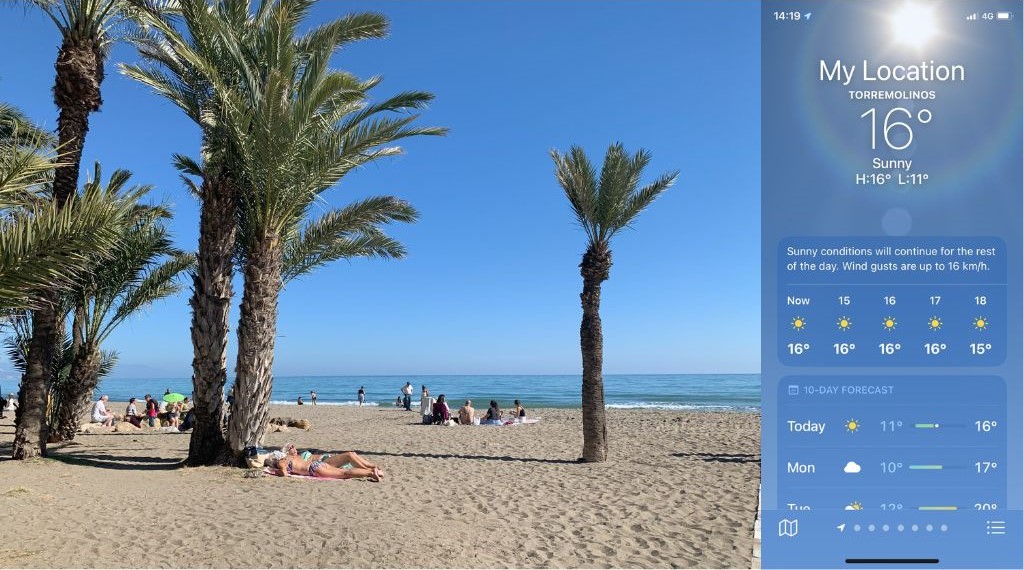
Torremolinos has sunny, warm days even in February. You can check our overview of the weather month by month or, if you know when you are coming to Torremolinos, pick your month in the list under Festivals in Torremolinos (our next topic); each post offers a deeper analysis of the weather that month plus a lot of things to do!
Festivals in Torremolinos
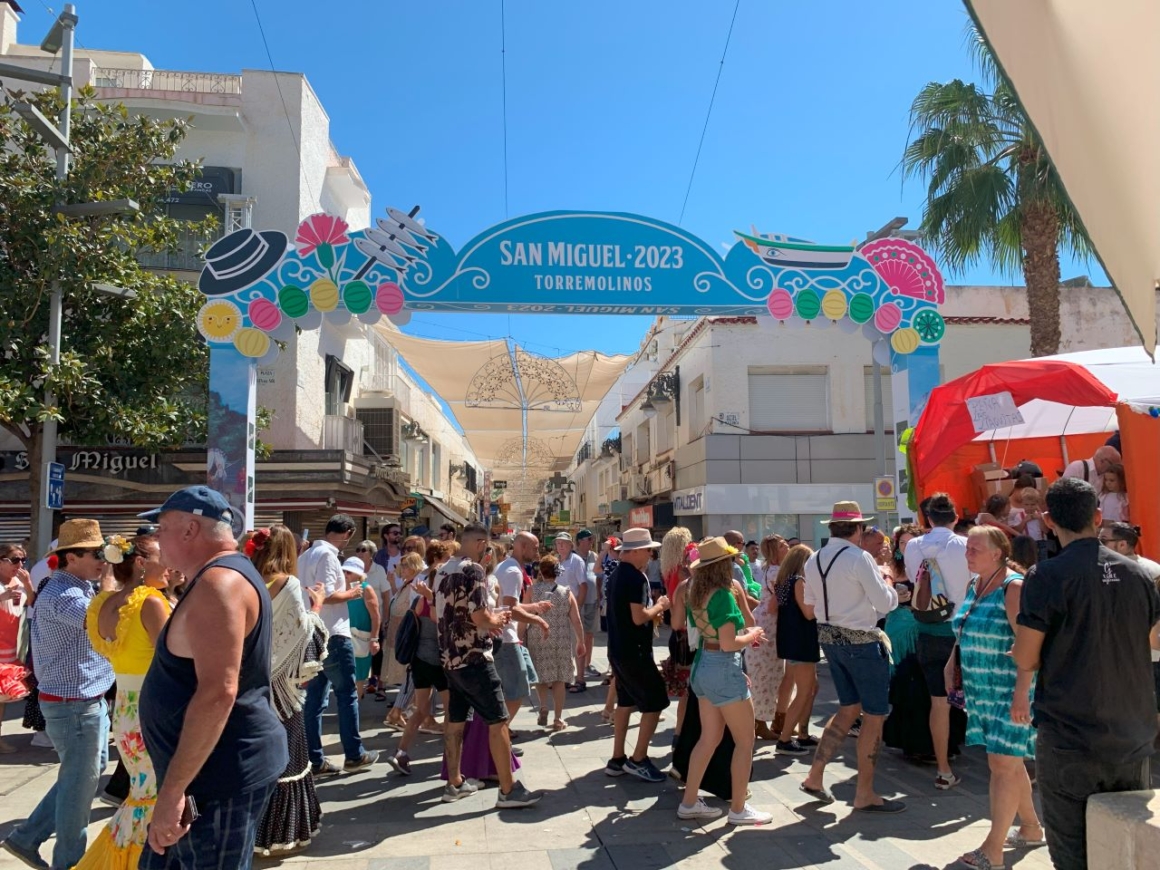
Torremolinos never stops! Here is a list of the events that happen every year in Torremolinos, by month. Clicking on each month will take you to a page with a lot of information about things that happen in the Costa del Sol throughout the year, including (but not limited to) the ones mentioned here. Clicking on the events will take you either to a page dedicated to the most recent edition of that event in Torremolinos or to a page talking about that specific celebration broadly. Enjoy!
January: The 3 kings
February: Valentine’s, Carnival and Rockin’Race Jamboree
March or April: Holy Week and Feria del Residente Extranjero
May: Cruces de Mayo
June: Pride
July: Virgen del Carmen
September: Feria de San Miguel
August: Canela Party
October: Halloween
November and December: Christmas
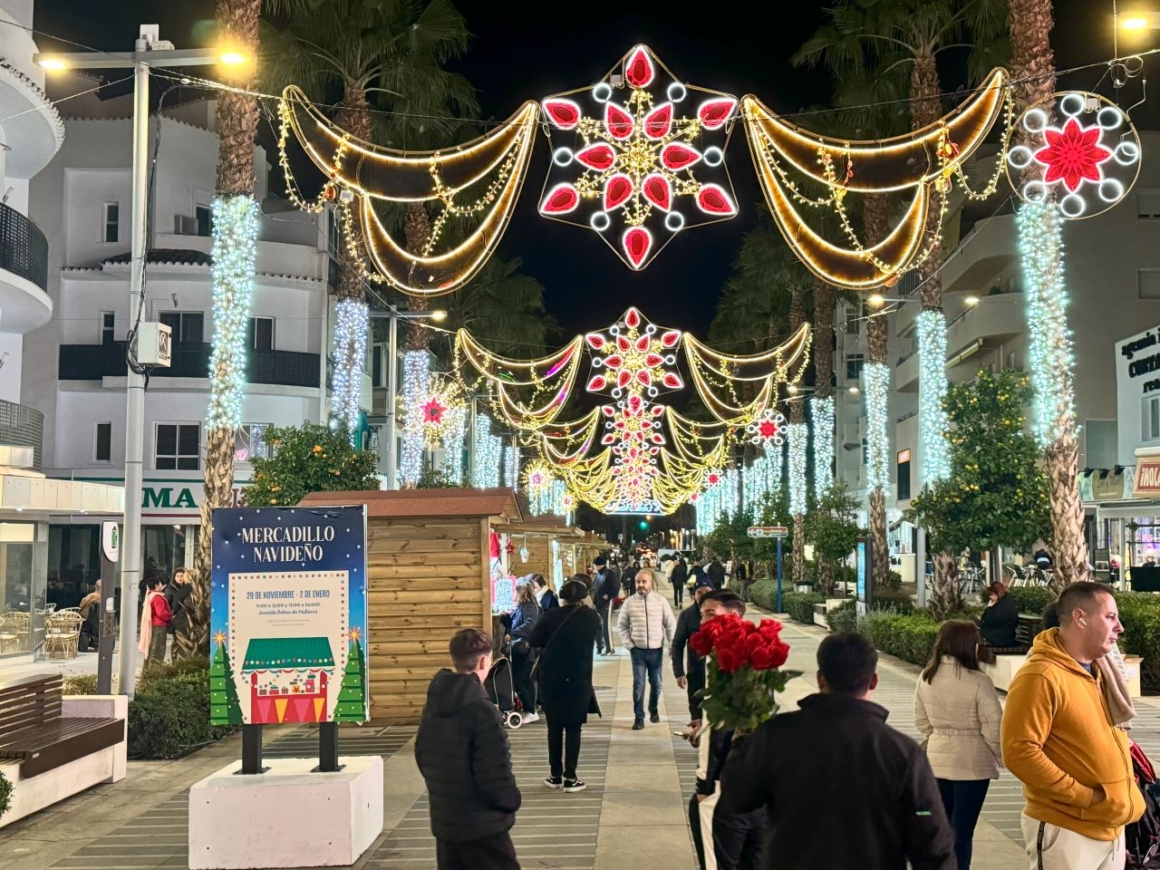
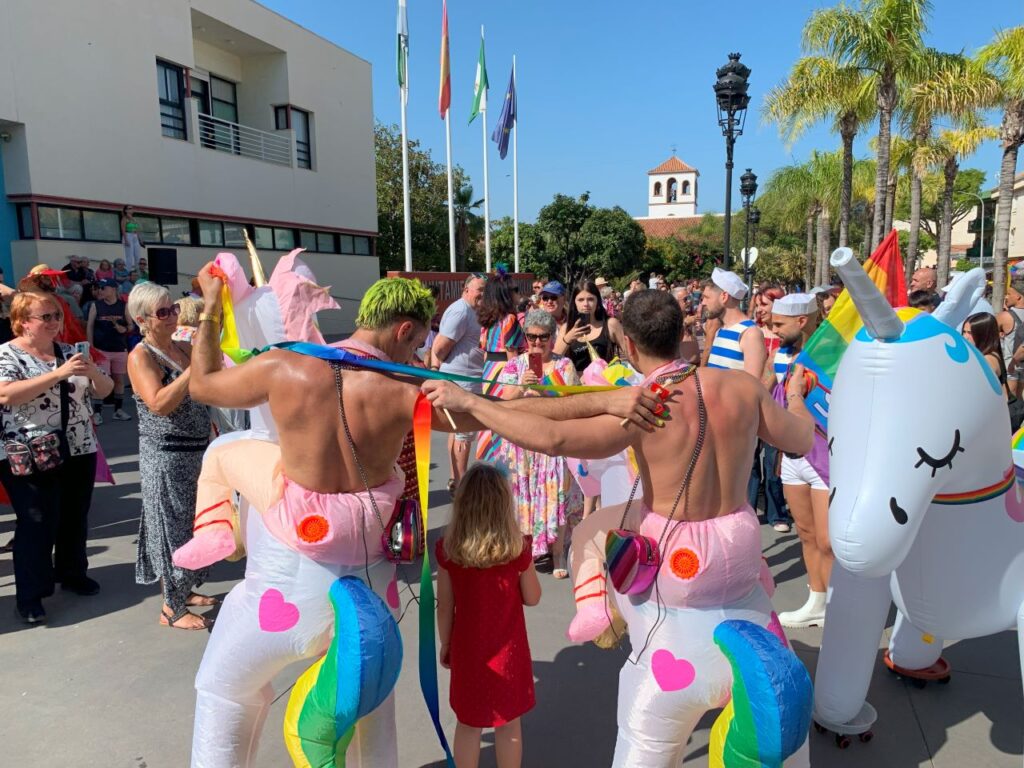
Above: a bit of the celebrations in Torremolinos: Christmas on the left and Pride on the right. Torremolinos has plenty of attractions and festivals!
Torremolinos public transportation
Torremolinos is very well served by trains and buses. There are 5 train stations in Torremolinos, connecting much of the upper (closer to the mountains), more residential part of the town. You can get the train both to visit other parts of Torremolinos or to visit nearby towns, as well as to go to Malaga and to the airport. Until June 2025 you can actually use the train for free with the abono recurrente – something which I talked a lot about here, as well as ticket prices without the abono and a lot more information about the train.
On the bus side, Torremolinos counts on 2 internal lines, aptly named T-1 and T-2. T-1 covers the south (Carihuela) and the center of the city; T-2 covers the center and the north (Los Alamos). Both lines overlap at three bus stops in the center. The full price ticket for each of the lines costs € 1,30 as of this writing, but it is possible to get discount cards – no matter if you are a resident or a visitor. There are two main possible cards here:
– with the green bus card, this price drops to € 0,99 (from January 1, 2025);
– with the red card, it drops to €0,59.
The second (red) card gives more discounts, sure, but this card is valid only for lines T-1 and T-2, while the green is valid for these and all other lines that cross Torremolinos and connects to other towns (see them below!). Nothing stops you from getting both and using the one that is most convenient on each occasion. The red one costs € 1,80, and the green one, even less.
Day trips from Torremolinos
There’s plenty to do in Torremolinos, but it doesn’t mean you need to explore only one town while in the Costa del Sol; it is not cheating, you can like them all!!
From Torremolinos to Malaga
Depending on where in Malaga you are going, you should choose between getting a bus or a train. To put it simply, here are the places you can reach by train:
– Plaza Mayor, a beautiful and pleasant open air shopping center;
– The Airport of Málaga;
– Málaga Maria Zambrano station, that is the transportation hub of Malaga, from where you can get a long distance train to Sevilla, Madrid, etc
– Málaga Centro Alameda, which takes you very close to the center of Malaga, the Alcazaba and the Muelle Uno.
To get to Malaga from Torremolinos by train, take the train towards Málaga Centro Alameda. To know more about each of the stops – with a lot of pictures – check our post about the train stations in Malaga. 🙂
To other places within Malaga, it may be better to get a bus. Check the available lines below – the links show times and stops on a map:
M-110 Málaga – Torremolinos – Benalmádena Costa
M-112 Málaga – Mijas
M-116 Benalmádena – Torremolinos – Teatinos (Universidad)
M-123 Churriana – Torremolinos – Benalmádena Costa
Check also the bus lines inside Malaga. Depending on where you are going, you may need to take a local bus or use the metro.
From Torremolinos to Benalmadena
Easy peasy. Take the train towards Fuengirola and stop on Benalmadena-Arroyo de la Miel station, to see the center of Benalmadena – enjoy the cable car, visit the market in Benalmadena (on Fridays), walk around the shops and restaurants. From there, you can take a bus (103 line) towards Benalmadena Pueblo, which is super super cute, or towards the beach. You can also stop at Torremuelle, but this is a more residential side of Benalmadena. Check both on train stations in Benalmadena.
By bus, you can get the same line as to Malaga – in the opposite direction – plus these:
M-124 Carola – Torremolinos
M-125 Torremolinos – Patronato
M-126 Benalmádena – Torremolinos
From Torremolinos to Fuengirola
Did you say train? Yes! It’s the best and fastest way. You can stop to visit Los Boliches, a seaside fishing village part of Fuengirola, full of charm, or go straight to the center of the action in the last station, Fuengirola. You can see all 4 train stations of Fuengirola on our post! Tip: Fuengirola train station is also sort of a hubby; there is a bus stop nearby that connects to Mijas, Marbella and Estepona.
If you do prefer the bus, get line M-120 Torremolinos – Fuengirola.
Conclusion
It already feels like a trip! I hope this Torremolinos guide helps you get to know the town and plan better vacations; you can pick the right places to be and the right months to come based on the events you plan to visit; and you can go see everything else in between events. Enjoy the weather, the promenade and the beaches, as well as the botanical garden, the horse show, the crocodiles… and next time someone says there isn’t much going on in Torremolinos, please send them the link to this page! If I find more – which I don’t doubt – I’ll come back to add; please let me know your findings, too, in the comments. 😉 Best travels!
Have you ever wondered if supermarkets in Spain are a bit different from those in your country? Odds are they are!! There are a few things I find unique to supermarkets in Spain that I think you will find interesting to know too. These unique traits are closely related to Spanish produce, traditions and habits; and knowing the way people shop and what they buy is a way of knowing a culture from inside. So, let’s spy (I mean, observe) the unique traits of a Spanish supermarket!
People bring their own shopping bag / cart
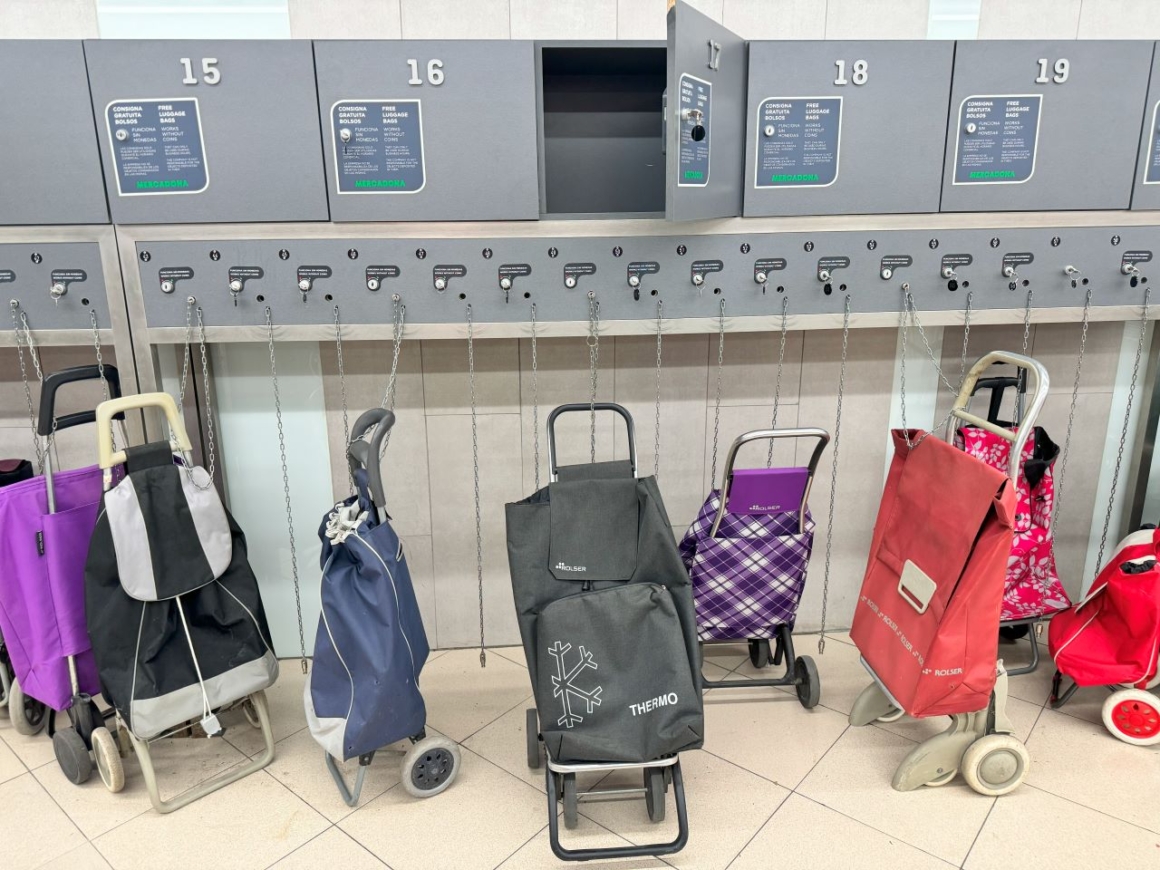
Most people bring their shopping bags in carts, like the ones shown above, and lock them in the entrance of the supermarket, in an area designated just for that. When they finish shopping, they pack the goods in those bags, just like people would do with plastic or paper bags in other countries. Ironically, these rolling bags are rarely sold in supermarkets (though I believe I’ve seen some in Carrefour).
It is possible to use plastic bags too, or to bring one’s own shopping bags. The plastic bags are large and resistant, and cost about 0,20 euro per unit in the market counter. People usually buy plastic bags only if they are buying a very small amount of goods or if going to the market was a last-minute decision; for the most part, Spaniards go to the market with their own rolling shopping bags.
We are expected to put on gloves to touch the fruit
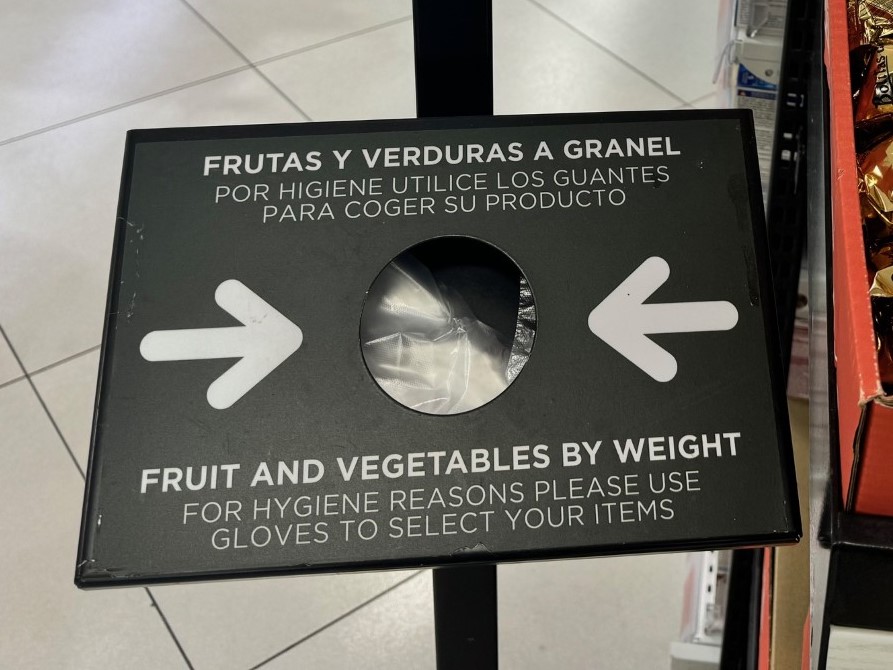
One may think this is a Covid-times precaution that lingered on but, no, it is not. In Spain, people were already expected to put on plastic gloves provided by the supermarket before touching the vegetables years before. Not everybody does, though; personally, I think it is a waste of plastic, especially considering the whole process of food distribution, where each fruit has probably been through many hands and machines… nevertheless, that is a thing.
Wine is super cheap – but good!
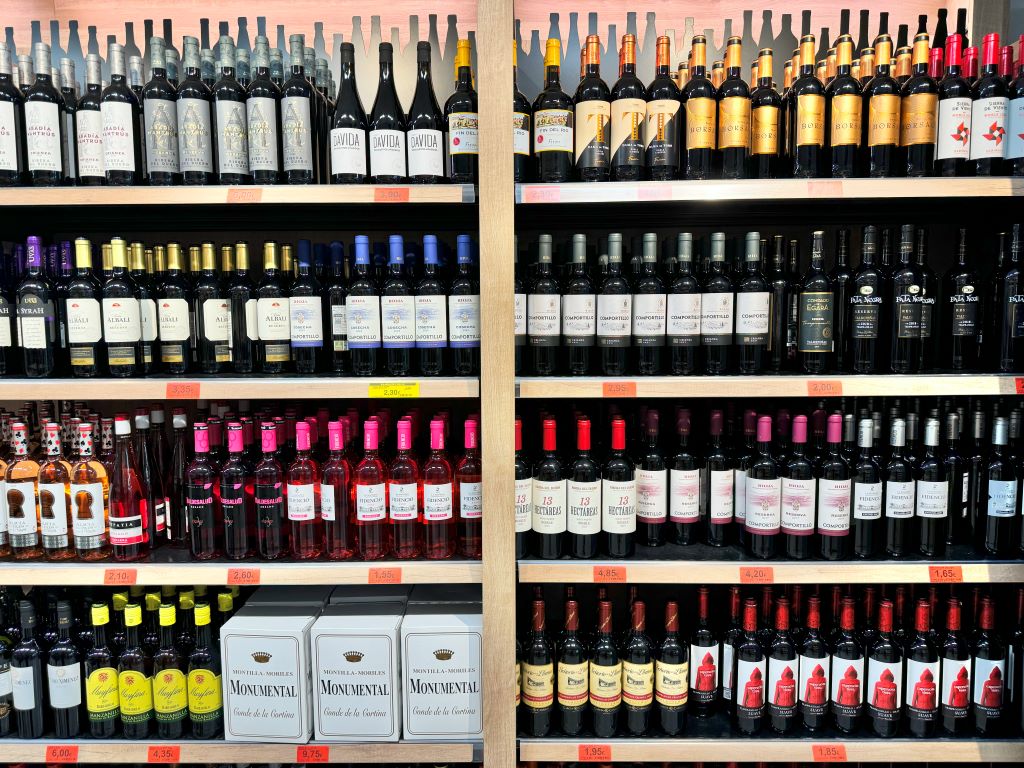
And plentiful! The wines in this picture range from € 1,60 to € 6,00 only. Quite affordable. There is usually a long section of good and pocket-friendly wine on the market. I guess this may be one of the reasons why Spaniards live long – wine is, after all, part of the Mediterranean diet. Be healthy, dear reader, grab a few!
Cheese comes from… goats, sheep, and perhaps, cows.
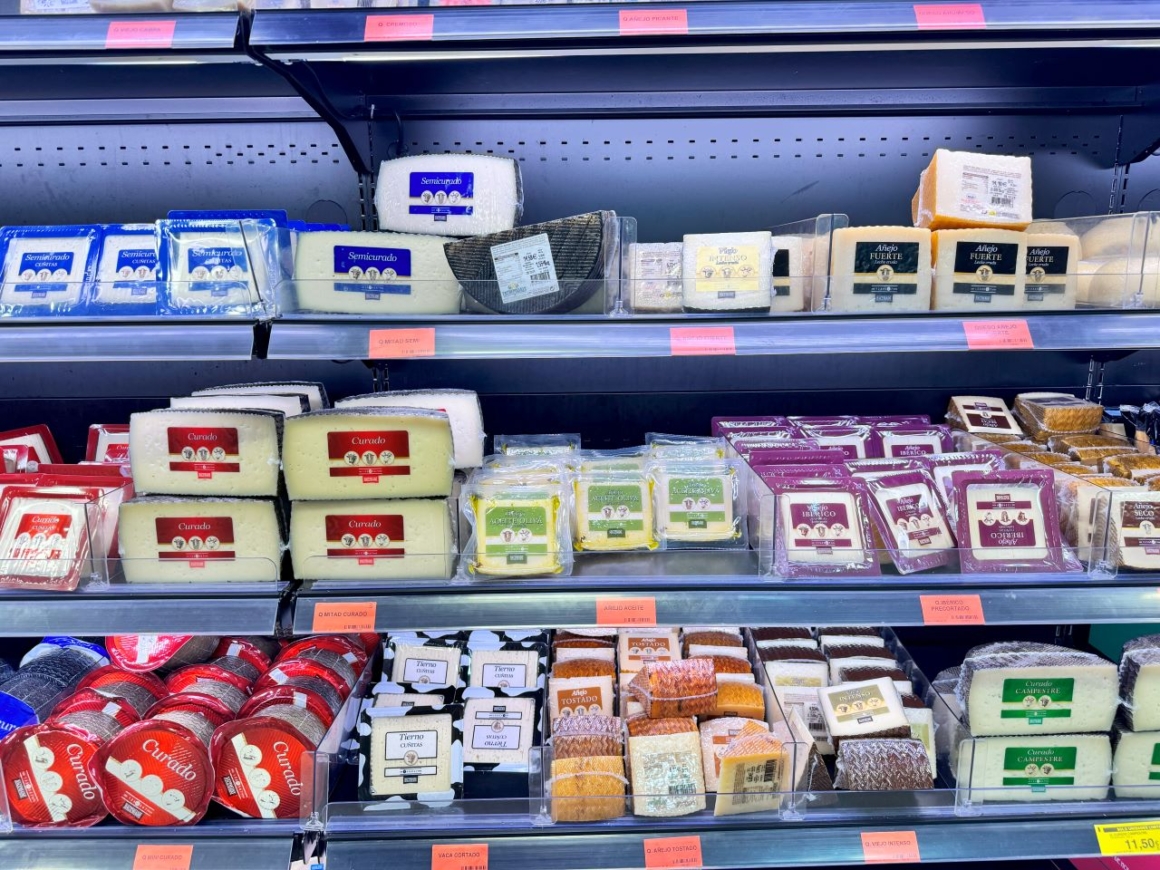
Cheese in Spain is often made from a mix of goat, sheep and perhaps cow milk. The ones on the picture above show what animal milk entered on their composition, but that is not always the case; if you want to be specific, you have to pay attention to the ingredients list.
Cheddar, Emmental, Gouda, Brie, Grana Padano and other known cheeses are also available. As a matter of fact, the variety of cheese available in the supermarket is quite large, and it may take a while to figure out which are your favorite local cheeses. Good thing there is plenty of wine to pair with! 🙂
Seasonal foods

Sure thing most supermarkets worldwide offer a selection of seasonal foods, but the selection itself is quite specific to each place. In Spain, during Christmas you will find a lot of Turrón (shown above), as well as chocolate (advent calendar, but not only), and panettones (yummy!); right after New Year, the shops are full of Roscón de Reyes; during easter, the traditional chocolate eggs and bunnies abound; on Halloween there are candies in all sort of scary/funny shapes. Food is, after all, an important part of most celebrations – and the supermarkets provide it.
Typical foods

Well, well, when in Spain… you are sure to at least try the local, typical foods, right? And then you fall in love with them and come back for more. Gazpacho was a staple in my home for our first year in Spain, so, besides preparing it at home, we also bought it often from the supermarket (we used to get the one in the red box, above). Now we have calmed down, but during summer, it is a great option for a simple, fast, good and refreshing meal. Same for salmorejo, which, tastewise, I can’t differentiate very well from gazpacho.

And the tortilla de patatas, potato pie! With or without onion, as you prefer. Pretty much a national symbol of Spain, readily available in the supermarket, because it is quite a popular dish. Have a slice after a bowl of salmorejo, followed by a bit of olives while drinking wine – fancy, local meal for two or more for less than € 10,00. It is well worth it eating local foods and knowing the supermarkets in Spain!!
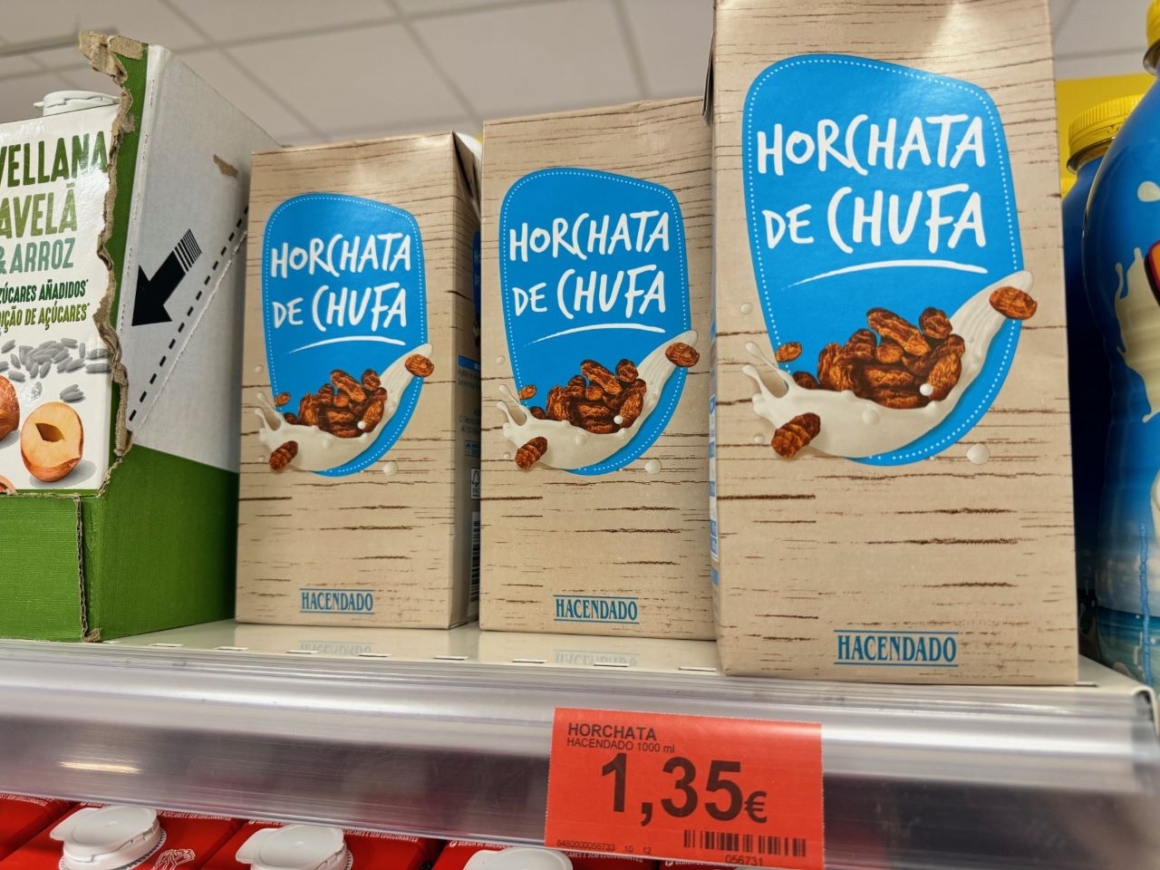
You may also want to try an Horchata de Chufa, which is kind of like a vegetable milk. It is quite healthy, full of minerals and is said to help lower cholesterol and hypertension. It is sweet and consumed more in the summer, as it is served very cold. You can usually find it in ice cream shops (or in the supermarkets, of course), but not so much in restaurants. It is a drinkable dessert, and we’ve talked a bit about it on the Spanish breakfasts and desserts post. 😉
Jamón

Now, if you want to add Jamón (dry, cured ham) to the meal, the sky is the limit of how much you gonna spend. True that there are many different kinds and prices, as well as the possibility of buying a small tray of Jamón instead of a full leg – both shown above. As a matter of fact, in Carrefour you can even buy a bag to carry a full Jamón leg; it looks a bit like a violin case, just made with fabric and closed with a zipper. A sort of Jamón backpack, so to speak.
Dry meat in all its shapes and variations are very popular in Spain, as well as chorizos, and sausages. Pork seems to be the most popular kind of meat around.
It’s hard to find tomato sauce

I didn’t expect this one, but I have a hard time finding simple tomato sauce for pasta. The market seems to be dominated by tomate frito (fried tomato sauce), which is a kind of tomato sauce that is oily. I have only two options of traditional tomato sauce – a small jar in Mercadona or an expensive one in Carrefour – from what I’ve found so far; all the rest is tomate frito in different shapes, brands or packages.
DIY fresh orange juice
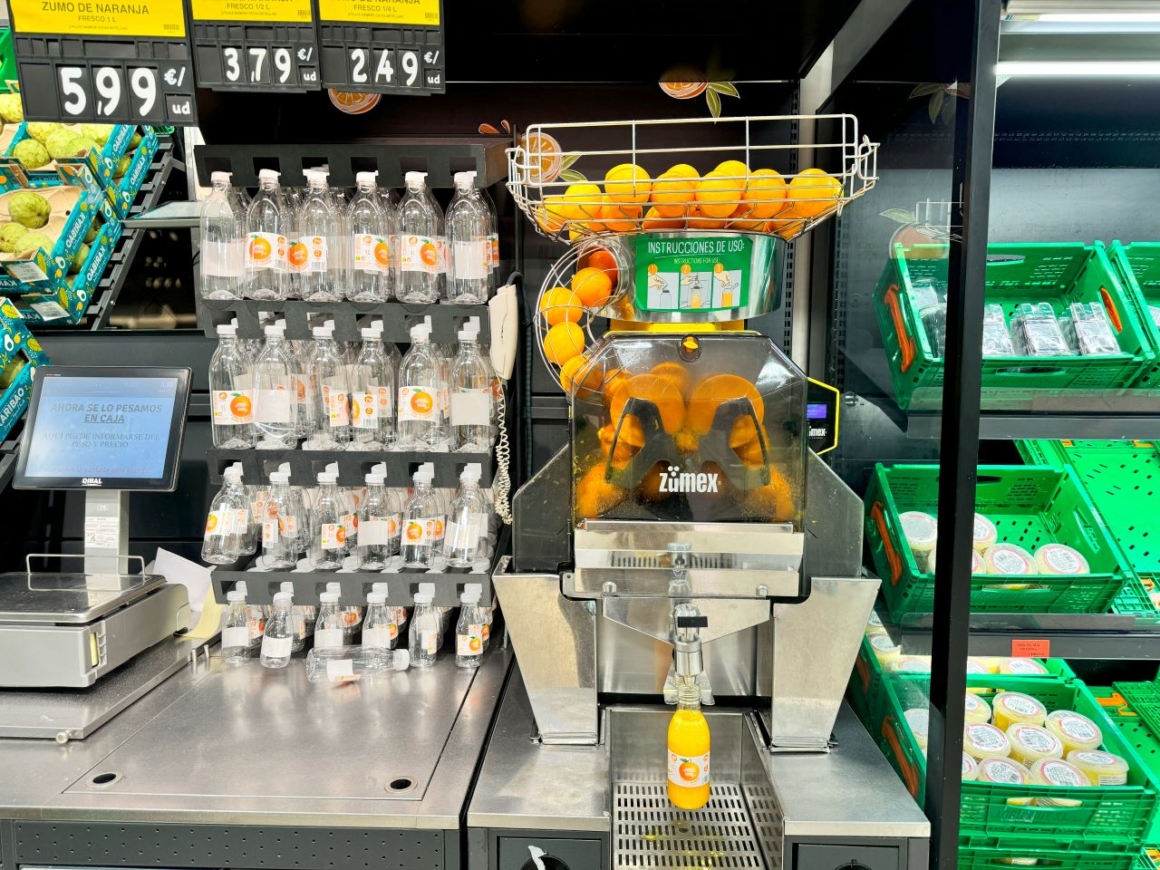
This is a good reason to go to Mercadona: they have these machines that can squeeze oranges automatically – my dream of consumption. Just choose the size of your bottle and have freshly squeezed orange juice on the go. So good! Of course, you can only drink it after finishing and paying, but you can get it right before going to the cashier and have a perfect fresh juice while going home – this must be one of the best things in Spain. Not to mention that Spain is famous for its citrus fruits, which just makes it perfect. By the way, oranges are at their best on January!
Olive oil sizes 🙂
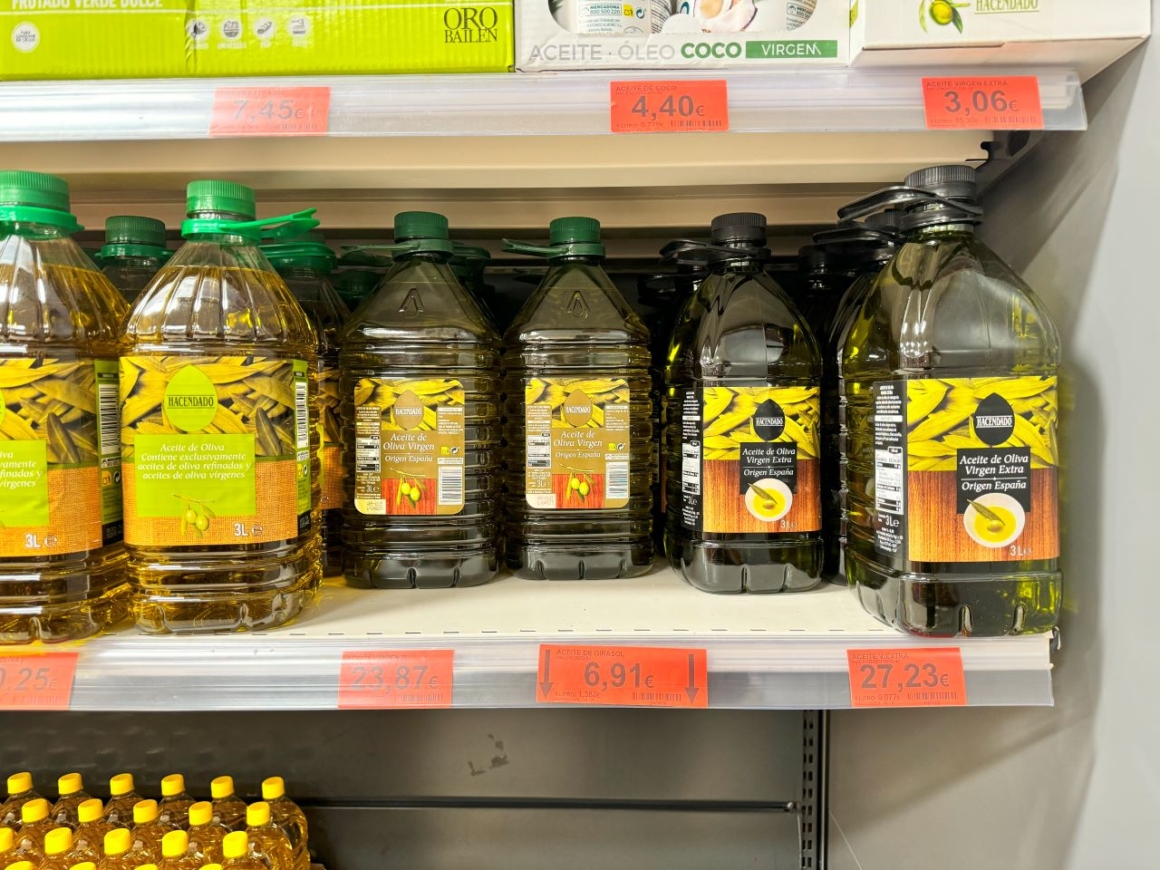
I’d call it appropriate, the 3 liters olive oil bottles shown in the picture. Personally, I prefer the ones that fit 5 liters – just because knowing one of those is (always) in my kitchen brings me a smile. But 3L is good too. Sure, they do have smaller bottles as well, as sometimes people are traveling and because the smaller ones are better to have on the table.
I am a olive oil fanatic and the olive oil would be on a list of my top 10 favorite things about Spain; if you are too, check the post about the Casa de la Cultura, which I visited for the first time precisely when they were having an exposition about the olive oil production in the ancient Roman villas of Benalmadena; yummy!
Local tip: I do like the olive oil in the picture, but my favorite extra virgin olive oils in Spain come from small distributors – find them in small groceries around where you are staying; grab a bread there too and have a traditional Andalucian breakfast at your home / vacation rental. You’ll thank me later.
Olives, olives, olives
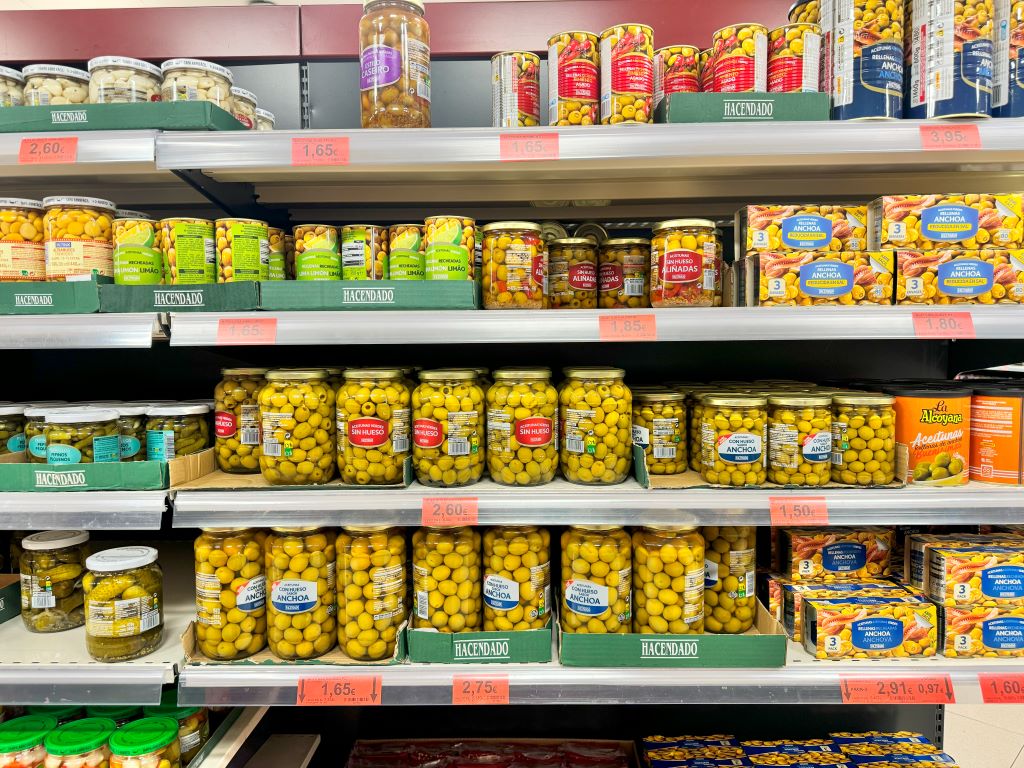
Ah, the olives. We find them in every possible way here 🙂 the ones shown in the picture are with or without pits; filled with anchovies, bell pepper or even lemon; and, of course, “dressed”. Dressed olives (aceitunas aliñadas) are olives combined with sour oranges, salt, water, red peppers, fennel, thyme, oregano and maybe more dressings. The sizes of olive jars are a bit like those of olive oils – from small to very large – so there is no way to go wrong with olives; when in doubt, get a larger one.
Lupin beans
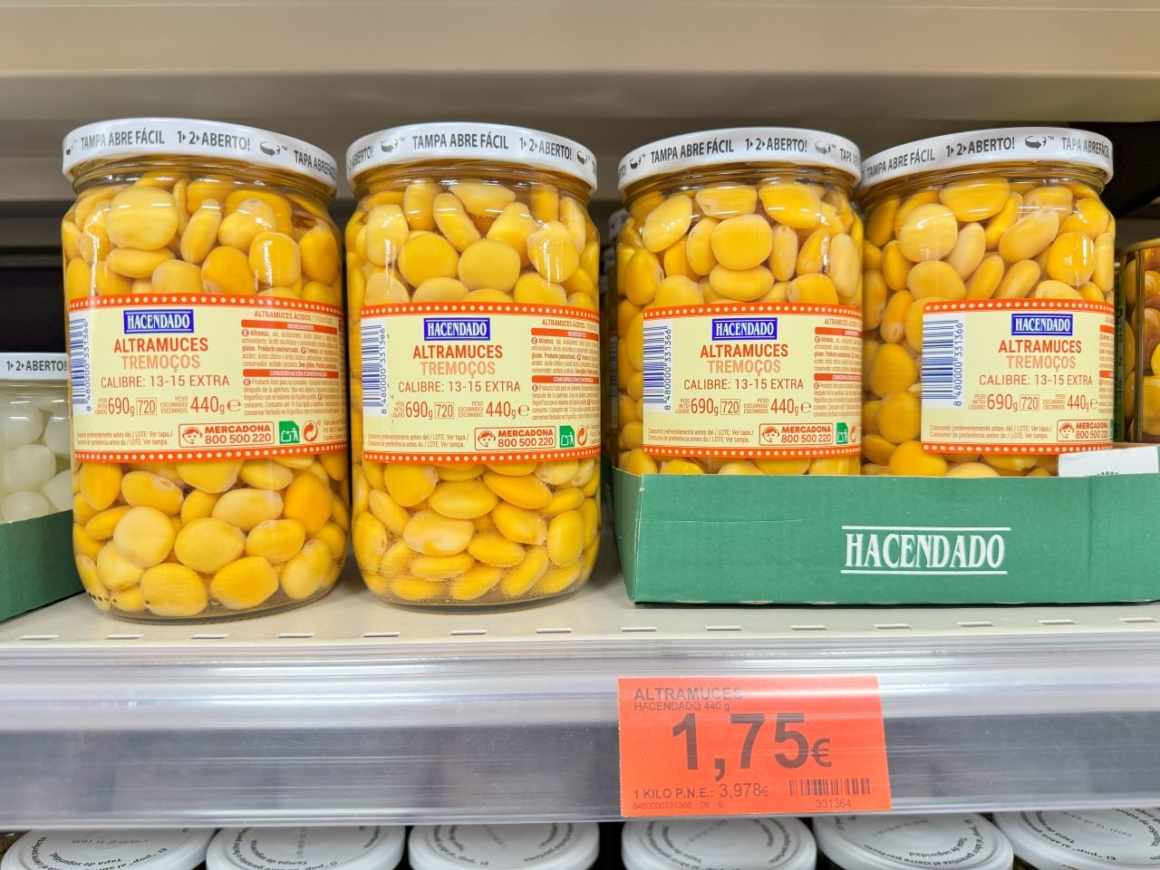
Lupin beans (altramuces) are a well-kept Iberian secret, and that’s why I put it last – only those that read all the way deserve to know… This precious delicacy is rarely appreciated as it should be. It is wonderful, a simple, salty, very healthy snack – full of proteins; vegetarians, take notice! – that should be on every plate around the globe but is consumed mostly on the Iberian Peninsula, and even more in Portugal than in Spain. Luckily, it is always available in the supermarkets, and finding it was one of my greatest joys when I went to a market in Spain for the first time. In the USA, I could get it only on Amazon.
If you are new to lupin beans, let me tell you how to eat them: they have a peel, that looks a bit like plastic (but it is not). You don’t eat the peel; you remove it – for each bean – in less than a second, just by squeezing the bean with your fingers in opposite directions; a bit like finger snapping. You then eat the yellow bean. It has a soft, light, salty deliciousness taste and slightly firm texture. It is so good.
Supermarkets are a good place to park
It is a bit of a Goldilocks situation: markets that are small may not have a parking garage; those that are too big will be far away from everything; but the middle-sized supermarkets are just right – they both have garage and are close to interesting places. Given how hard it is to find parking in the Costa del Sol, it is a good thing to keep in mind that you can park at supermarket garages. They will require that you buy something inside – around 20 euros of goods – and, other than that, the parking is free of charge. So, you both visit a nice place and do the shopping.
This works only for a few hours of parking, not for overnight parking, or your car may be towed. Remember to buy only at the end, after you visit the place you intend to go: when paying for your goods in the supermarket, tell the cashier that you have a car in the garage, and she will validate your ticket; after that, you have about 20 minutes to leave the garage without incurring a new parking / purchase requirement.
Main Supermarket chains in Spain
And since we are talking about supermarkets, let me give you a few links so you can check them. 😉 The main chains present in Spain are Mercadona (that owns the brand Hacendado, that appears in a lot of the pictures of this post), Carrefour, Aldi and Lidl – judging by the ones I see most often. Día, Supercor and Maskom are also large, and this last one I believe exists only in Malaga province; they take pride in offering a large selection of products made in Malaga, so it is very local and even more unique.
Conclusion
Grab your rolling bag and visit a market nearby. There, grab some wine, gazpacho, a tortilla, cheese, olives and olive oil, bread, jamon and a jar of lupin beans; last but not least, a bottle of freshly squeezed orange juice, that you want to drink before everything else. That is the recipe of happiness. You can do it regardless of if you live in Spain or if you are just visiting; bring a bit of Spain inside your place and enjoy it after a day of work or sightseeing. Cheers to Spain!
2024/25 New Year’s Restaurants and Parties in the Costa del Sol – It is a bit last minute, but here is a list of places that are planning something special for the celebration of the New Year. We have a mix of dinner and parties going on in different areas of the costa on December 31. Don’t forget to check exactly when they will be open while booking. The good thing is that you may end up celebrating more than once – from a dinner straight into a party! 😉
Related Posts:
Christmas in Benalmadena 2024
Christmas in Torremolinos 2024
Christmas in Fuengirola 2024
Christmas in Mijas 2024
Christmas in Marbella 2024
Christmas in San Pedro Alcantara 2024
What to expect of Christmas in the Costa del Sol
December in the Costa del Sol
Torremolinos

Indian Ocean
They have Indian, Italian and kid’s menus.
📍 Paseo de la Carihuela, 95
☎️ 614 345 091
💻 Indian Ocean

Billie’s Pianobar
Food and party with live music!
⌛ December 31 at 06:00 pm
📍 Calle Casablanca 22
☎️ 641 220 131
💻 Billie’s Pianobar
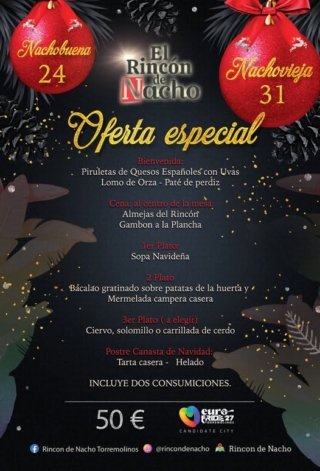
El Rincón de Nacho
Several menu options in a cozy ambience.
⌛ December 31
📍 Pasaje Pizarro, 5
☎️ 698 787 784
💻 Rincon de Nacho
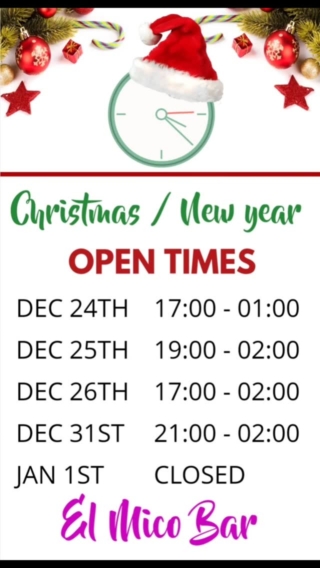
El Mico Bar
A local favorite!
⌛ December 31 from 9 pm to 2 am
📍 Calle Jaén 2 Local 13
☎️ No phone, but: elmicobar@hotmail.com
💻 El Mico Bar
Benalmadena

The Belfry
The place for sports fans!
⌛ December 31 from 6 pm
January 01 from 3:30 pm
📍 Avenida Las Palmeras, 2
☎️ 711 007 665
💻 The Belfry
Fuengirola

Dominique’s Restaurant
New Year’s dinner with live music.
⌛ December 31, from 8:00 pm to 1:00 am
📍 Pso. maritimo Rey de España 83
☎️ 952 199 309 / 616 765 447
💻 Restaurante Dominique

Luna Bar
Cozy and beachfront.
⌛ December 31
📍 Paseo Maritimo 98, Los Boliches
☎️ 615 371 036
💻 Luna Bar
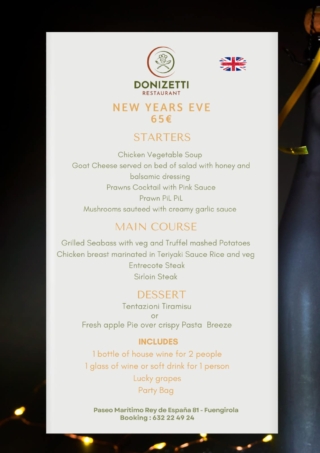
Donizetti
Italian / Spanish New Year
⌛ December 31
📍 Paseo Marítimo Rey de España 81
☎️ 632 22 49 24
💻 Donizetti
Mijas
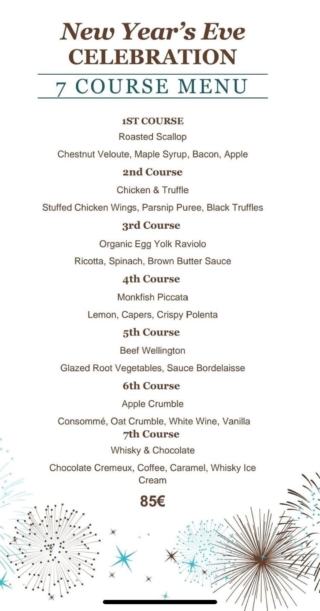
Luigi’s Restaurant
Eat for a year with 7 courses!
⌛ December 31
📍 C. de Los Adarves, 91, Calahonda
☎️ 620 821 244
💻 Luigi’s Restaurant

Unico Beach Club
Party and dinner in La Cala!
⌛ December 31
📍 Calle Reina Fabiola nº 13
☎️ 951 001 125
💻 Unico
Marbella

Portofino
Stelvi’s dinner, party and fireworks.
⌛ December 31
📍 Urbanización Puerto de Cabopino kilometro 195
☎️ 650 517 338
💻 Portofino
Estepona
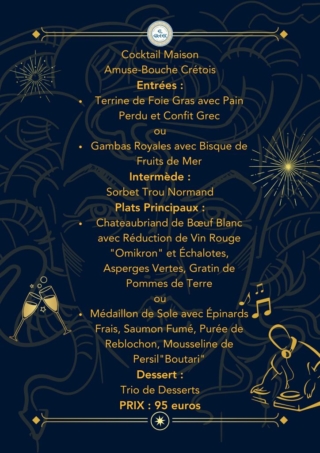
El Greek del Puerto
A French and Greek New Year in Spain!
⌛ December 31 from 7:00 pm
📍 Estepona Port, Av. virgen del puerto
☎️ 626 338 343
💻 El Greek del Puerto
Conclusion
To know a lot more about New Year’s related activities in the Costa del Sol, check our post on December in the Costa del Sol. And the posts about Christmas in each town; after all, it is still Christmas in the Costa del Sol until January 6th!
If you have a restaurant or pub that is planning something special this Christmas and would like to appear in this post, let me know. Send me an email with details and I’ll add here. 😉
I wish you a very Happy New Year and great meals and parties as well! May the New Year bring you lots of Champagne, cavas, grapes, sun, healthy, amazing views, and of course, a lot of time enjoying the Costa del Sol!
La Cala de Mijas is special. It is an adorable part of the town of Mijas, right by the coast, but different from most of the Costa del Sol, because it really has managed to preserve the fishing village feel of its origins; it’s calm and reserved, but at the same time, has plenty of restaurants and beautiful beaches and promenade. Come see this interesting part of the Costa del Sol!
Getting there
To go to La Cala de Mijas, I took the train to Fuengirola and then the bus M-220 to the bus stop called… La Cala de Mijas. It was an easy and pleasant journey, especially the bus part, by the sea. Check on the map below the best way to get there from where you are. 😉
✨ Mama Málaga recommends ✨
✈️ Looking for plane tickets? Compare Kayak and Expedia
🏠 Looking for a vacation rental? VRBO
🛌 Looking for a hotel? Tripadvisor
🎟️ Looking for what to do? Check Get Your Guide, Tiqets, Civitatis and Fever
🚗 Planning to rent a car? DiscoverCars
💶 Planning to transfer money? Wise
📖 Planning to learn Spanish? Italki
🏖️ Planning to go to the beach? Sunglasses, sunscreen and a hat!
Click on the linked icons to know why. 😉
What La Cala de Mijas is famous for
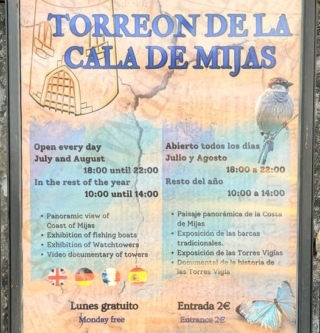
The most famous monument of La Cala de Mijas is the Torreón de la Cala, shown on the top of this post. It is one of the many watchtowers spread around the Costa del Sol, used in the past as part of the defense system. This tower is right by La Cala Beach and is the symbol of this part of Mijas. It is possible to visit the tower all year long.
The Torreon de La Cala is very close to the beach, by a large square, the promenade and the beach.
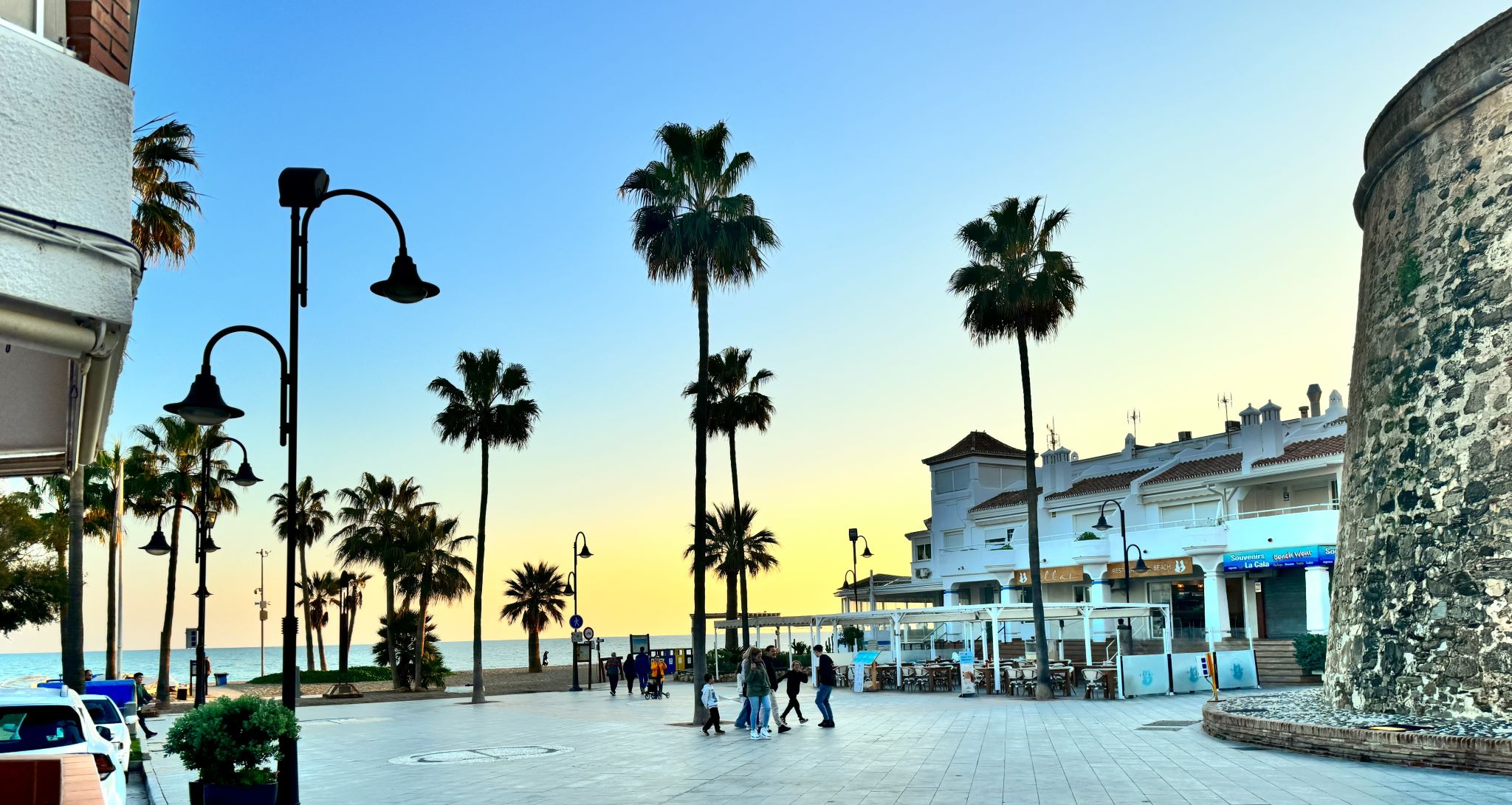
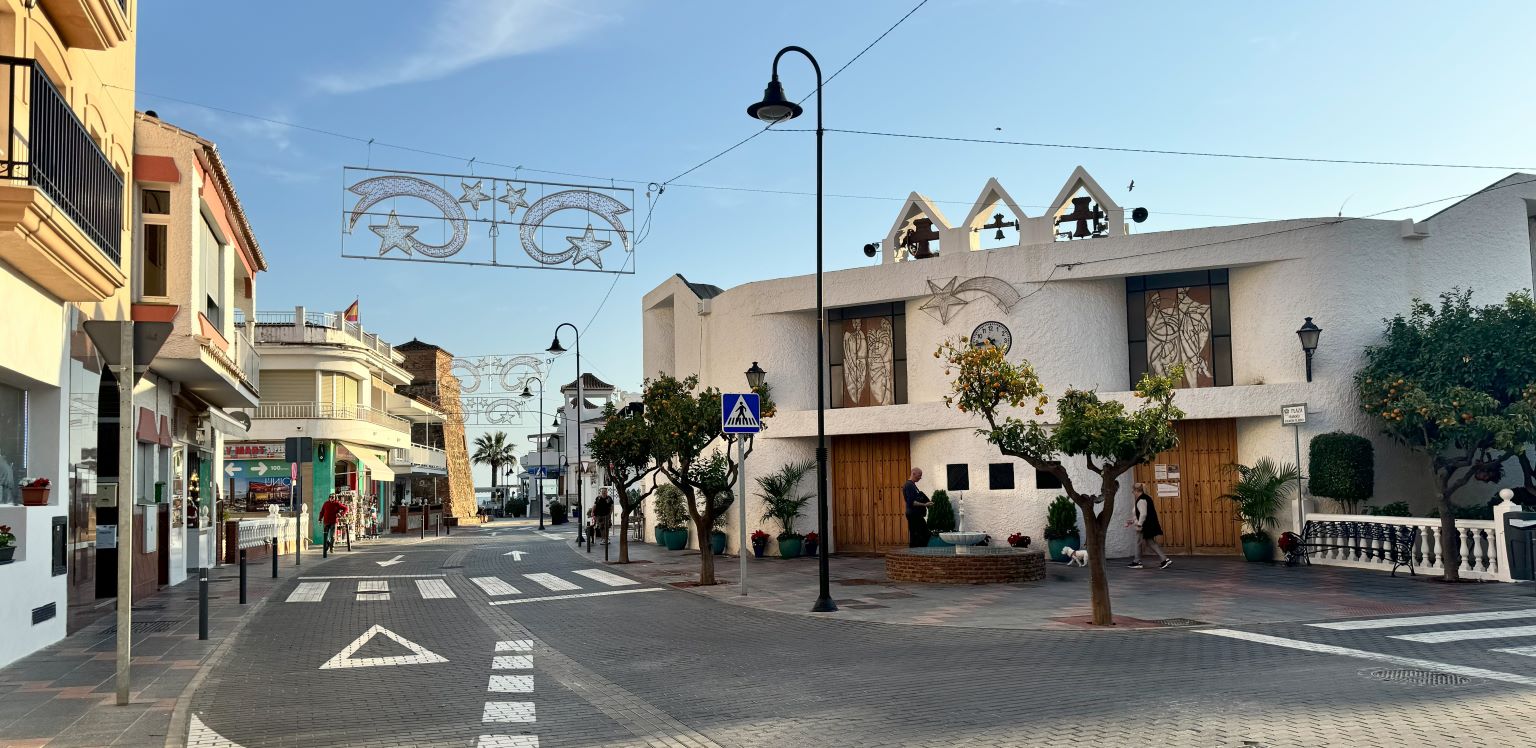
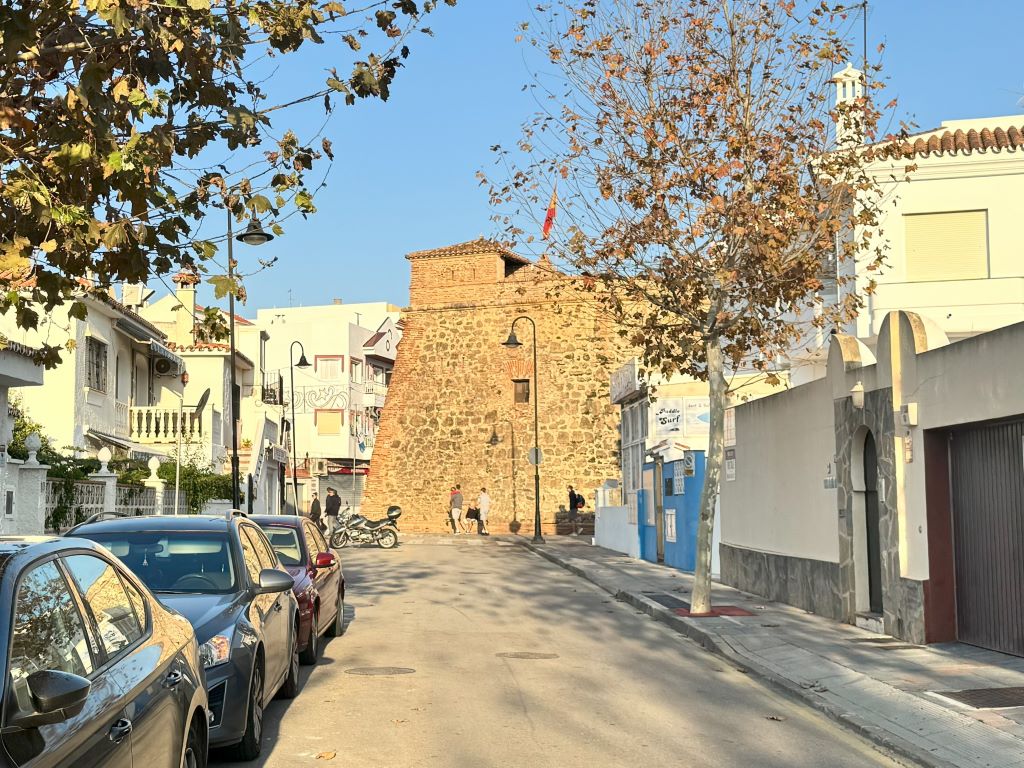
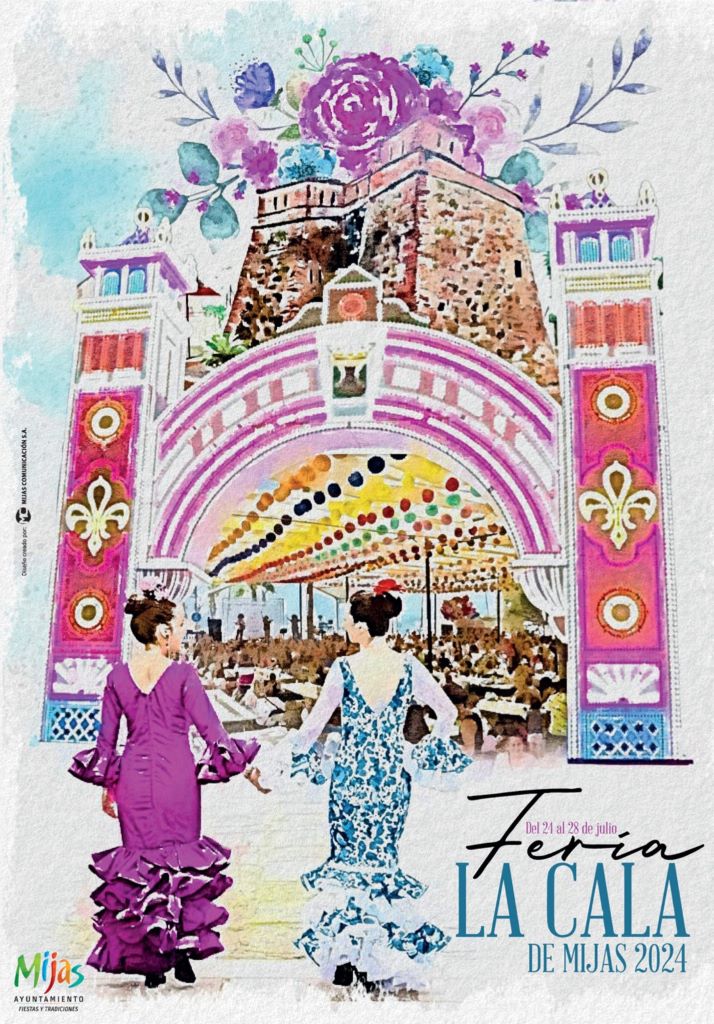
Above: La Cala de Mijas Watchtower seen from Calle Reina Fabiola and the cover of 2024’s Feria de La Cala de Mijas, figuring the village’s Watchtower.
But La Cala is more than it’s watchtower. It is essentially a residential and touristic part of Mijas that is not as built up as the neighboring towns; a little village within the town, with a bit of a Pueblo feel and a large shore, where you can still see the fishing boats. It is not your usual bubbly Costa del Sol town; it is more discreet and very laid back. It has houses up to the promenade, flowers on the streets, a big hotel by the shore and plenty of restaurants.
La Cala de Mijas restaurants
La Cala de Mijas has many restaurant options – Italian, Chinese, Mediterranean, Indian – and several options of pubs as well. These facilities are distributed throughout the town, but there is a great concentration of restaurants in the center of La Cala, the area close to the main access to the village. Look for restaurants along the Boulevard de La Cala, Calle Torrox and Calle Marbella, which connects the center to the Watchtower of La Cala, and you’ll find plenty!
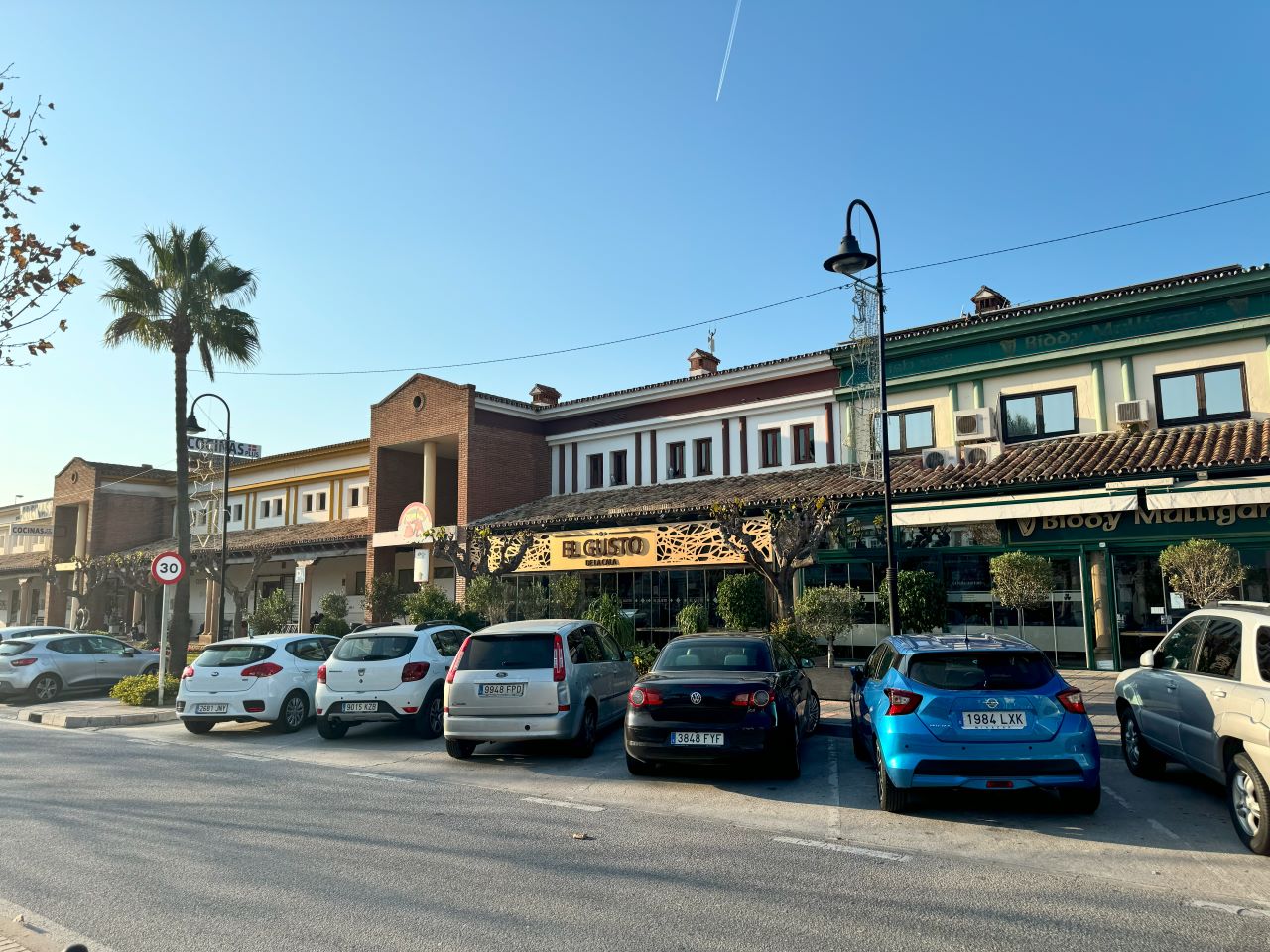
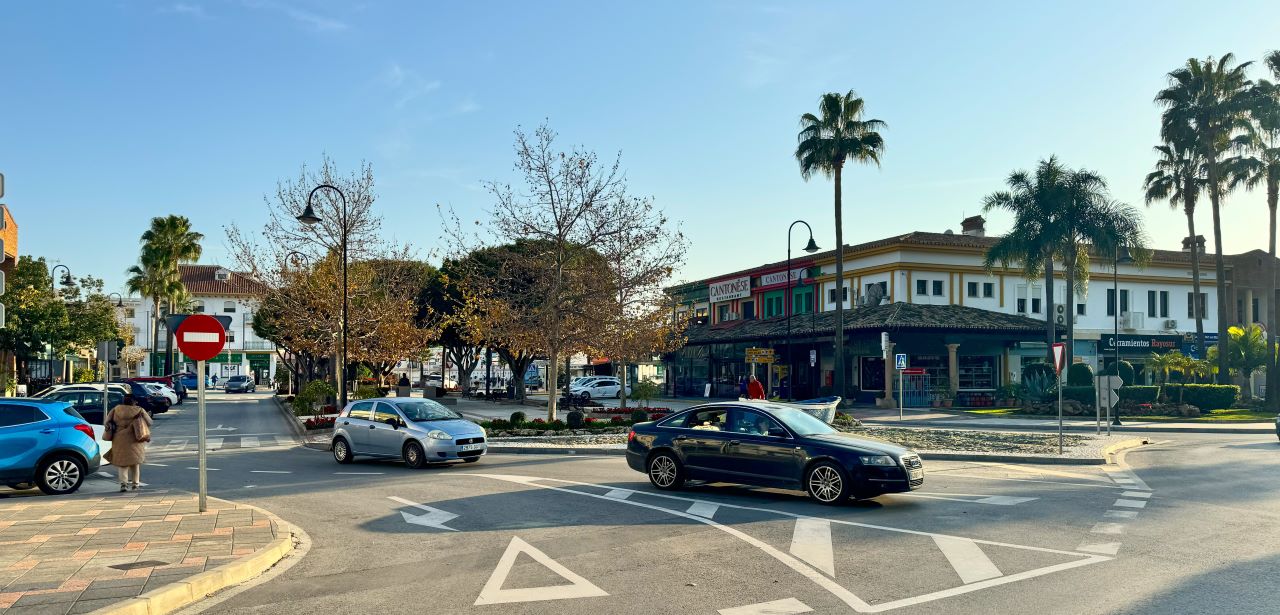
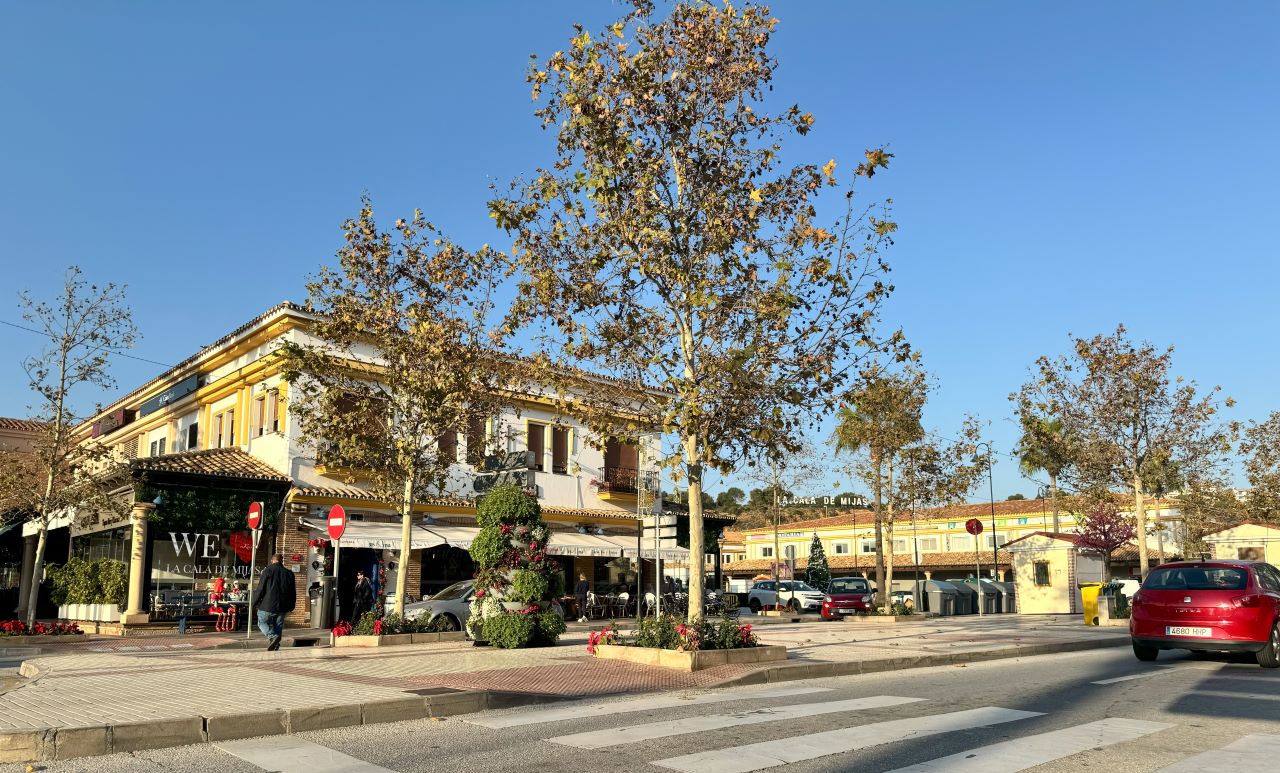
Where to stay in La Cala de Mijas
If you are planning to visit La Cala, here is an interactive map with hotels and vacation rentals. Pick your dates and enjoy!
Promenade and beaches of La Cala de Mijas
The beaches of La Cala de Mijas – Playa La Cala, Playa de la Butibamba and Playa El Bombo – all form one large stretch of sand. The first one, closest to the center (Playa la Cala) is the most developed of the 3 and probably the most touristic. This is the beach by the Watchtower; it has a tiled promenade, with several public bathrooms, areas for yoga sessions, playgrounds, chiringuitos (seaside restaurants) and workout equipment.
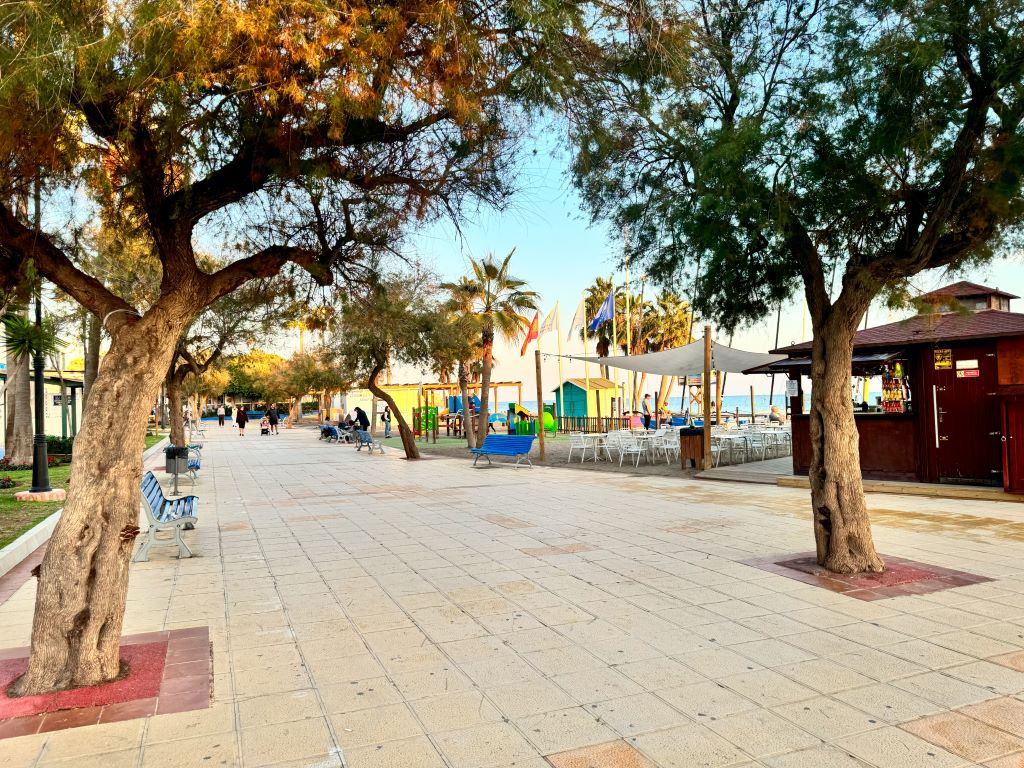
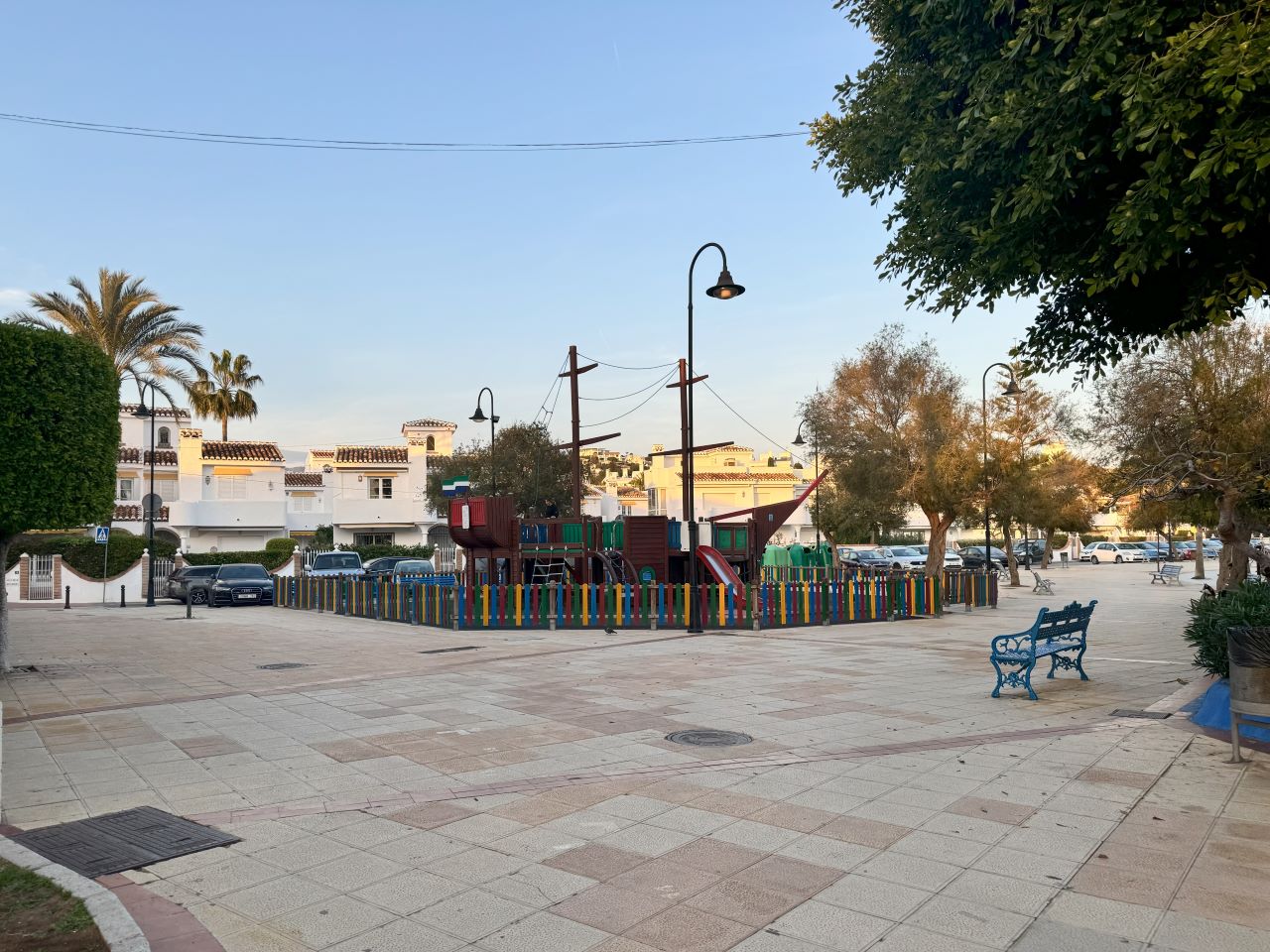

La Cala is true to its origins, with a still-active fishing community and whitewashed houses along the shore, mixed with tourism-related facilities. Going south from La Cal Beach, the next two beaches have a more rustic or natural feel, with a smaller number of Chiringuitos, less facilities and a wooden promenade.
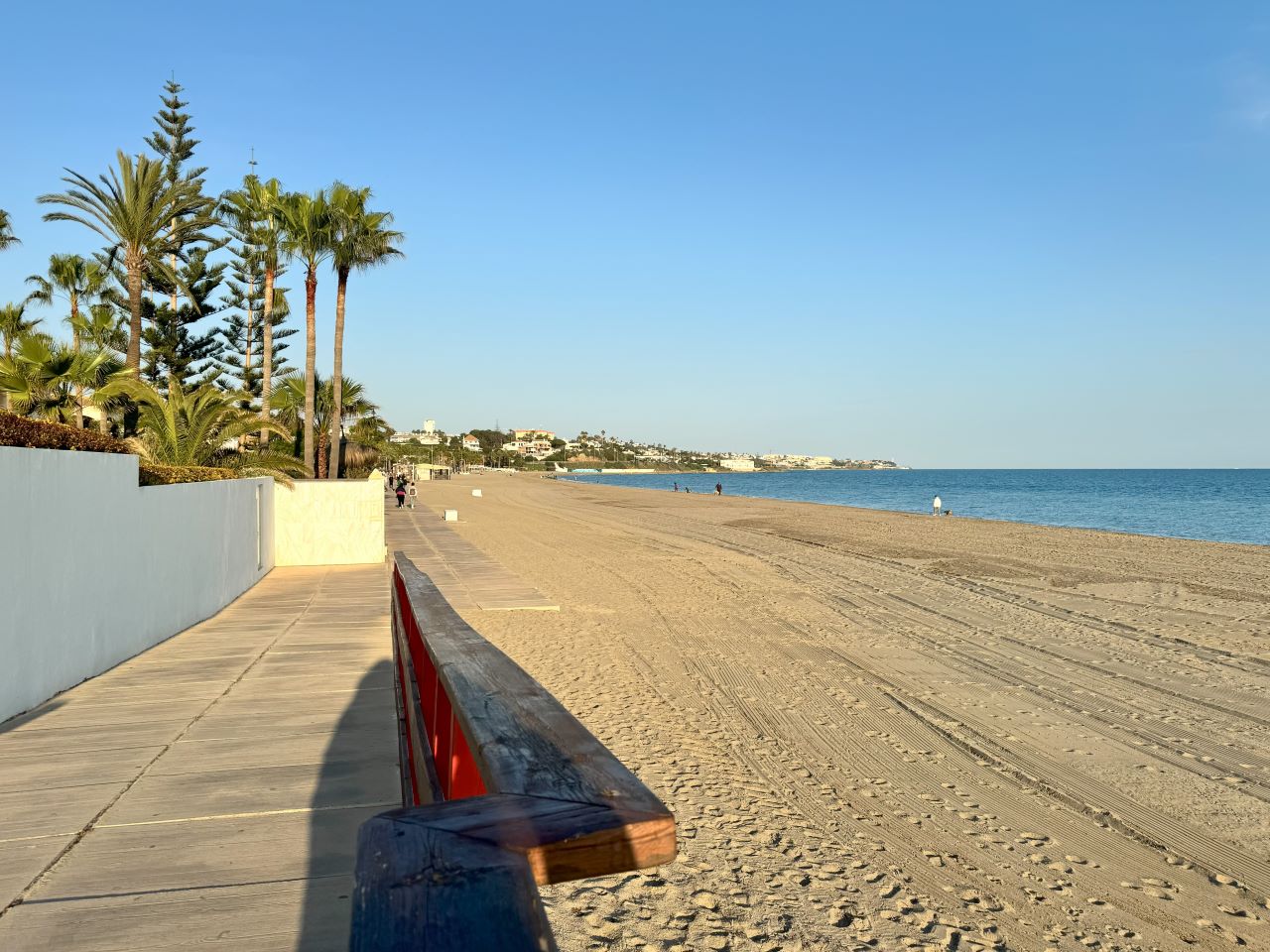
Inner streets of La Cala de Mijas
La Cala de Mijas is built mostly of houses or small buildings. There are lines of houses along La Butibamba Beach (shown below) that feel a bit dreamy, so close to the sea and so private at the same time.
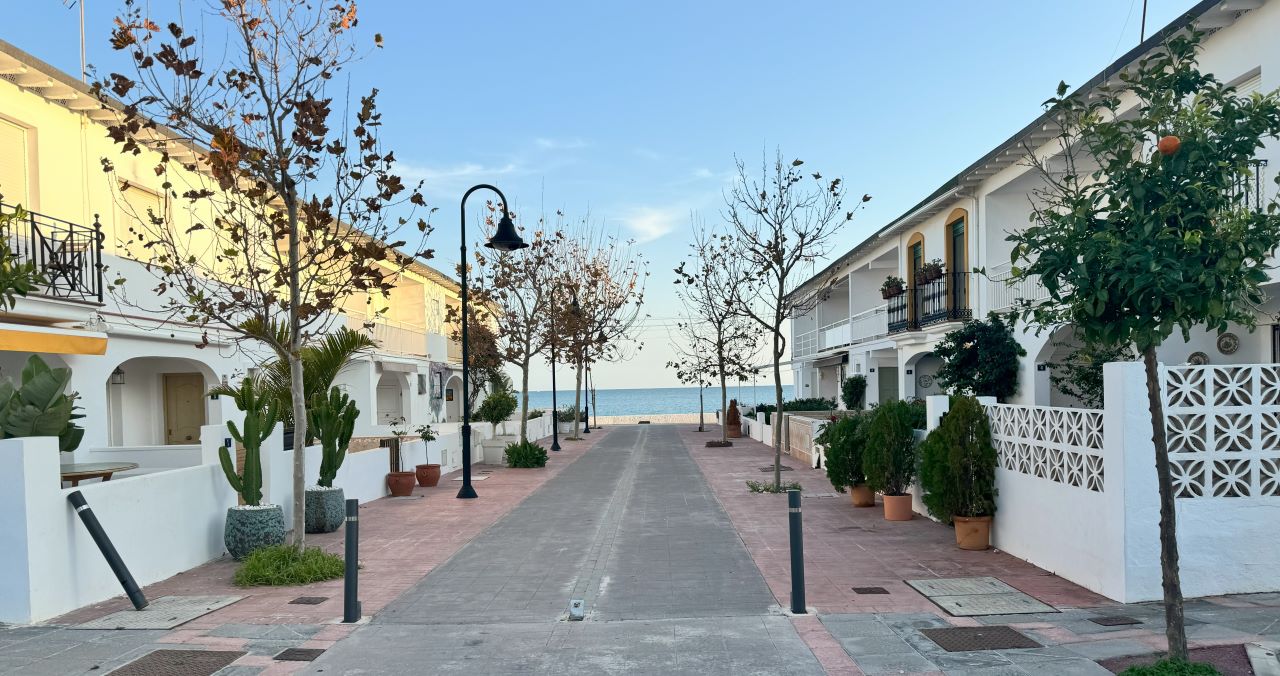
The region closer to La Cala Beach has small buildings, larger houses and commerce along the streets.
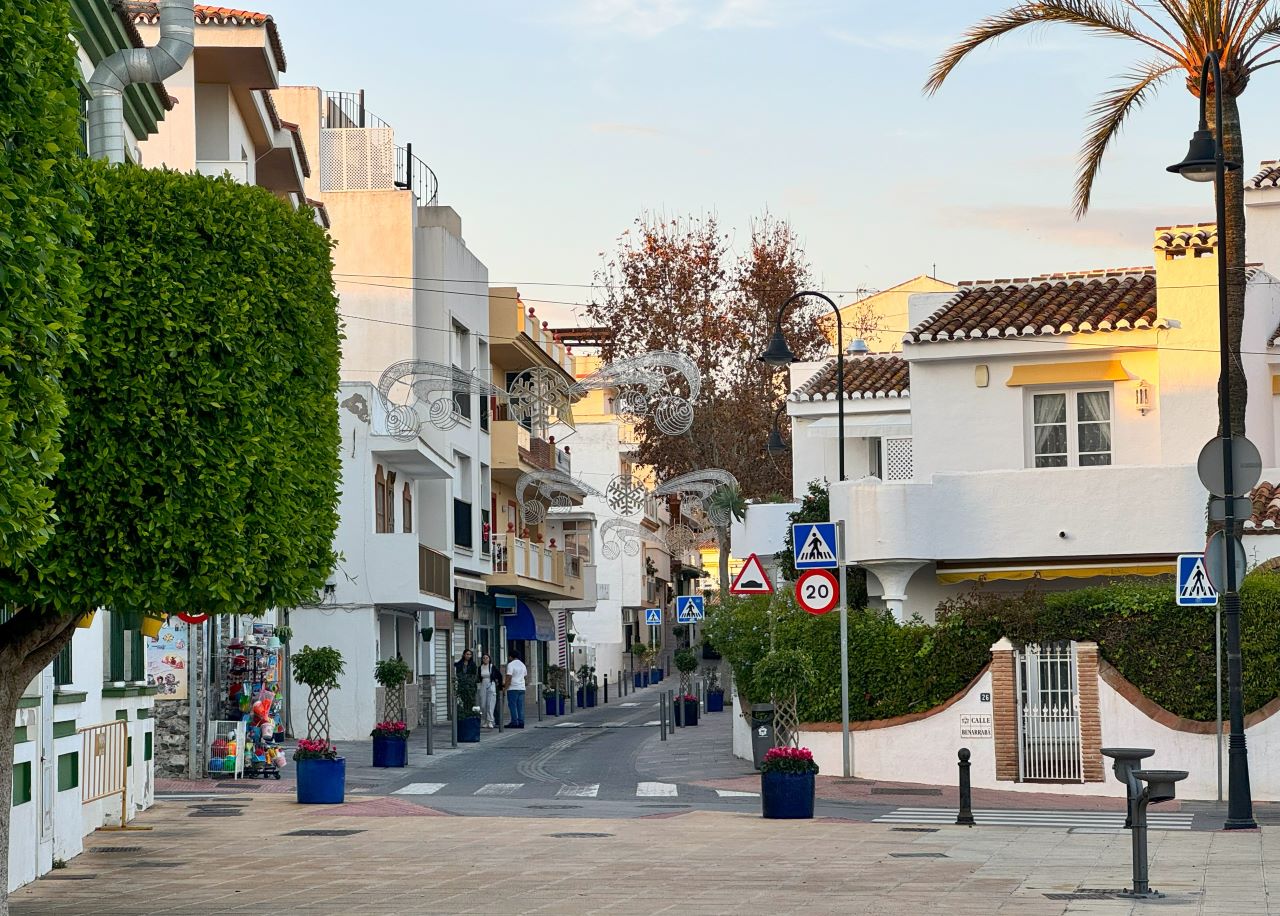
Getting close to the Boulevard de La Cala, the center area, there are also buildings and more local commerce.
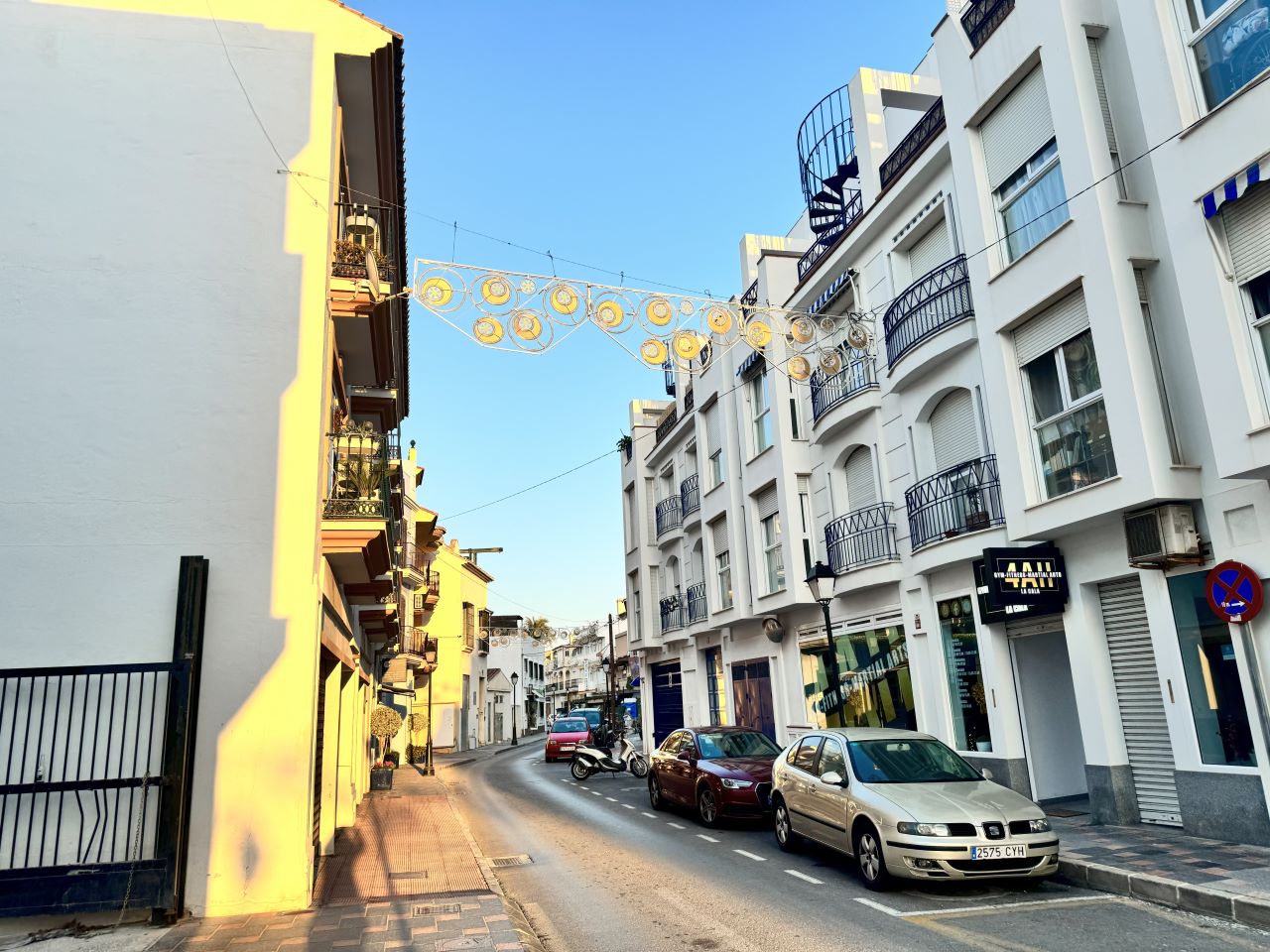
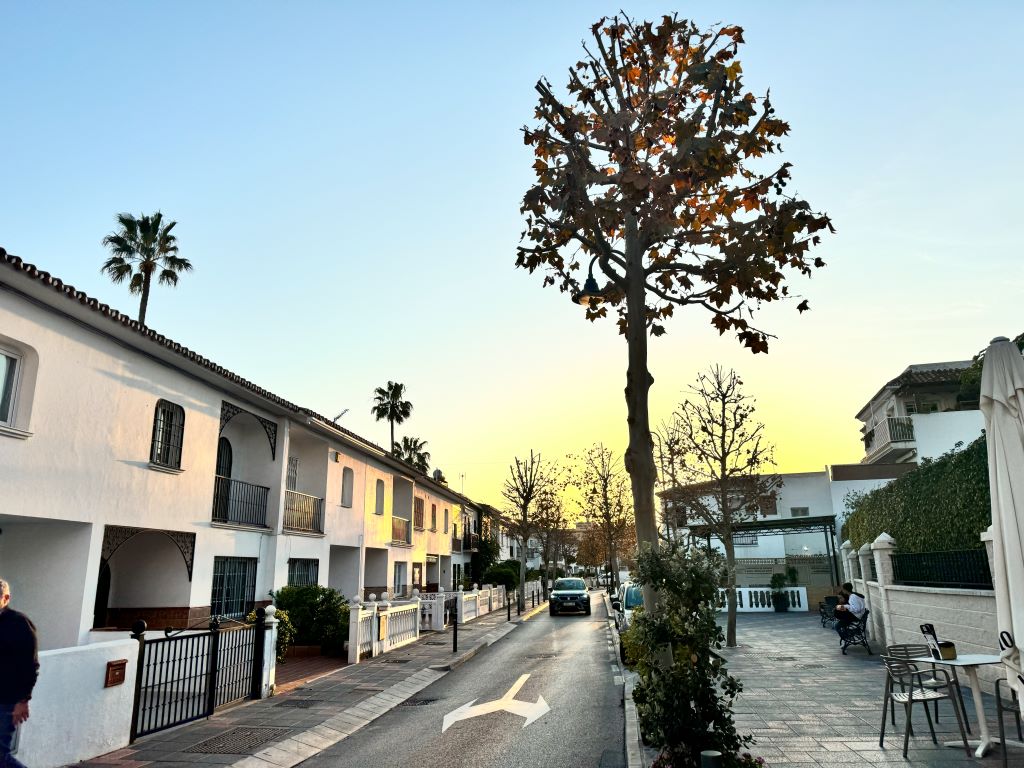
Parque La Butibamba
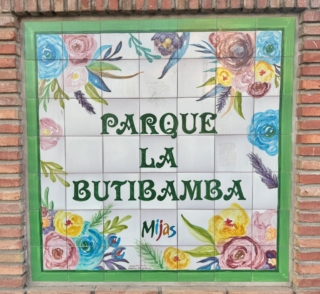
La Cala de Mijas has a cute green park with a large playground and a coffee shop area where parents can rest while their kids have fun or have a snack or an ice cream in between plays. It’s the Parque La Butibamba, a cute and convenient green area in La Cala.
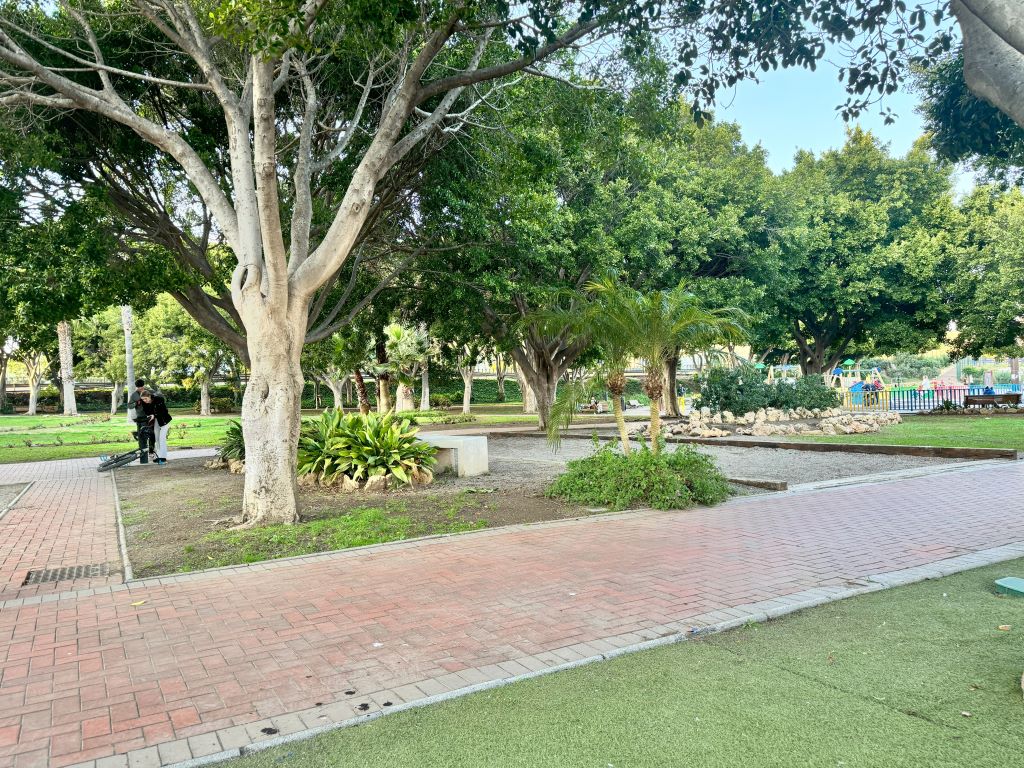
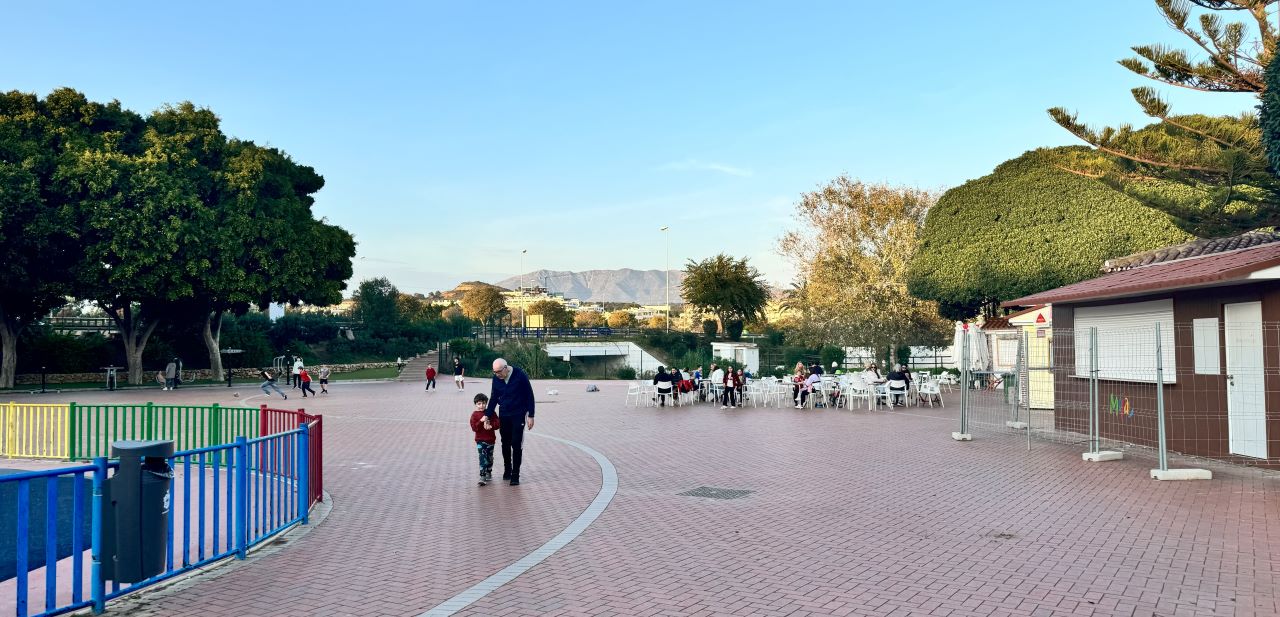
A bit more about La Cala de Mijas
There are few connections to the rest of the Costa del Sol; a car, here, is probably a need. In terms of public transportation, one can get to or from Fuengirola, by bus, in about 40 to 50 min. The bus line M-220 runs about every half an hour during daytime; there is no train in Mijas. This relative remoteness is probably part of the reason why La Cala de Mijas has managed to stay as preserved as it is.
La Cala de Mijas is part of Mijas; more specifically, it is a part of Mijas Costa, one of the three main parts of the town of Mijas – the other two being Las Lagunas (right by Fuengirola) and Mijas Pueblo, by the mountains.
La Cala de Mijas has a bit less than 5.000 inhabitants – as a comparison, Fuengirola has a bit more than 80.000, and Malaga, around half a million. La Cala has a gas station, a supermarket (Carrefour), a sports court, a school for kids up to 12 years old (CEIP García del Olmo) and a secondary school (IES La Cala de Mijas), this last one a bit inland, close to the one health center of La Cala. There are no hospitals in La Cala de Mijas, as far as I know.
La Cala de Mijas also has a Tenencia de la Alcadia, which is sort of an advanced post of Mijas Town Hall. This is a plus, as it makes dealing with documents – padrón comes to mind – a lot easier for residents.
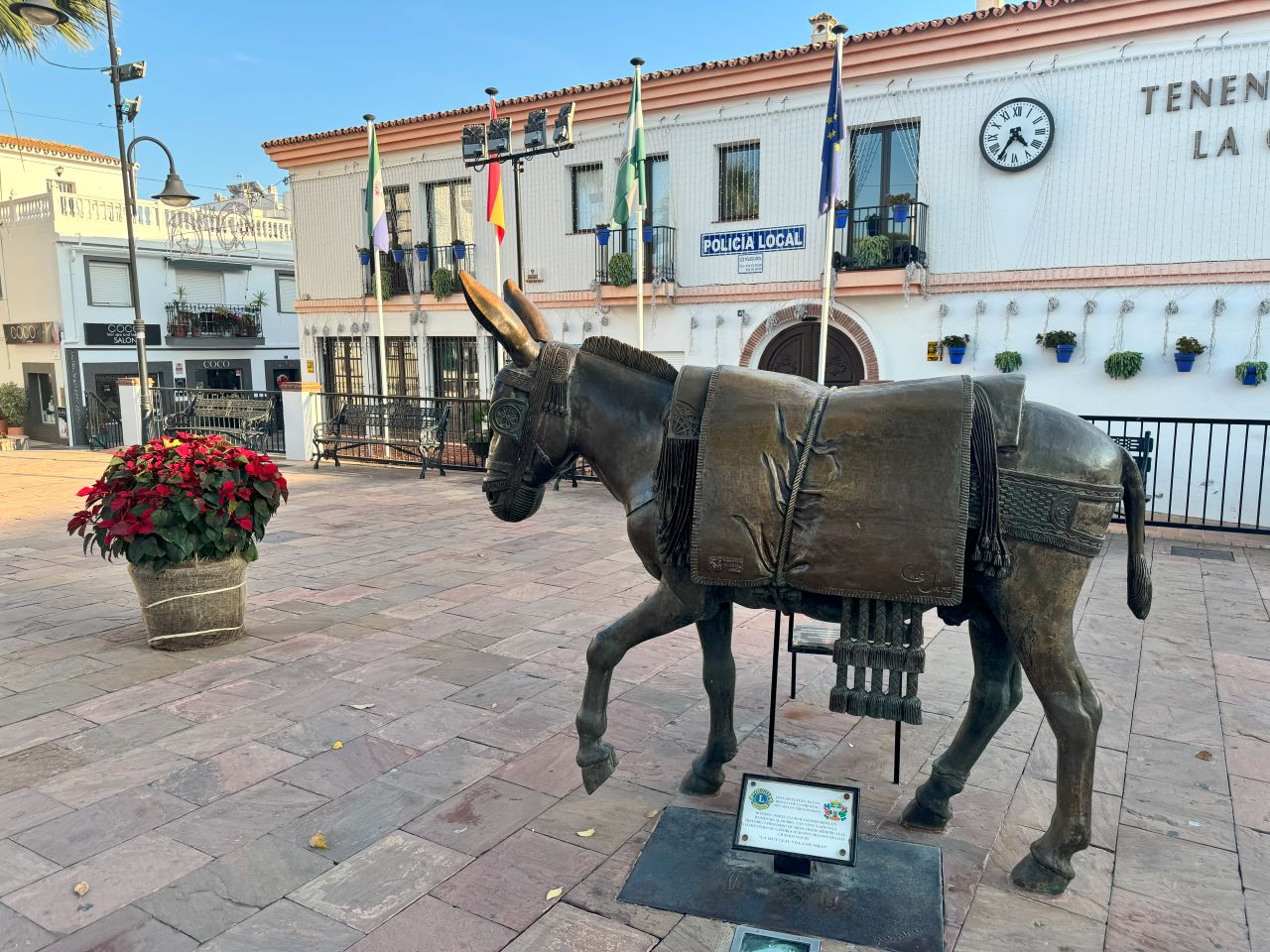
The main event in La Cala de Mijas is its Feria, that happens in the end of July and lasts about a week. La Cala also celebrates Carnival, Halloween and, of course, Christmas, as the decorative lights you see spread on the images above show – I visited in December!
Overall, though Mijas celebrates the same festivities as the other towns of the Costa del Sol, I have this impression (and this may be just my opinion) that Mijas is a bit more discreet in its celebrations; their events tend to last fewer days and to be less publicized than those of the nearby towns, which makes Mijas – and La Cala – a bit more reserved.
Conclusion
La Cala de Mijas is a very nice part of Mijas – and of the Costa del Sol. It’s a favorite area among many, particularly those that want to rest along the beach and enjoy a peaceful stay (or life) without the stress of a large city, the multitude of neighbors and traffic. It’s also a calm area, with relative few events during the year, with the charm of a small fishing village by the Mediterranean shore. It is adorable and visitors inevitably fall in love.
It is difficult to figure out the buses in the Costa del Sol. Frankly, it is sort of messy, with several operators, some joined together in the Consorcio de Transporte Metropolitano del Área de Málaga, some not, and some partially; there are different systems, prices and cards depending on the operator, a lot of cards overlapping and limited, dispersed information online.
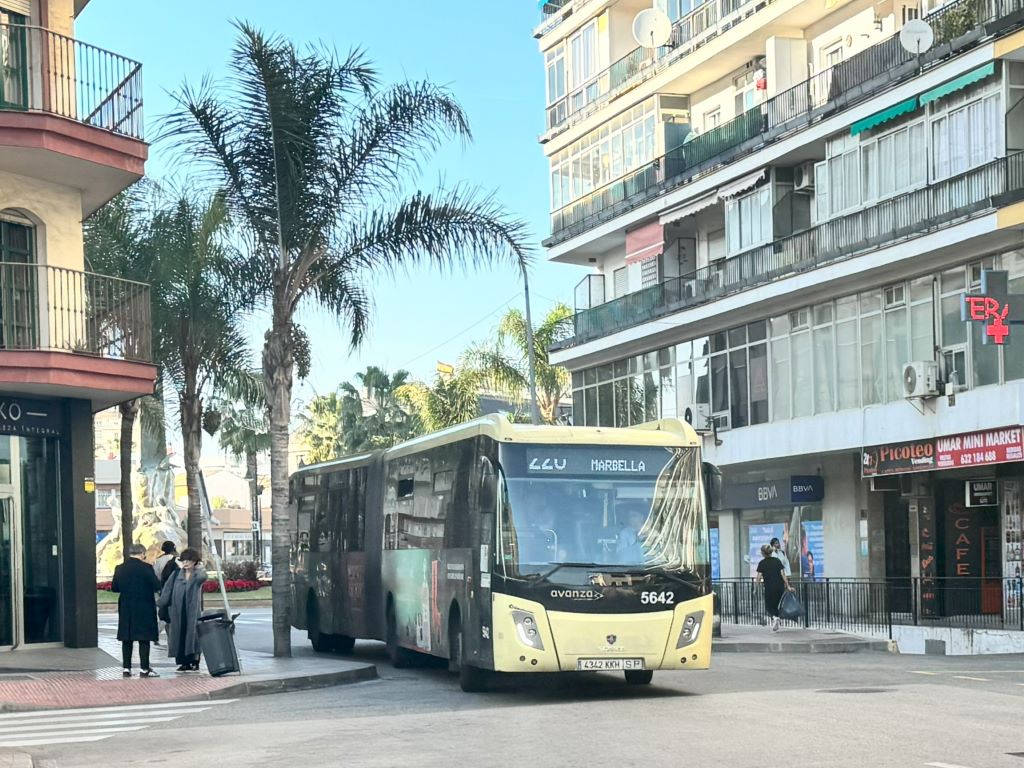
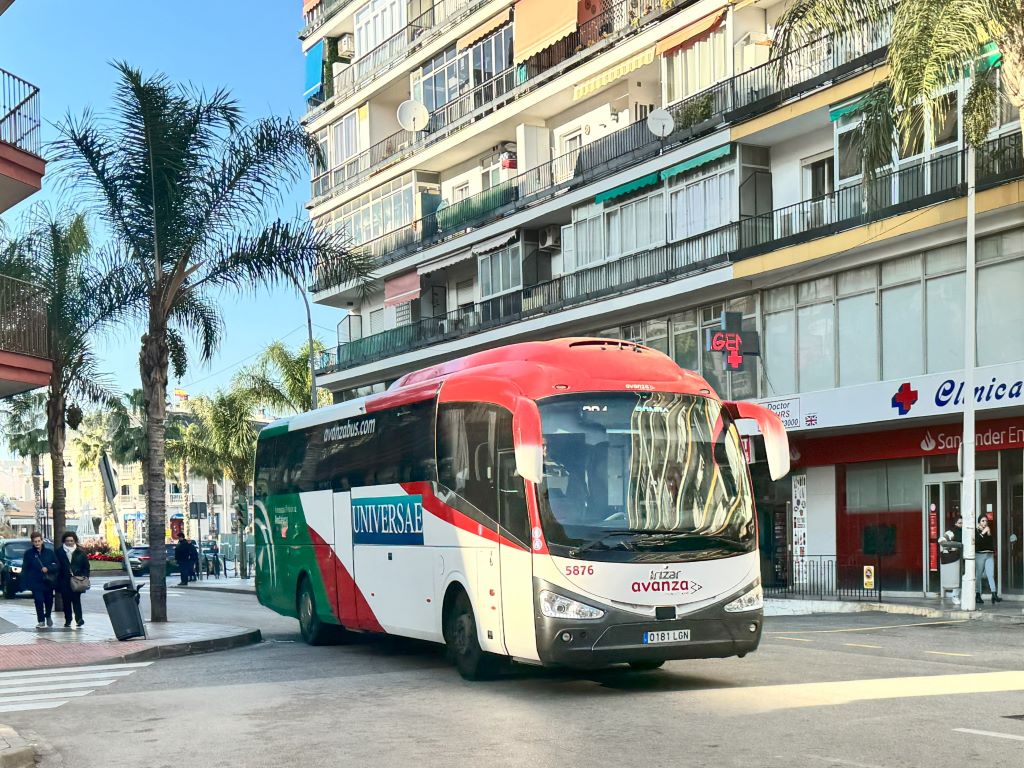
Above: two buses from Avanza. The one on the left (line M-220) is part of the Consorcio Malaga; the one on the right (line L-304) is not.
The goal of this post is to collect as much information as possible in a single place and help untangling this mess. I’ve added every link to every relevant page on the text below, so it should be easy (or a bit less difficult!) to find how to get anywhere your heart wants in the Costa del Sol! But first, let me explain how to pay for the bus.
How to pay for the bus in the Costa del Sol
As a rule of thumb, you can pay for the trips with cash (small bill or coins), directly to the driver, entering through the front door of the bus. Debit or credit cards are accepted on EMT buses (which run inside Malaga city) and may be accepted by Interbus buses, which run inside Fuengirola – some people online say they do, but I am yet to confirm this information – but you cannot pay for the bus with bank cards in the rest of the Costa del Sol, unfortunately.
Avanza, the main bus operator in the Costa del Sol, only accepts bank cards in their offices, which sell their own bus cards, not inside the buses. I asked a driver and even called Avanza to confirm – they really do not accept bank card payment (neither debit nor credit card) on the buses.
But if you are staying longer, if you want to travel often by bus, and especially if you live in the Costa del Sol, you should get a few bus cards that give substantial discounts and make the trips easier, as you just tap the card as you enter, instead of counting coins. It’s the next best thing as to paying directly with a bank card, or even better because of the discounts. In this post, we explain and link to all information about these bus cards.
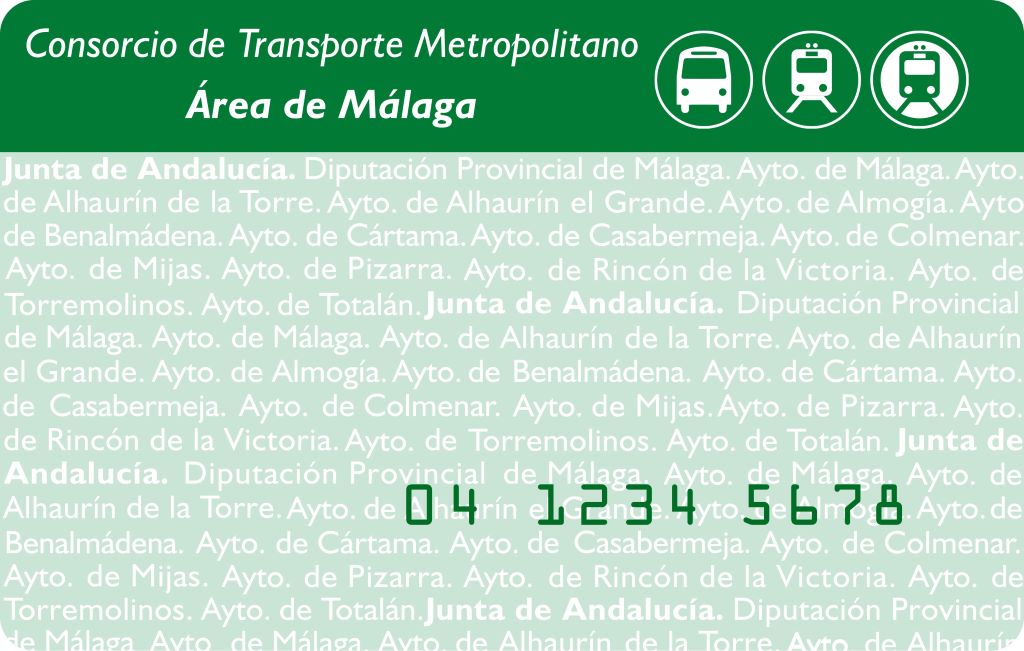
Malaga city buses
The main bus operator of Malaga city is EMT, which is responsible for most of the bus lines that travel within the city. You can find their prices, discount cards, lines and times on the respective linked pages of their website. They do accept the green bus card, despite not being part of the Consorcio Málaga.
To go to the neighboring towns, though, you wouldn’t use EMT. Malaga is connected to the rest of the province by several different operators, many of them bundled on the Consorcio Málaga – an attempt by the government to give some uniformity to the public transportation system, by joining several operators under the Consorcio guidelines. It is helpful, but not complete, as many bus operators are not part of the Consorcio; the Consorcio also has a limited range – it is focused on the city of Malaga, not on the Costa del Sol as a whole.
You can check the lines of the buses operated by companies that belong to the Consorcio on their website. The Consorcio also includes, beyond buses, the 2 train lines of Malaga and Malaga’s subway. You can use the green bus card that we discussed on Bus and Train Cards in the Costa del Sol in the lines operated by the Consorcio Malaga (EMT buses, Consorcio buses, train and subway). By the way, it looks like the trains in the Costa del Sol will continue to be free of charge until at least June 2025!
Among the operators of the Consorcio, Avanza is the one that offers more lines in the Costa del Sol, and the main one at our next stop, Torremolinos.
Torremolinos buses
Torremolinos has two bus lines that stay only in the town, lines T-1 and T-2, both operated by Avanza, and several lines connecting Torremolinos to nearby towns (choose Torremolinos on ‘Municipio’ to see all the bus lines of the town). These are also all operated by Avanza, except for line M-136, which connects Los Álamos, in Torremolinos, to Alhaurín de la Torre and Cártama, operated by Autocares Vázquez Olmedo. As both operators belong to the Consorcio Málaga, I believe it is possible to use the Consorcio green card on every bus of Torremolinos.
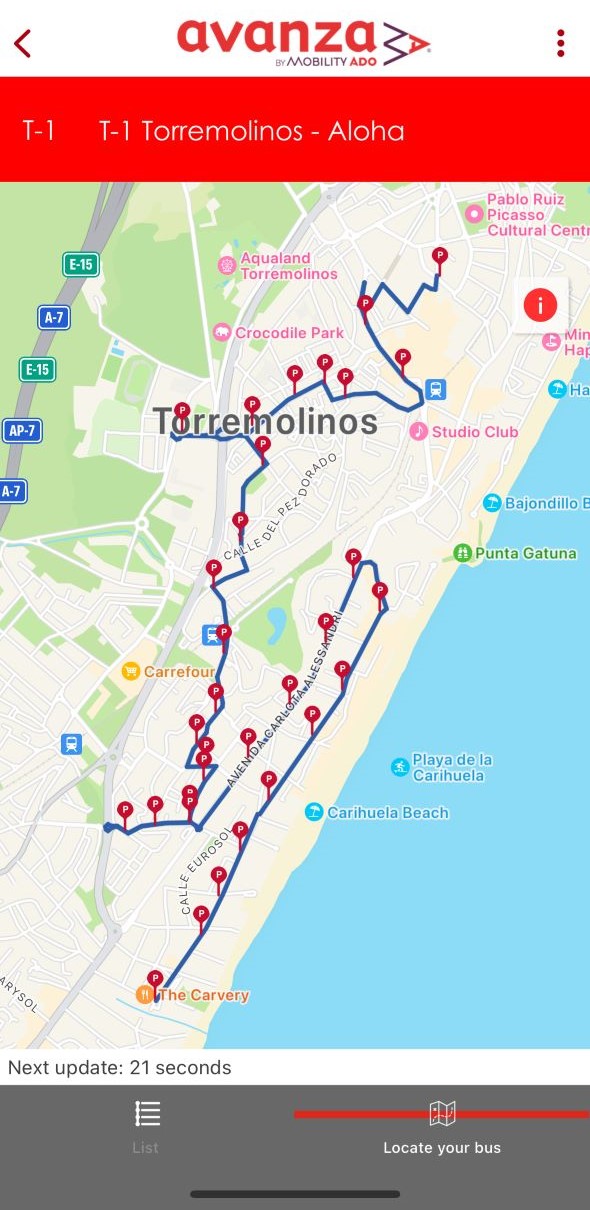
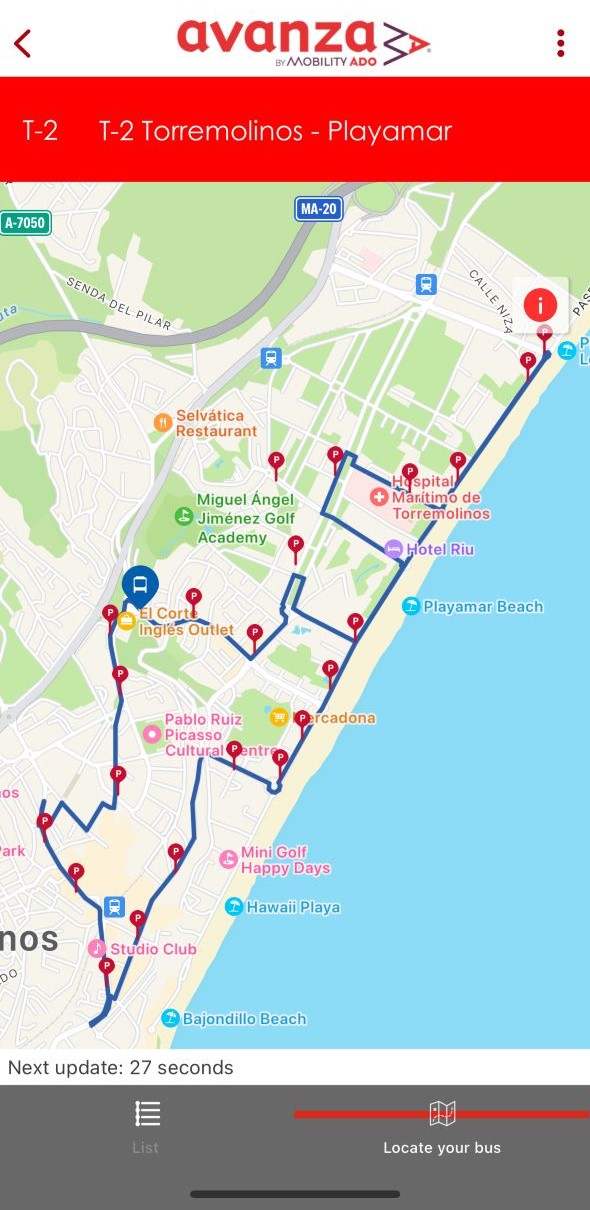
Above: T-1 and T-2, the two bus lines that ride inside Torremolinos, as shown in Avanza App.
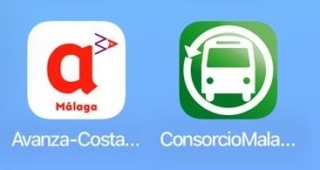
The Avanza app is very useful and handy – it shows the routes, timetables and even tells how long until the next bus arrives at your chosen stop! I’ve used it a few times and so far, the app has been accurate – quite a relief, because the web of the Consorcio is anything but.
The full price ticket within Torremolinos costs € 1,30 as of this writing, and the town does not offer free bus lines for residents (Benalmadena, Fuengirola and Marbella do, as we’ll see ahead). With the green bus card this price drops to € 0,50 (up to the end of 2024) or € 0,99 (from January 1, 2025). Avanza also has their own discount cards with better discounts than the green bus card of the Consorcio, but they are valid just for lines T-1 and T-2. You can read about Avanza cards here and buy one for €1,80 at Avanza’s office in Terminal Torremolinos (Calle Hoyo 10, shown below).
Above: Avanza’s office in Terminal Torremolinos, one of the main stops of the town.
In Torremolinos, the Avanza cards are sold only at the office in Calle Hoyo, but can be recharged in the bus. Notice, though, that this card is valid only for lines T-1 and T-2, the lines that stay within Torremolinos, referred to as Transporte Urbano de Torremolinos; the green bus card is valid for these lines and all other lines of the Consorcio Málaga. Nothing stops you from getting both and using the one that is more convenient on each occasion – I would certainly do that if I used the T-1 and T-2 lines often. Both Avanza and the green bus cards are available for visitors and residents alike.
Benalmadena buses
Like Torremolinos, Benalmadena has two lines that circulate only within the town – lines M-103 and M-107, both operated by Avanza. It is also connected to nearby towns by several bus lines, all of them by Avanza (choose Benalmádena on ‘Municipio’ to see all the bus lines of the town). On top of the two internal lines, buses that connect to other towns are used daily just to move inside Benalmadena; and like Torremolinos, Malaga and Fuengirola, Benalmadena also has the train.
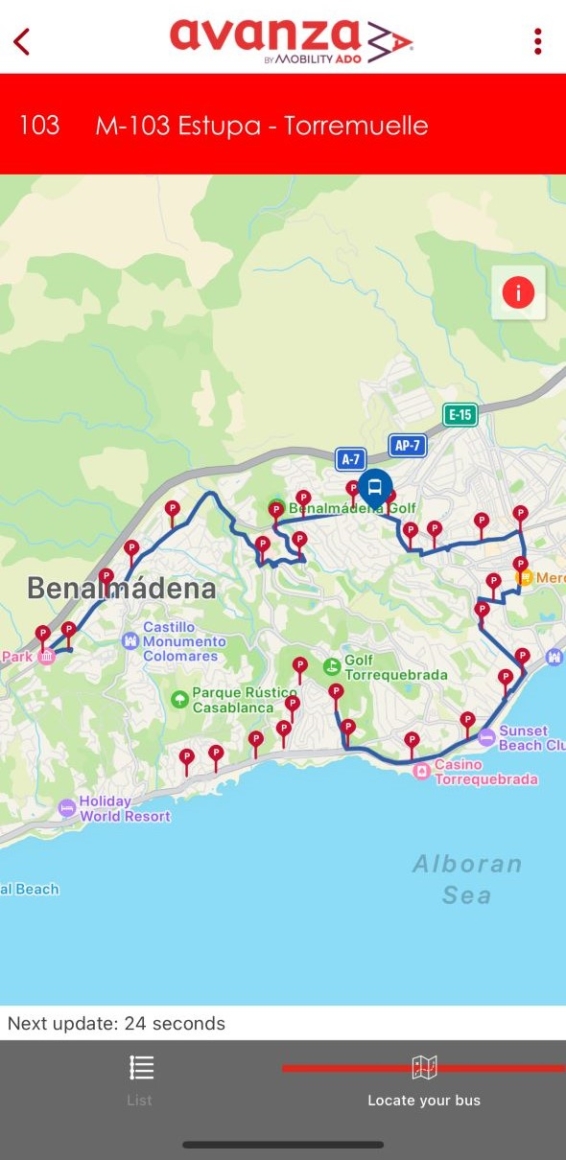
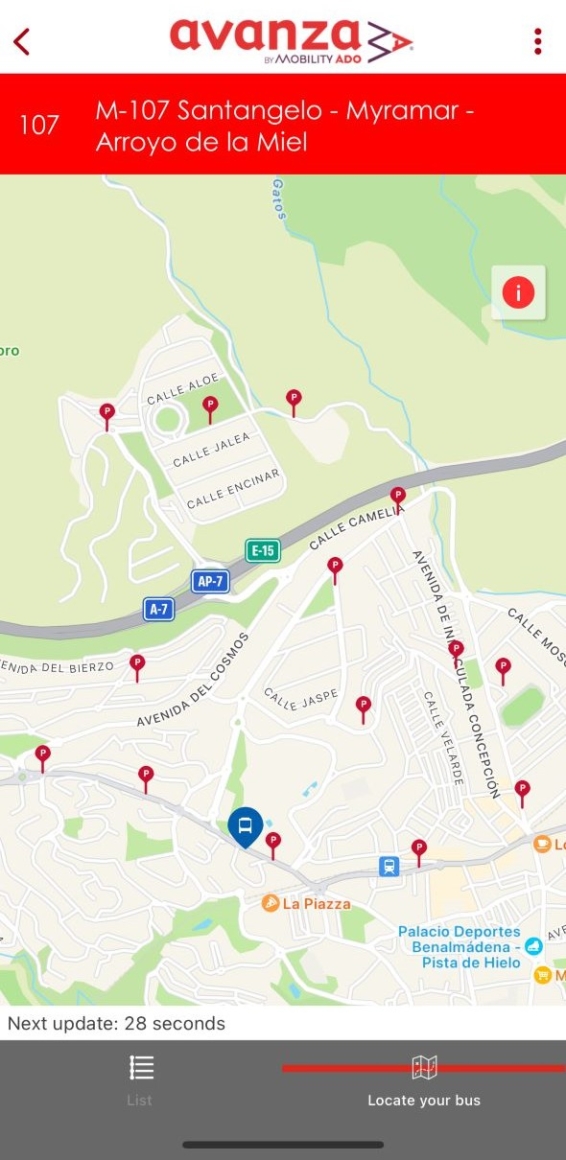
Above: M-103 and M-107, the two bus lines that ride inside Benalmadena, as shown in Avanza App.
Residents of Benalmadena can use the two internal lines – M-103 and M-107 – for free, as long as they have the transport card which we’ve discussed in detail in Bus and Train Cards in the Costa del Sol; everybody – local or not – can benefit of the discounts of the green bus card in these two lines and in all other lines of the Consorcio. The fares for these two lines in Benalmadena, as of this writing, are € 1,55 (full price) and € 0,50 (up to the end of 2024) or € 0,99 (from January 1, 2025) with the green bus card.
The fares for the bus lines connecting Benalmadena to the other towns remain too tangled for my understanding, but you always get a good discount with the green bus card. I think almost each line has their own fare, but go down to around € 0,40 to €0,50 (in 2024; probably € 0,99 in 2025) with the green bus card.
Fuengirola buses
Fuengirola bus system is completely different from the previous two towns we have seen so far, something that took me long to understand. 😳 But I did it! (I think). Here is the catch: much like Malaga, Fuengirola is served internally by a bus operator that is not part of the Consorcio, but connected to the other towns by Consorcio’s bus lines. That explains, among other things, why it is so hard to buy a green bus card in Fuengirola!
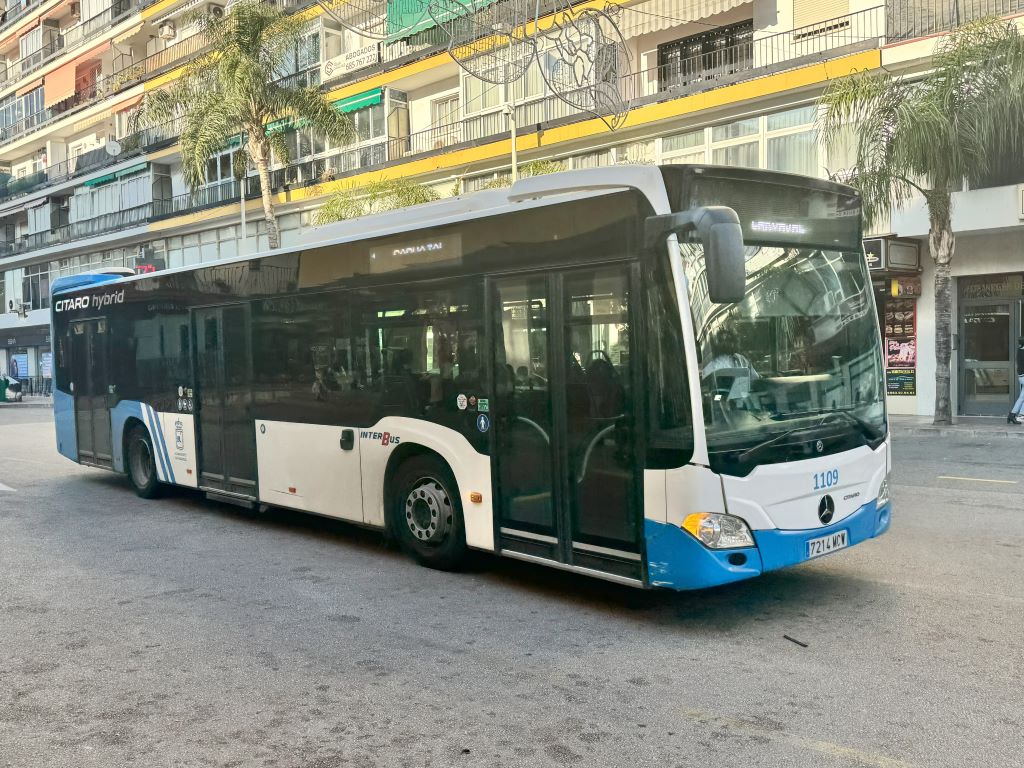
There are 5 bus lines that run within Fuengirola, all operated by Interbus. They are called L1 (blue), L2 (green), L3 (pink), L4 (yellow) and L5 (dark red).
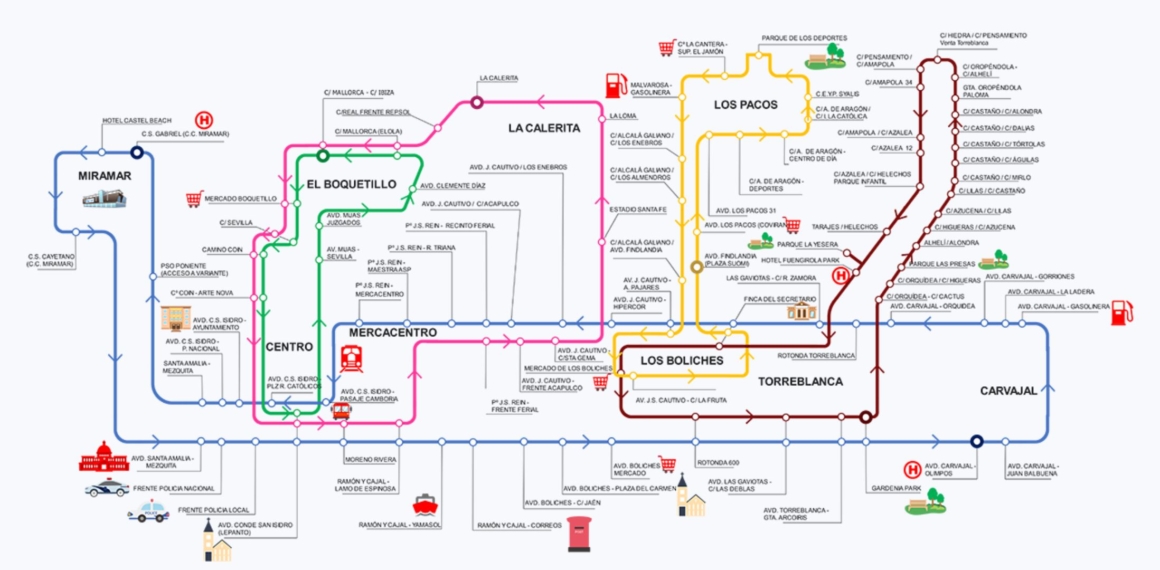
All 5 are free for Fuengirola residents – an example! For everybody else, the current fare is €1,20 per person and € 0,60 for pets; it is possible to buy a 10-trip pass for € 10,00. The town also has their own app, called Fuengirola Transporte Urbano, but no transportation card.
But when leaving Fuengirola by bus, you’ll get one from Avanza, and there the green bus card makes sense. You can check the lines that connect Fuengirola to the nearby towns on the page of the Consorcio (choose Fuengirola on ‘Municipio’ to see all the Consorcio bus lines that pass in the town).
Mijas buses
Mijas is a bit different from the previous towns, but not like Fuengirola. It’s quite unique. There are no internal bus lines in Mijas connecting the different parts of the town; when moving between La Cala de Mijas and Mijas Pueblo, for instance, one would need to go to Fuengirola and then take another bus. Sad, I think.
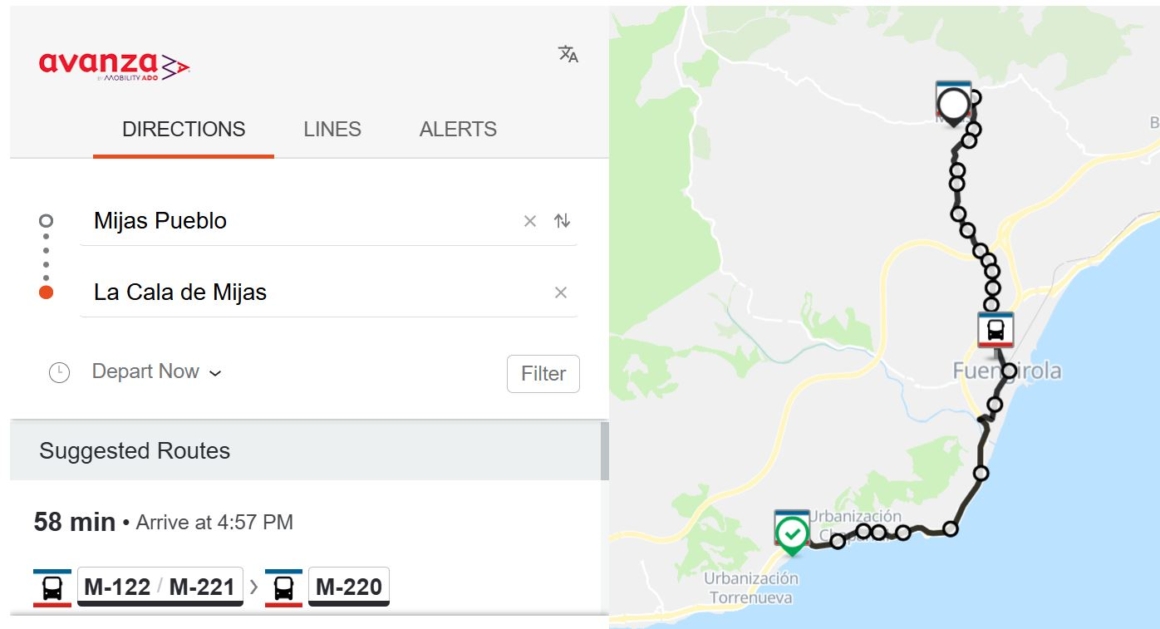
Nevertheless, Mijas Town Hall says that Las Lagunas has 3 urban lines that allow for good communication within the different parts of the city… but doesn’t name or show them. The same page points at the Consorcio Málaga (choose Mijas on ‘Municipio’ to see all the bus lines of the town) as the provider of buses for the town – all of them by Avanza. At least the green bus card is valid here!
Marbella buses
Up to now we got it easy, dear reader, thanks to the Consorcio Málaga. It just turns out that, for reasons beyond my understanding, the Consorcio Malaga does not include Marbella (nor Estepona). This is the Consorcio’s range:
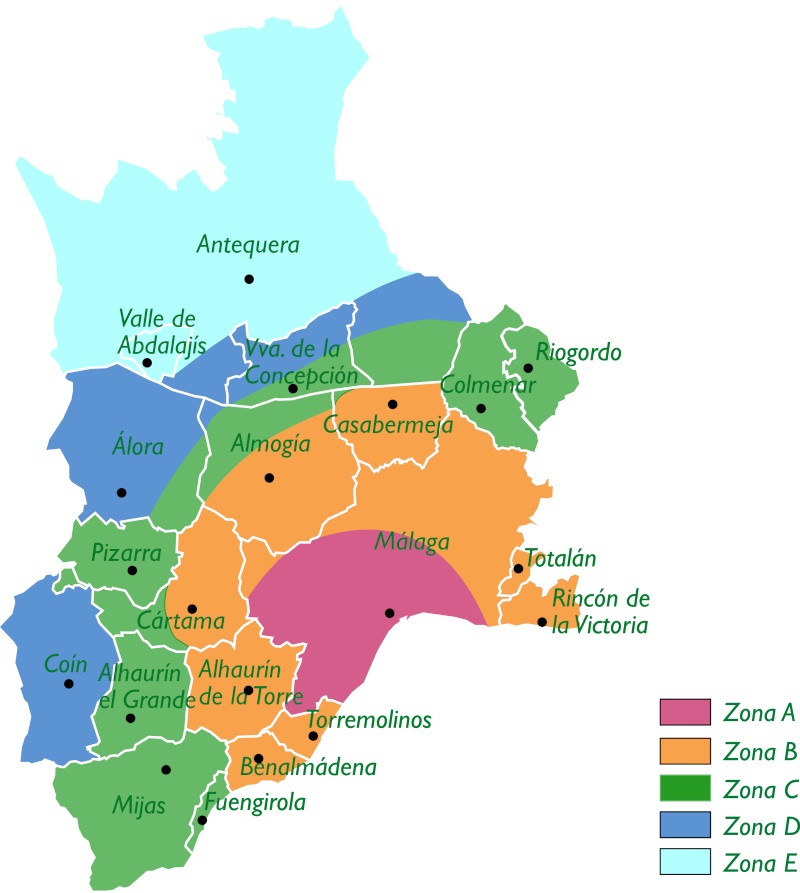
There are 13 bus lines that run inside Marbella – all provided by Avanza but completely unrelated to the Consorcio, which means the green bus card is not valid here at all. These 13 lines are free for residents that have the local bus card! There are discount cards available as well, one of which, called Tarjebus, lowers the fare from € 1,18 to € 0,83. You can check information on Marbella cards and fares here. Besides the resident’s bus card and Tarjebus, Avanza offers one more option of bus card that make sense for frequent Marbella visitors: it is the Avanza Costa del Sol card, that we will discuss ahead, because it also matters for Estepona visitors.
The problem is the connection between Marbella and nearby cities. It’s deficient, to put it lightly. The Consorcio has one bus line, M-320, named Malaga-Marbella and another one, M-220, named Fuengirola-Marbella but, as you would expect, it doesn’t really reach Marbella – at least not with the green bus card.
It’s very confusing: the page for the M-220 line on Consorcio says it goes only until Leila Playa, in Calahonda (Mijas) close to the border of Las Chapas (Marbella), but several kilometers away from Marbella’s center; the page for the same M-220 line on Avanza says it goes way beyond Leila Playa, reaching the center of Marbella and beyond. I guess the lines that reach beyond the Consorcio borders have this particularity, that you would have to inform the bus driver of where you are going and be charged accordingly, either being allowed or not to use the green card! Because why not make it complex, right?
To go to Marbella Center from Benalmadena or vice-versa, by bus, it would take at least two buses and about two hours; there seems to be only one bus line (L-304, Málaga-Ronda), and it passes only twice a day. It is also more expensive than the usual bus (around € 6,00 each way), as it is actually an inter-city, travel bus. By car, it takes around 40 minutes – but parking in Marbella’s Center is expensive, around € 4,00 per hour. Uber / taxi should cost around € 30 to € 40.
To find the ways to go to Marbella from where you are, I’d recommend checking Google Maps first (you can do it from the map below!), and then confirming times and lines on Avanza. Even better if, instead of using Avanza’s website, you can confirm on Avanza’s app, which updates in real time.
Google gives many more options than looking directly on Avanza’s website; they also show local lines, which can come in handy – but the bus lines may be outdated. Avanza’s website shows less options, takes time to load and is not always user friendly, but seems to be up to date – or so we hope! Avanza app I have used on the street a few times, and so far, it has been spot on.
I think the best way to get to Marbella from Malaga, Torremolinos or Fuengirola using public transportation would actually include taking the train to the last stop – Fuengirola – and from there, the L-60. This bus passes several times per day – way more than two! – which is already a big plus. The full fare is € 3,75, but less with Avanza’s Costa del Sol card. And the bus stop is very close to the train station, so you can time yourself according to your needs. 😉
Above: the bus stop in Fuengirola (Terminal Fuengirola) where we can get the L-60, that goes to Marbella. This stop is very close to the train station. On the right of the image, we can see Fuengirola’s obelisk (Monumento Mare Nostrum), which is right at the exit of Fuengirola’s train station.
Estepona buses
Estepona is quite large, but has only 3 bus lines, all by Avanza. Checking the Town Hall’s information on the matter takes you straight to a page in Avanza website about buses in Estepona. And you know what? It is an improvement. Up to August 2024, the buses in Estepona were being provided by another company, much smaller; it was even harder to find information, and there were only 2 lines.
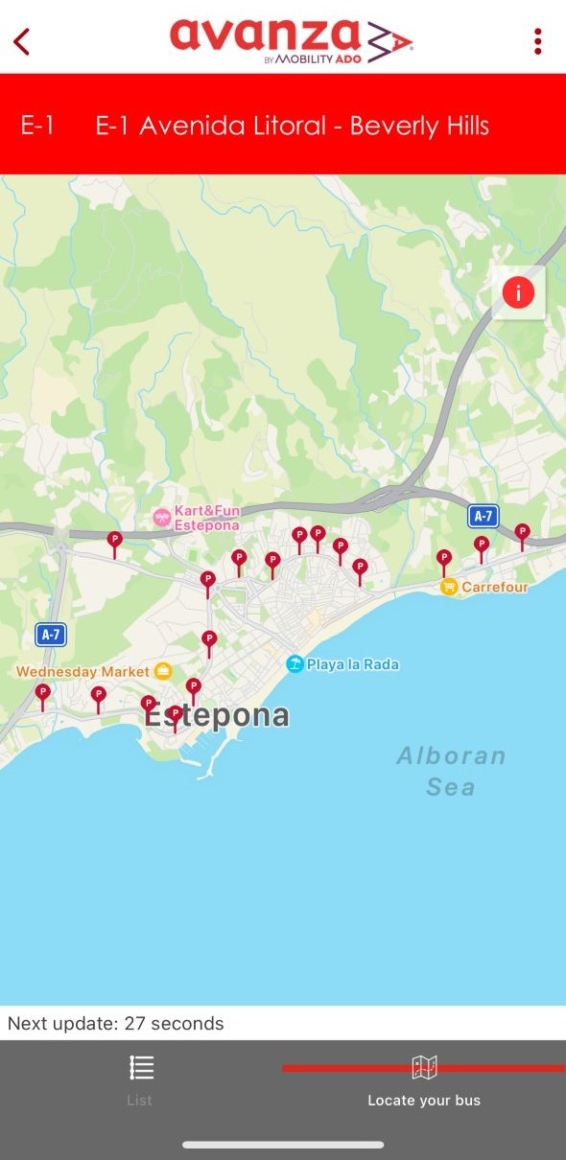
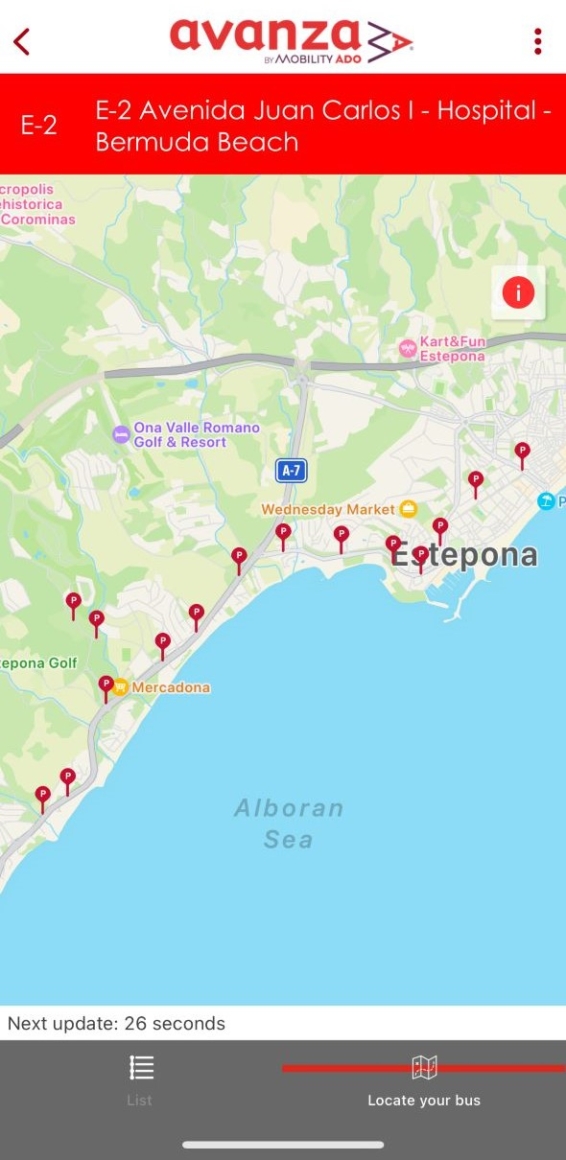
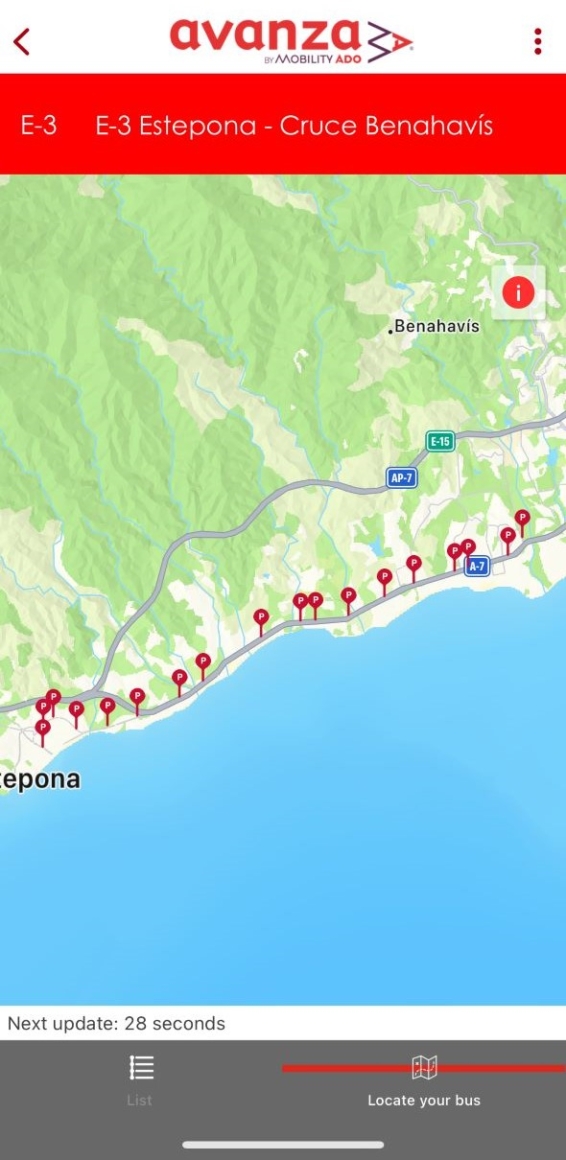
Above: E-1, E-2 and E-3, the bus lines that ride inside Estepona, as shown in Avanza App.
The regular fare for the internal lines in Estepona is € 1,20, but it lowers to 0,70 with the Avanza Costa del Sol bus card. There are no bus cards in Estepona besides the Avanza bus card, that we will see in the next topic.
Estepona, like Marbella, is not connected to the Consorcio Malaga, and getting there is like getting to Marbella on steroids. From Benalmadena, there are ways to reach the town by taking two buses, but most options use three; there are less lines than to Marbella, and, of course, the trip is more expensive and longer – about 3 hours, while by car it is close to one. You can check directions and lines from where you are on the map below:
Avanza Costa del Sol Card
The Avanza Costa del Sol bus card works for a limited number of lines, which are not covered by the Consorcios’s green bus card but are specified on the previous link. It also works for the lines within Estepona (with discount) and for those within Marbella (without discount). It can be purchased in the Avanza offices listed here and recharged in the same offices, in the bus or even online.
I have never used this card, and it seems a bit complex; according to the previously linked page about the card, you’d have to inform the bus driver about where you would like to go, as for some lines this card is valid only for origin or arrival outside of the borders of the Consorcio. So, in the same bus line, this card can be both valid and not valid. A Schrödinger’s card, so to speak…
From the Airport to Marbella or Estepona by bus
Getting to Marbella or Estepona from the airport by bus is confusing, to say the least. Take Avanza’s line L-602, for instance, that looks very convenient: it has one stop in the airport, next on Marbella and then Estepona. Fantastic, right?

But it offers only one time – get to Malaga in the morning or no deal! Clicking on the pdf link that says “consulta aqui todos los horarios de media y larga distancia” (check here all the times for medium and long distances), though, gives you this fabulous list with all the lines and times from Malaga to pretty much anywhere – Marbella, Estepona, even La Línea and Algeciras:
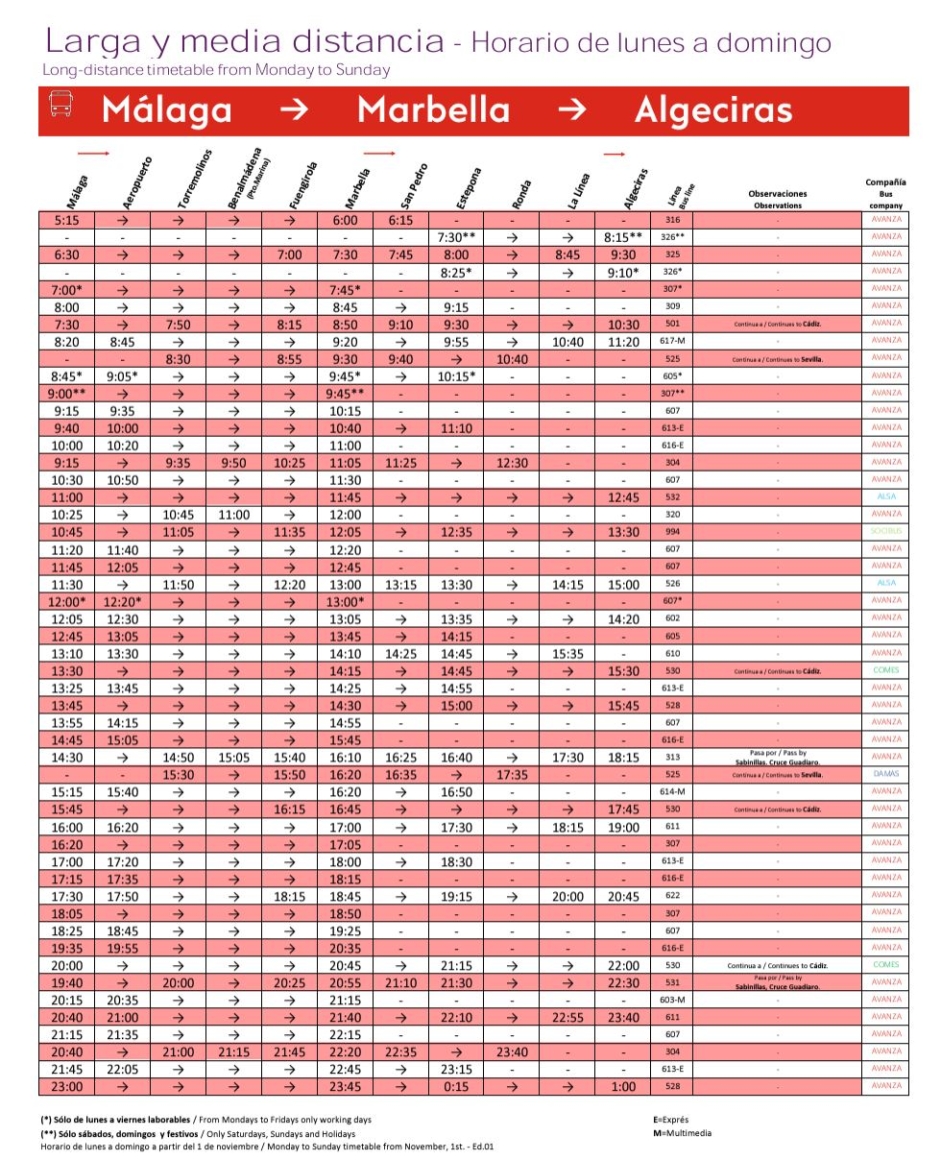
Check those that show times both from the airport and to where you want to go. I assume arrows means no-stop, times mean stop / arrival times and a dash means the bus doesn’t get there. Right after Algeciras there’s a field with tiny, tiny numbers – these are the bus lines you are looking for! As this information may vary overtime, don’t trust the list I put here too much; follow the steps I did to find this pdf in Avanza to get data straight from the source. 😉
Conclusion
Right, now let’s do a test! Just kidding; I feel more like eating spaghetti, after all those lines. I hope we untangled the buses a bit, but at least now we have a lot of relevant information about buses in the Costa del Sol linked in one page. That’s a win! Don’t forget to bookmark this page, so you get a bit less lost when riding the buses around the Costa; and if you know more or want to know more, please leave a comment – let’s improve this mess together!
